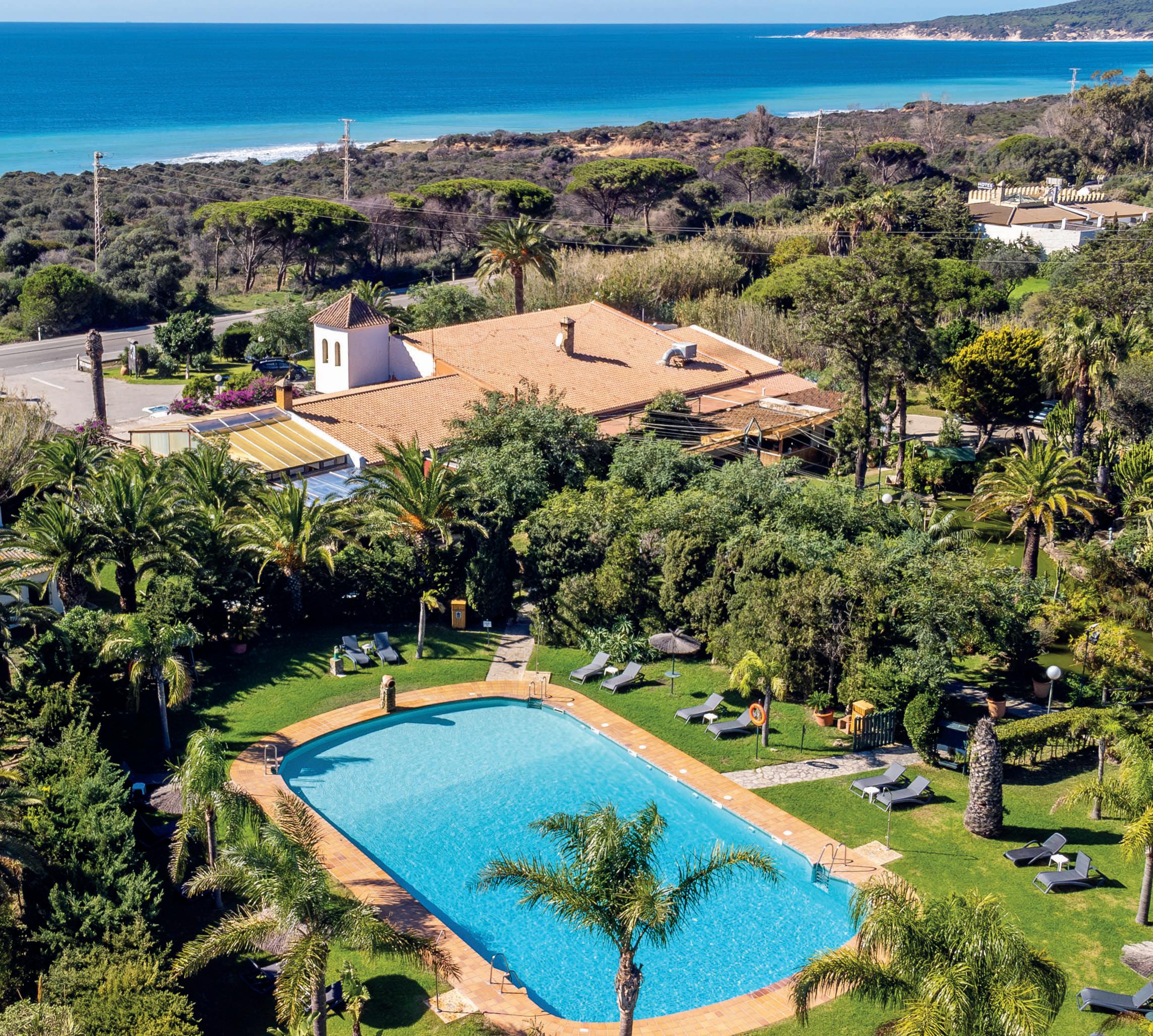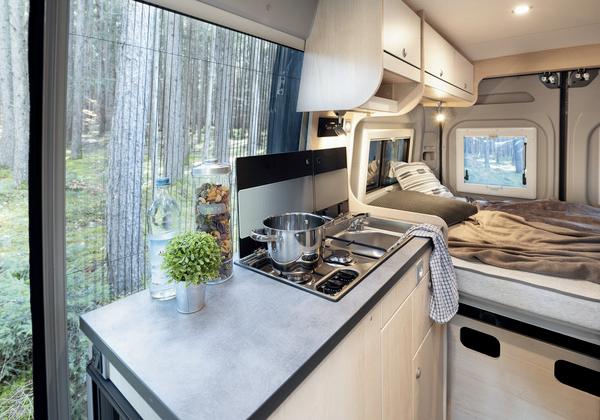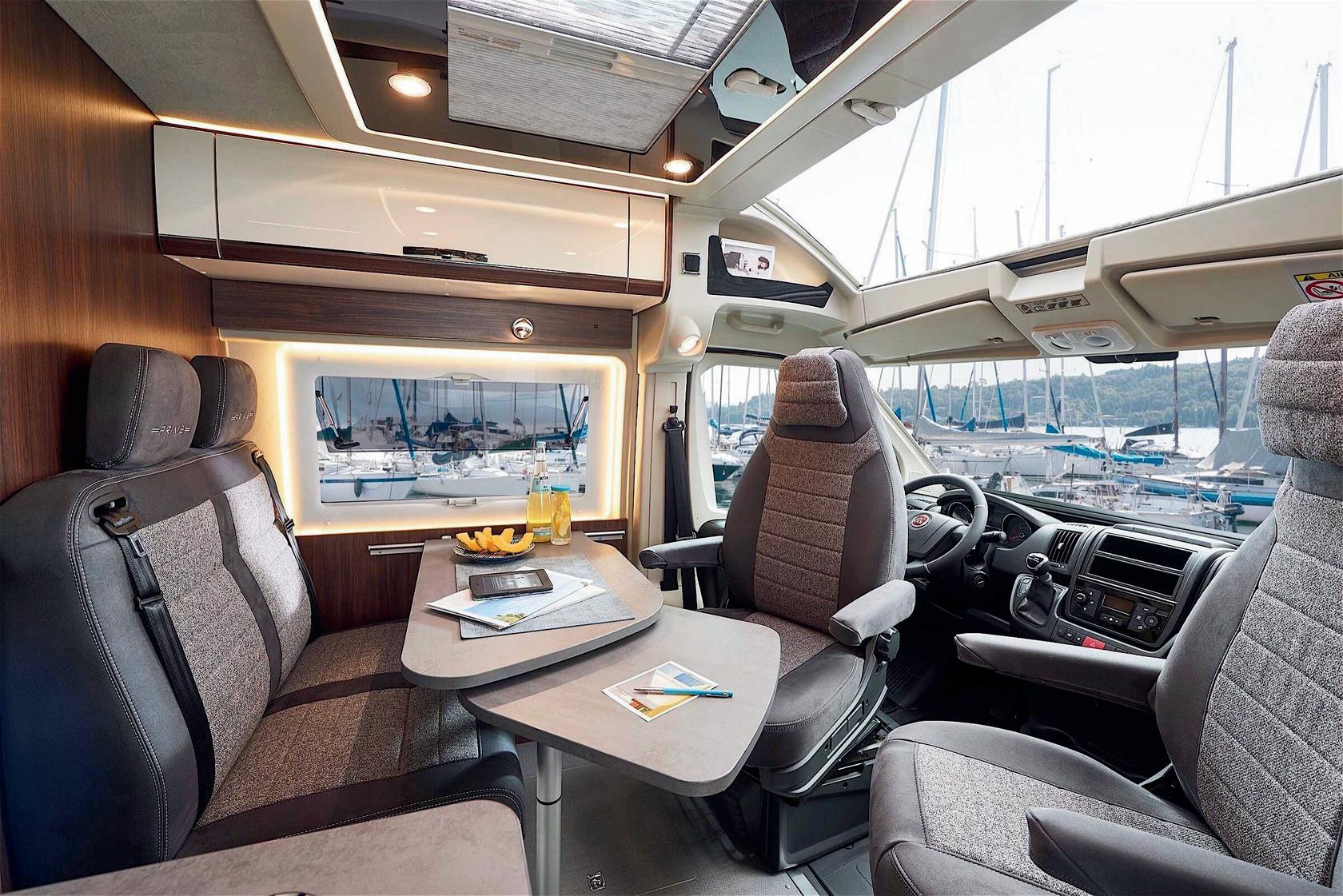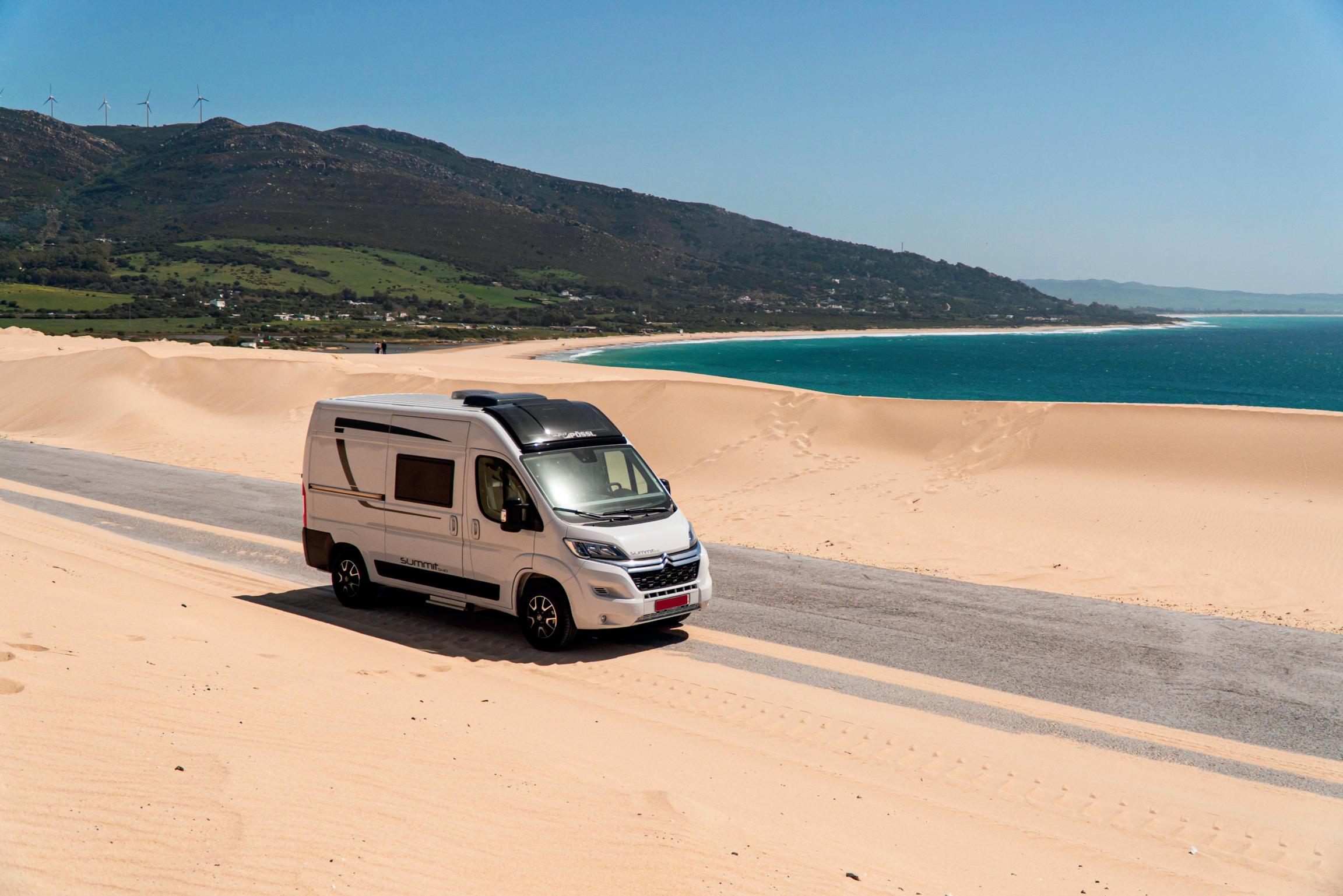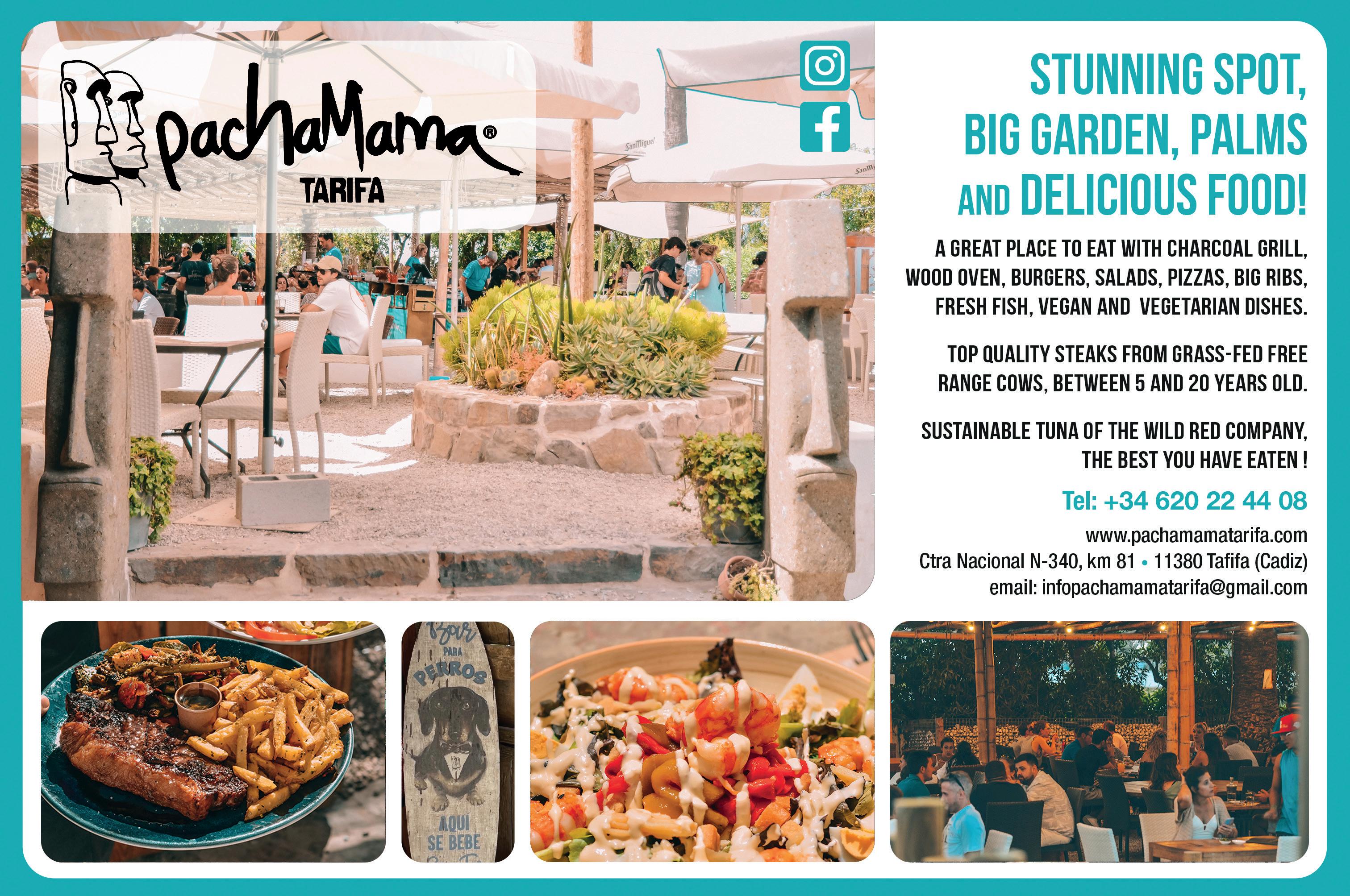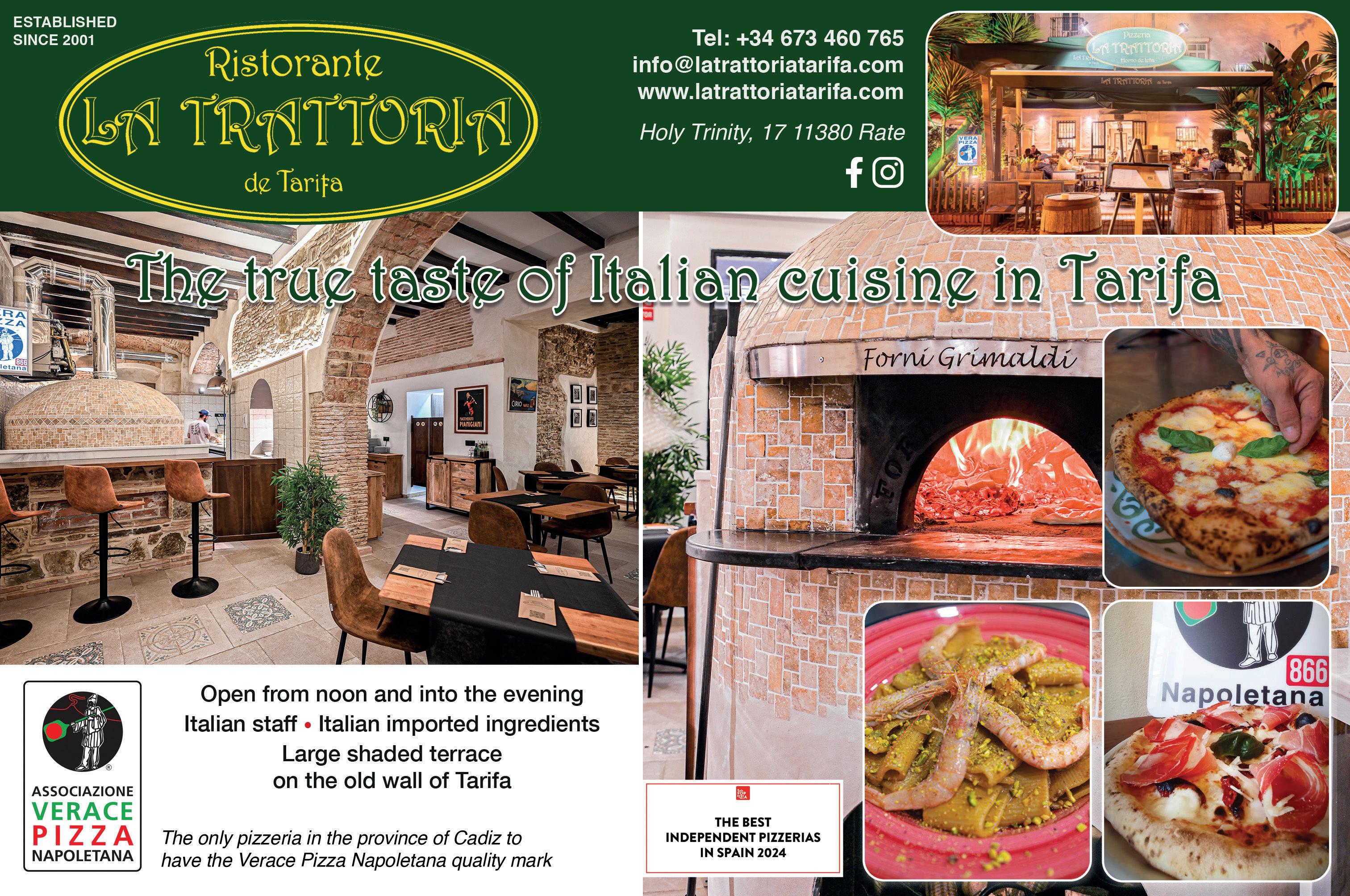Costa de la luz
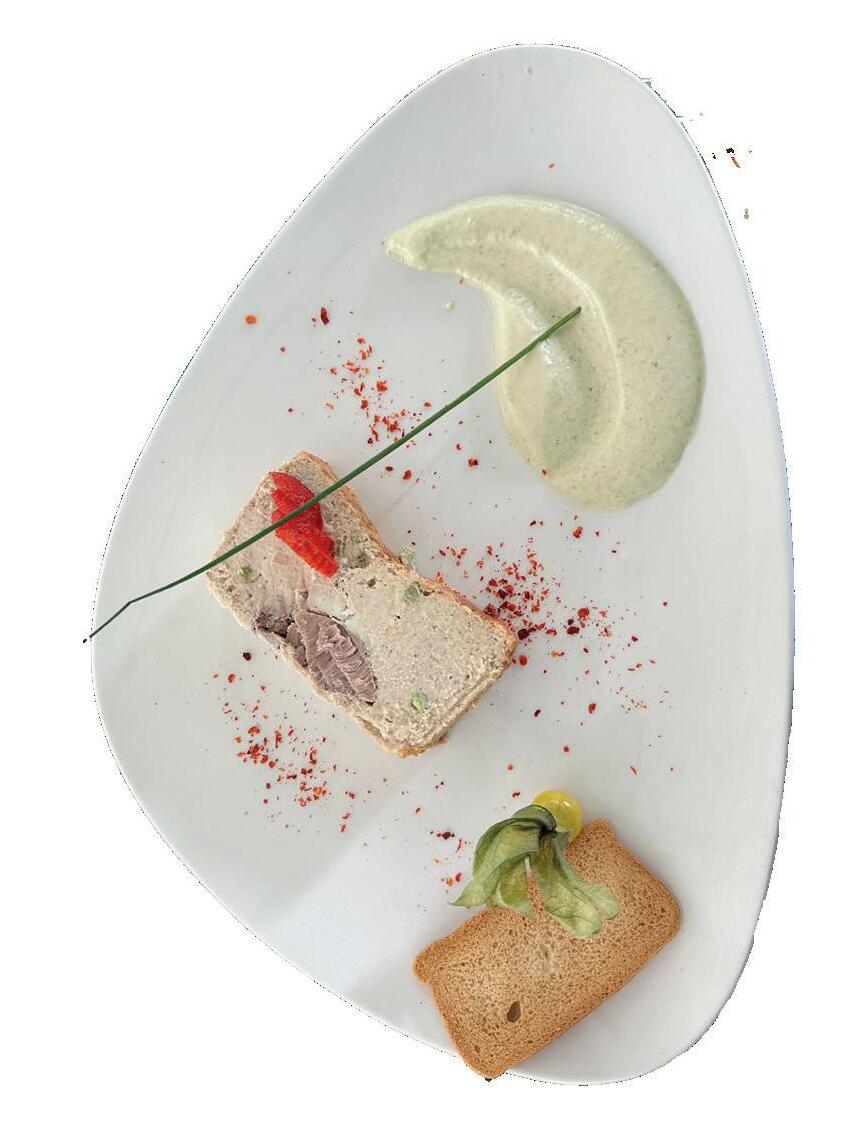
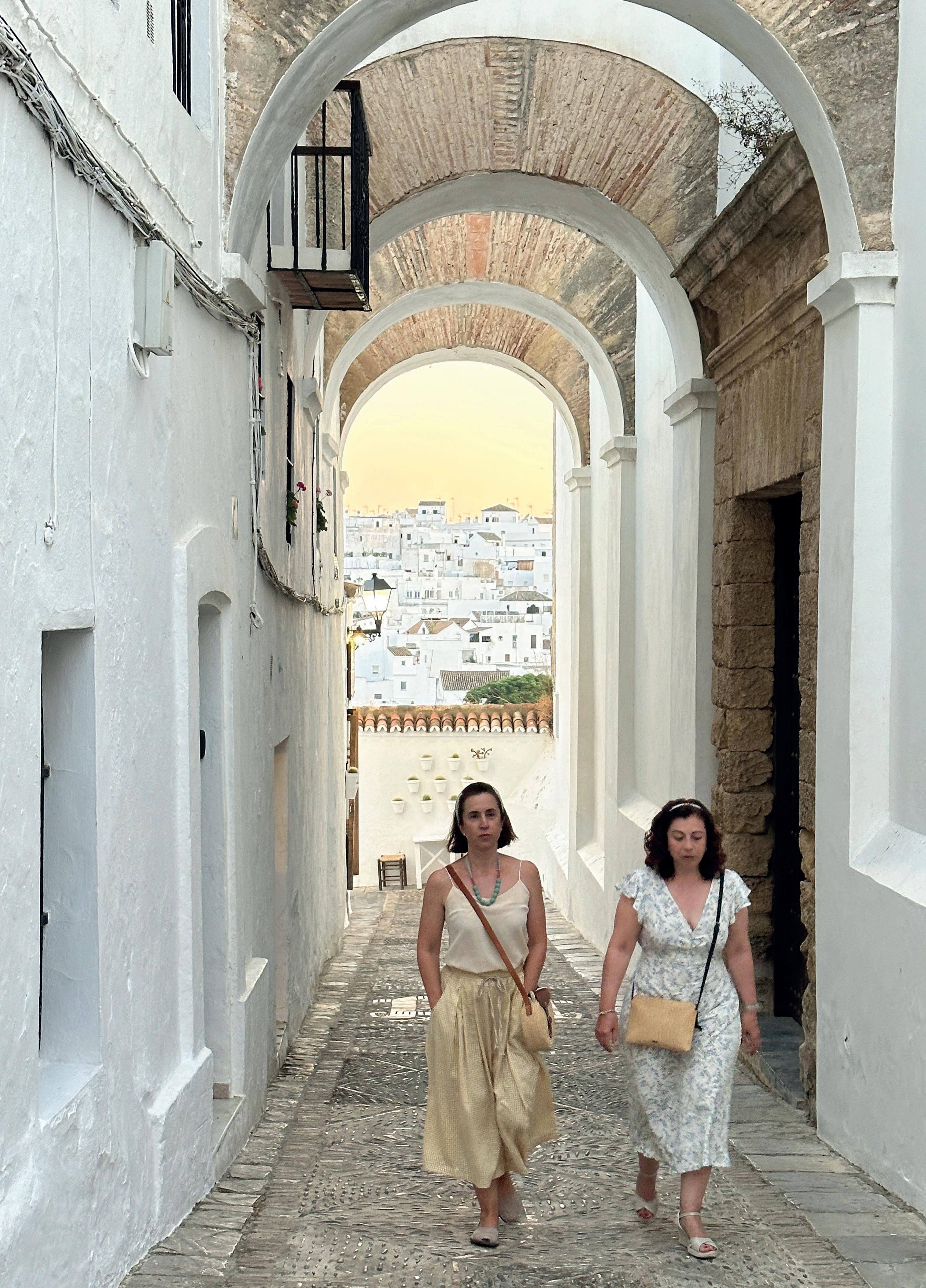
WHILE it’s blowing a hoolie outside and well over 35 degrees in the sun, I’m sitting in deep shade and wondering what amazing culinary creation is going to appear next on my table.
This is La Traina, in Zahora, one of the true dining secrets of Andalucia.
Tucked away down a scruffy potholed lane somewhere between Vejer de la Frontera and Zahara de los Atunes you are not going to find it by accident.
THE LIGHTNESS OF BEING
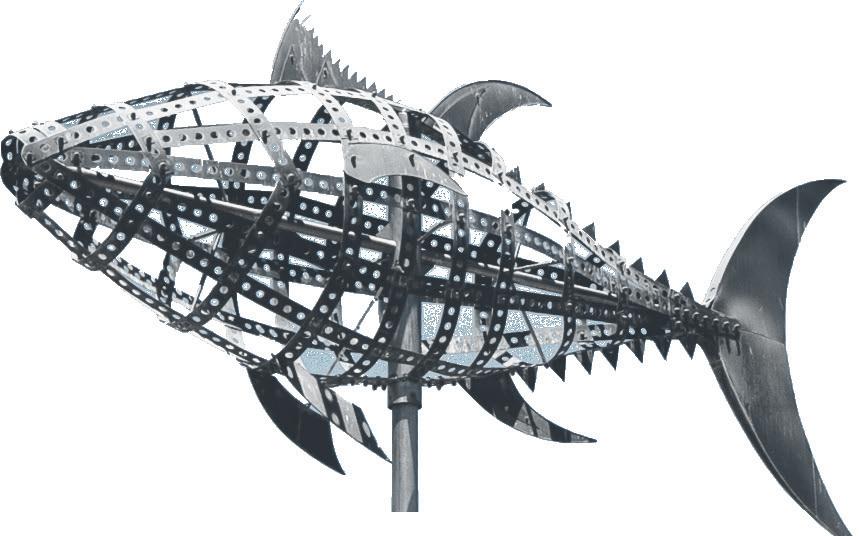
Southern Spain’s most evocative coastline is bright, breezy and brilliant for walking, eating and watersports, writes Jon Clarke
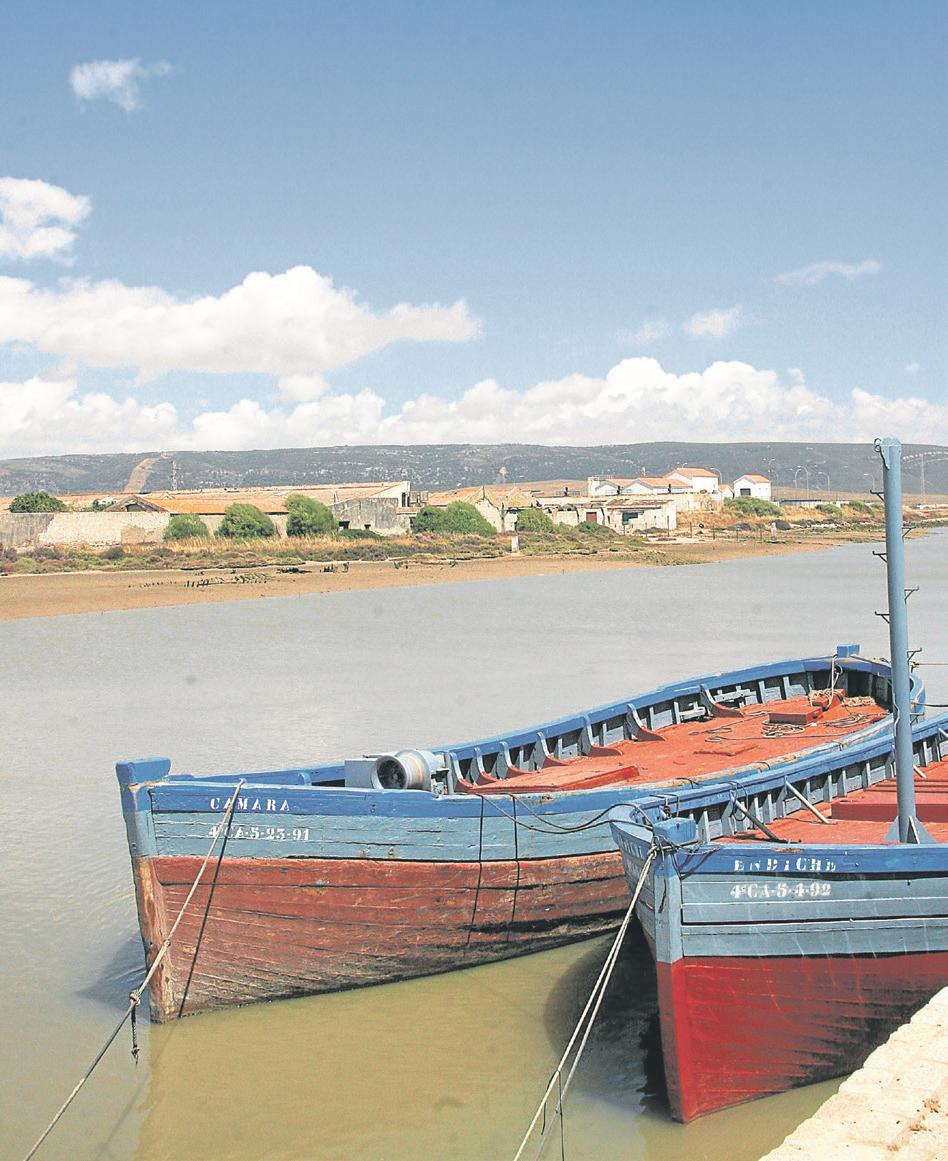
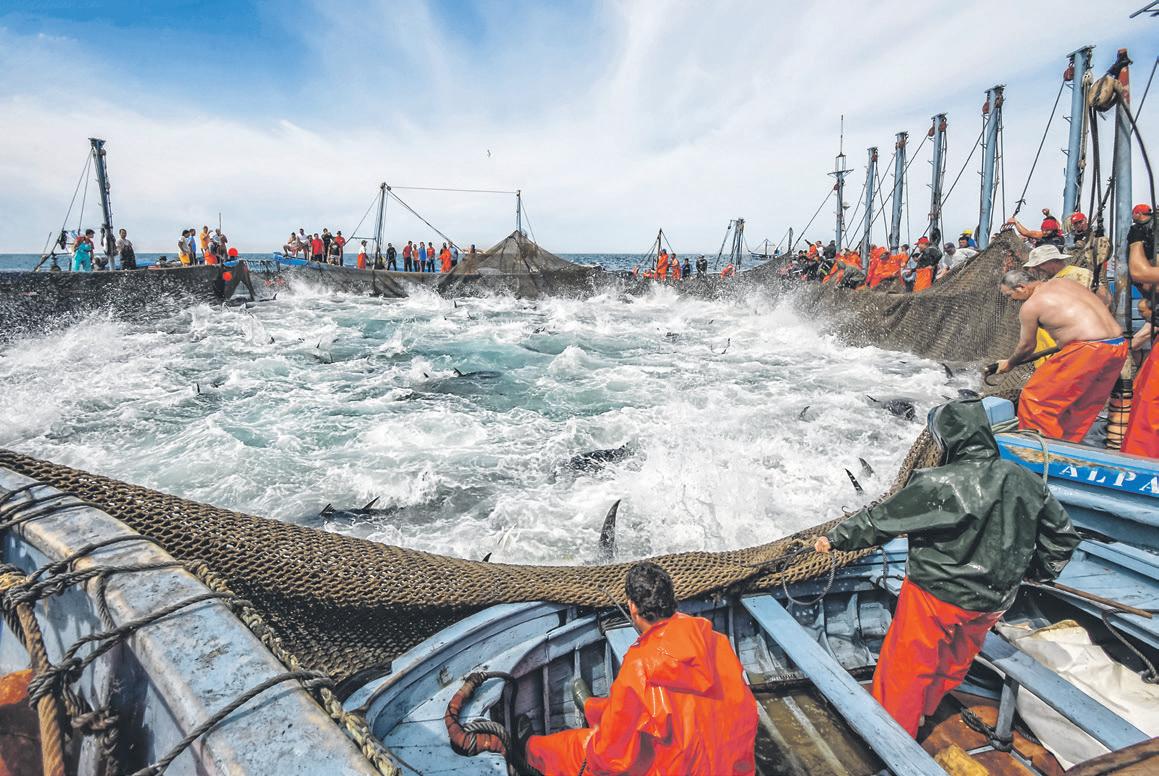
Recipe for success
THE Costa de la Luz’s celibrated culinary prowess is down to the local surroundings, which produce some of the best quality in- gredients in the world.
The obvious examples are sherry, fish and the wonderful beef from the classic brown ‘retinto cows, which you often see wandering around in the hills and even on the beaches.
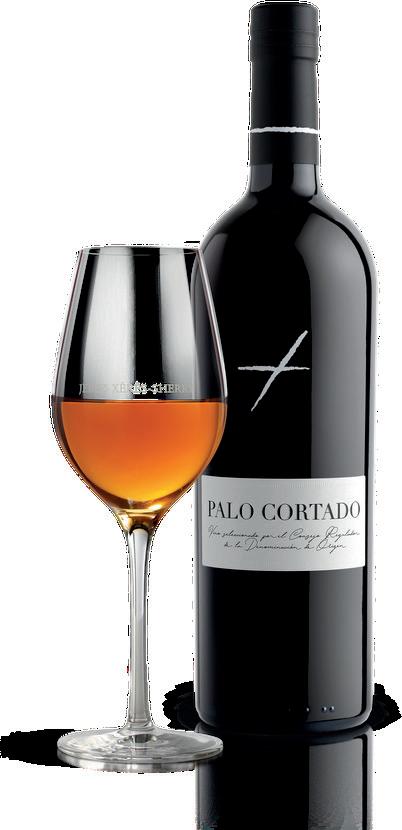
By Jon Clarke

And don’t expect silver service and menus in English or German…This is, after all, the Costa de la Luz - the Coast of Light - and a million miles away from its nearby cousin the Costa del Sol. Indeed the costas in general. This is a coastline of castles and carpaccios, calas and corvina (one of its
best local fish)... the perfect blend of nature and its best ingredients. This is a coastline of gems; histor ic Tarifa, the bridgehead for the Moors in Spain, and a crossing point for centuries and beautiful Vejer, with its cobbled streets and dynamic restaurant scene. This is a coastline of laid
Of course the amazing ‘almadraba’ bluefin tuna (top), caught nearby (above), is spectac- ularly good and the vegetables available are also of a high quality, particularly from Conil. Another reason is the type of tourists who visit the coast, which has seen a distinctly more refined crowd than its nearby rivals on the Costa del Sol. They demand quality and are pre- pared to spend to get it.
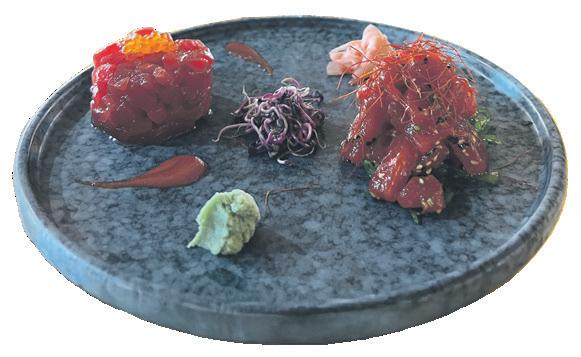
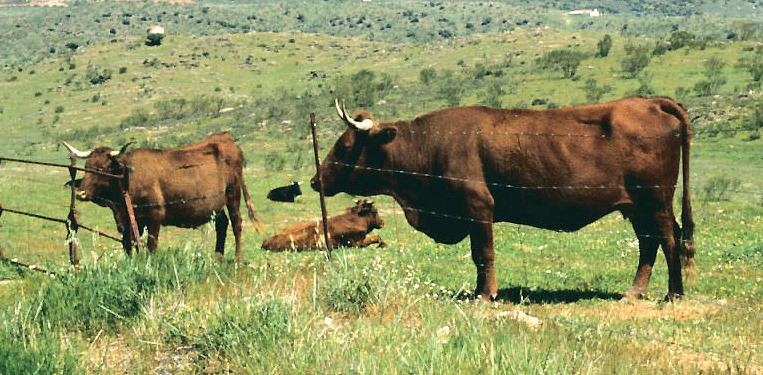

Costa de la luz QUIRKY AND LAID BACK
back, low rise resorts; Roman Bolonia and the biggest sand dune in the world, entertaining El Palmar, with its party
crowd and surf, and alternative Canos de Meca, with its quirky, laid back feel. But what best sums up this long stretch
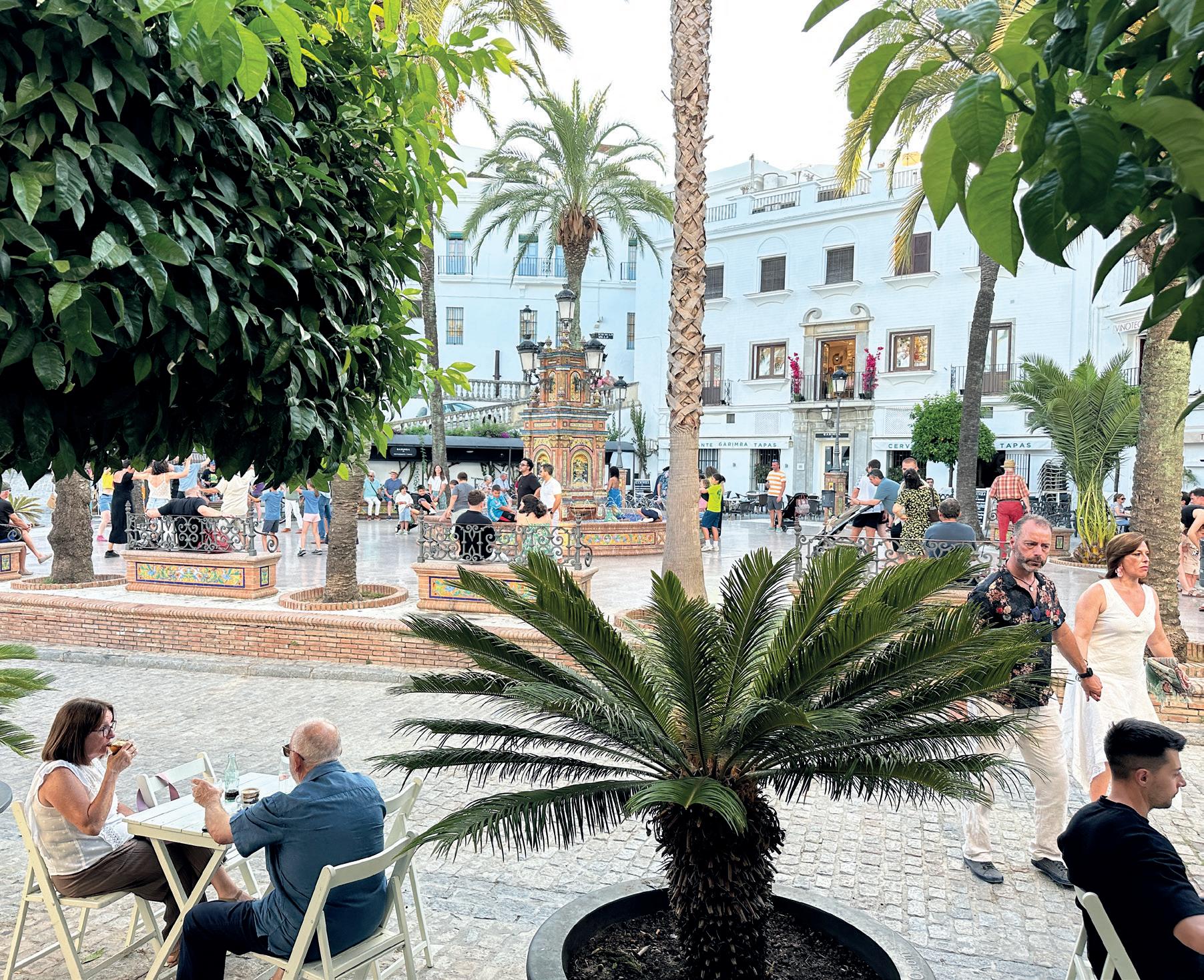
of coastline for me is restaurants like La Traina, or other hidden spots like Patria, Castelleria or Punta Sur.
These are right at the top of their game and all sit in leafy gardens, often high in the hills and sometimes with views to die for.
But even better they are surrounded by southern Spain’s most evocative stretch of coast, a canvas of contours and colours, a backdrop of Africa, and all illuminated by the most extraordinary changing light.
It’s everything you could want for a beach holiday: Long, unspoilt (and often empty) beaches, windswept sand dunes and a smell of mimosa and rosemary, alongside shady umbrella pines. Practically unique to Spain these days, and sadly busier and busier each summer, what you really need to do is ex-

One of my favourite drives is the 15 minute journey from Zahara to Barbate. I actually walked it this Spring, but you’ll need a couple of hours.
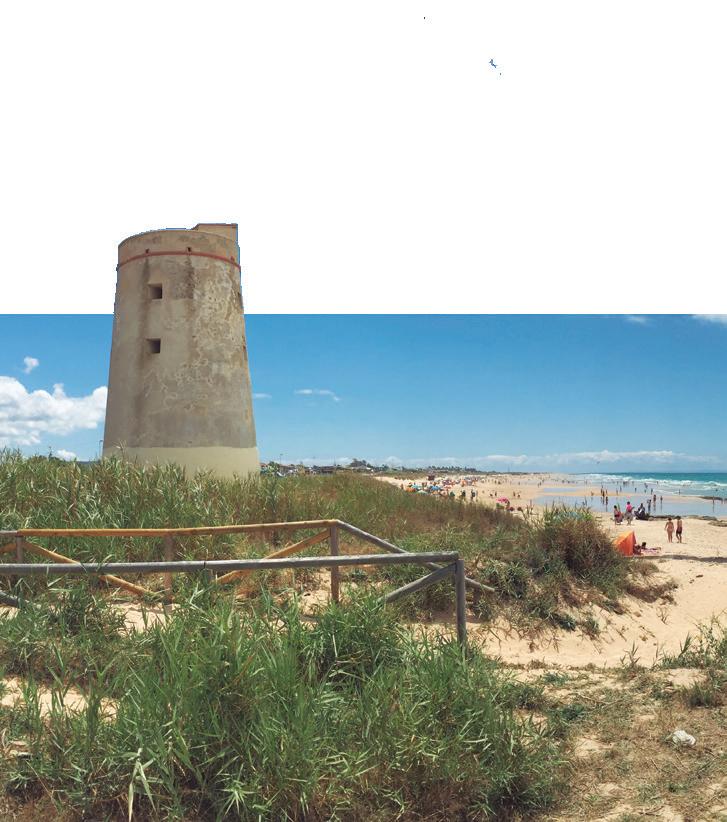
A genuine tardis between two worlds, Zahara is the quintessential home of affluence; a golden magnet for stylish restaurants and a flotilla of Range Rovers and Teslas come peak holiday season.
In contrast, Barbate is a new town created by dictator Francisco Franco, a pockmarked working class place with high unemployment and ugly 1960s tower blocks. What they share though, is privilege. A surrounding patchwork of greenery and long, unspoilt beaches, only broken up by inlets from the sea and a forest of pines. This is what much of Andalucia’s coastline
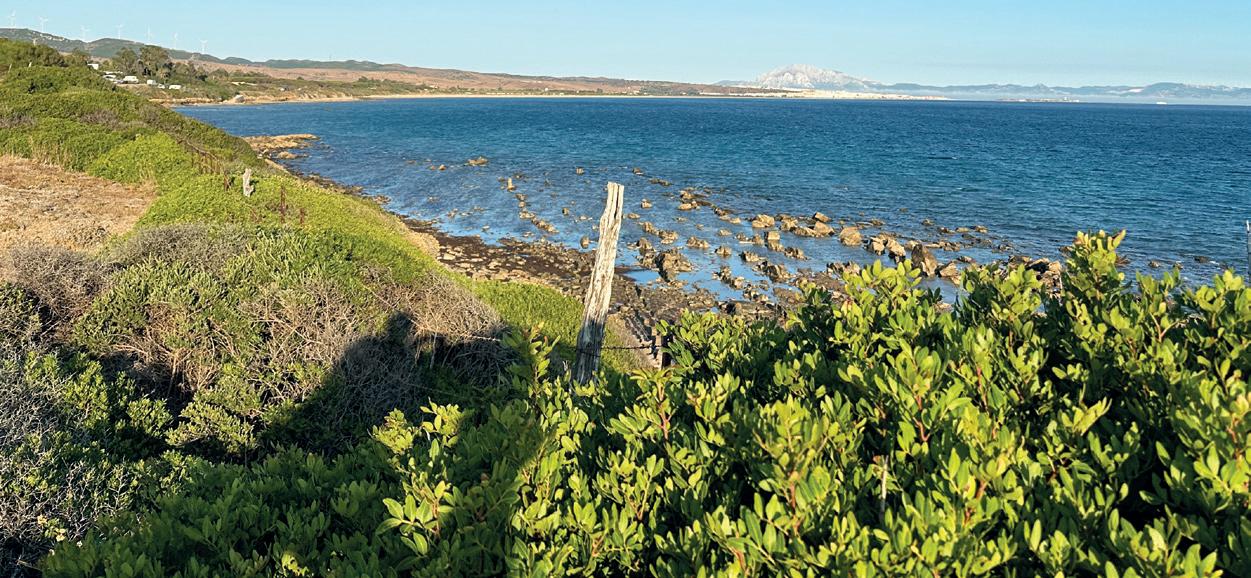
From
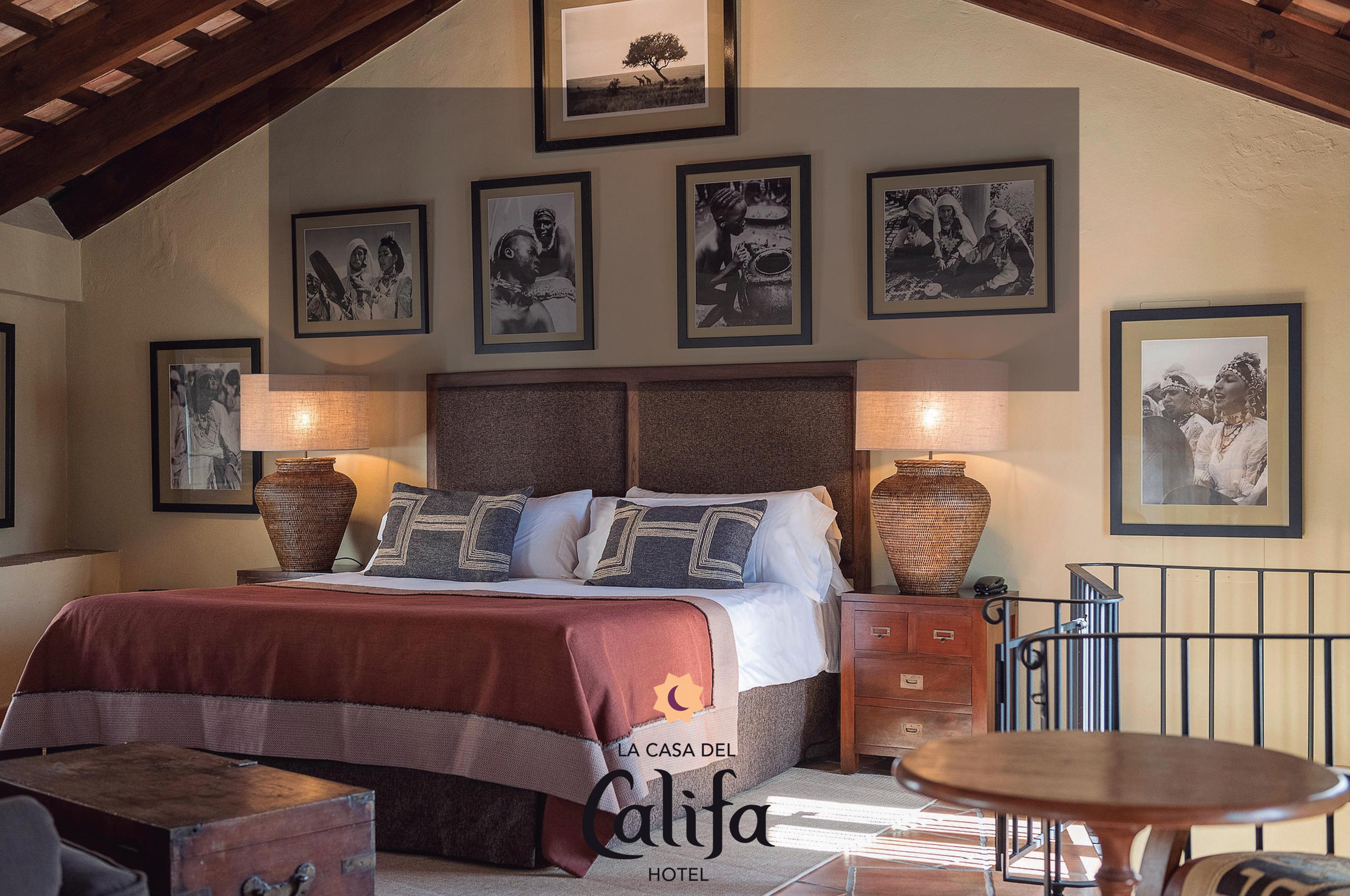

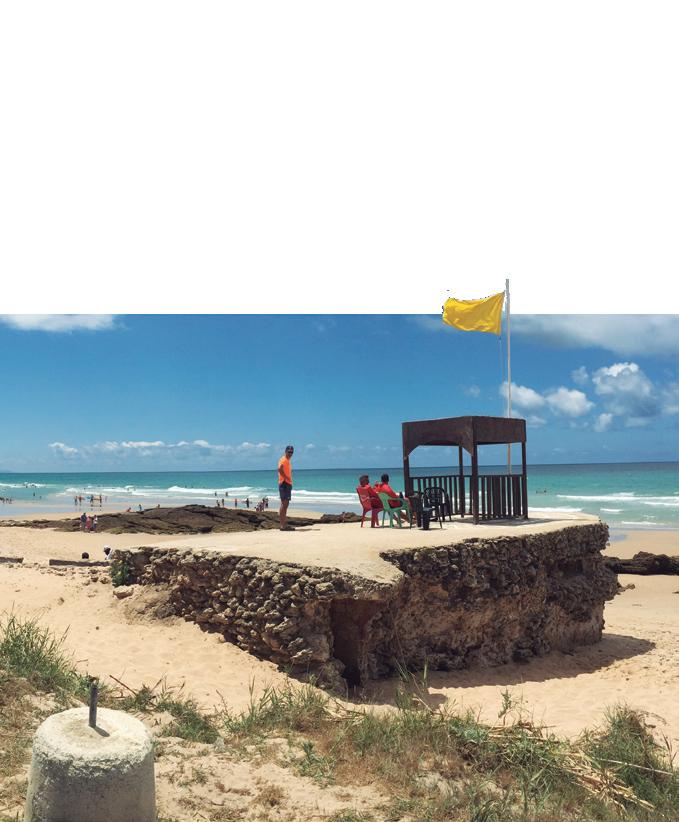
would have looked like half a century ago, with only the Cabo de Gata in Almeria coming near to match its beauty.
What this stretch of coastline has in particular though is a

variety of ancient and historic towns and villages.
Laid back and unshowy, its friendly, unfussy locals complement the breathtaking scenery and distinctive vibe.
Vejer, in particular, has an incredible mix of stylish boutique hotels and one of the best selection of high quality eateries in all of Andalucia (see overleaf).
Tarifa has an altogether different feel. This is a town for watersports lovers and a place to party, especially in summer, when it is heaving with buzzing nightspots open until the early hours.
But it also has a melting pot of worldly Spaniards and expats, who make for a distinct Tarifa scene, also with its fair share of restaurants and shops.
It is also one of the few towns in southern Spain – thanks in large to its wind – that still has a bit of life in the winter.
It also has a fair share of history with the Moors first arriving
in Tarifa in 710AD making it their main bridgehead into southern Spain.
The Moors ruled this land for nearly 800 years and its historic ramparts are littered with references to the stirring catholic heroes who battled them, some with statues, including Sancho El Bravo and Guzman el Bueno.
There’s a kind of untouched purity to the place
You’ll love its ancient old town gateways, and the narrow cobbled streets of its old town, which still include an ancient fish market and plenty of fascinating buildings.
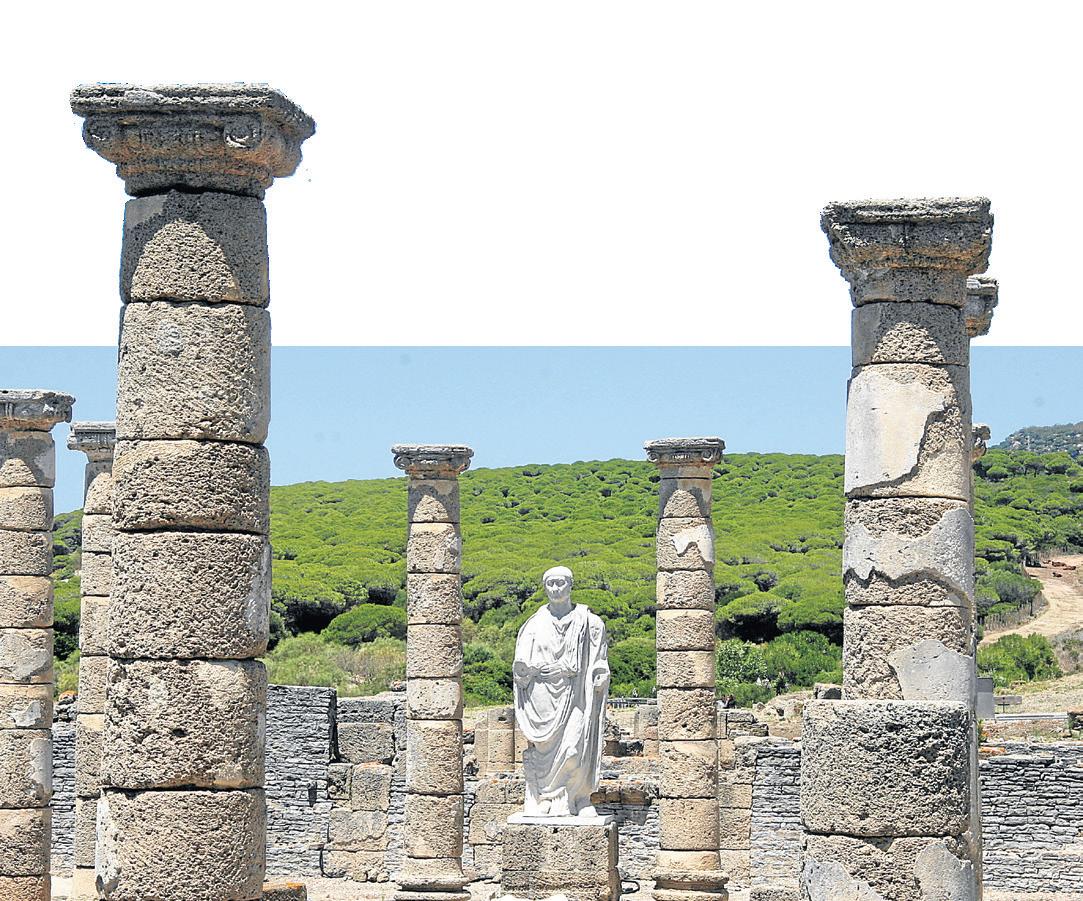
Heading up the coast from Tarifa, history lovers must seek out the famous Trafalgar lighthouse – off which the key naval battle once took place as well as the
ancient fishing village of Sancti Petri, near Chiclana. Chiclana’s eight kilometres of golden beach meanwhile remain refreshingly uncrowded - populated mostly by Spanish families from inland cities like Sevilla. There’s a kind
of untouched purity to the place. The town centre offers a maze of Moorish-era alleys and historic buildings, like the clock-tower gate of Arco Torre del Reloj. Next door Conil meanwhile is an attractive place that hugs its own beach.
Renowned for the local seafood it was crowned the 2024 Gastronomic Town of Spain and also has a vibrant nightlife scene.
Look out for the Torre de Guzman, an old military fortification dating back to the 14th century.
SECRET SPOTS
One of my favourite must visits on the Costa de la Luz are the Roman ruins at Bolonia.
This well preserved museum showcases the success Roman merchants had on this stretch of Cadiz coastline and the nearby beach and its giant sand dune warrant a half day at least.
Best of all, is the half an hour walk from Bolonia to secret El Canuelo beach, where you will find just cows, the celebrated brown retinto kind of the region. I also love the amazing walk through umbrella pines to the Torre del Tajo,
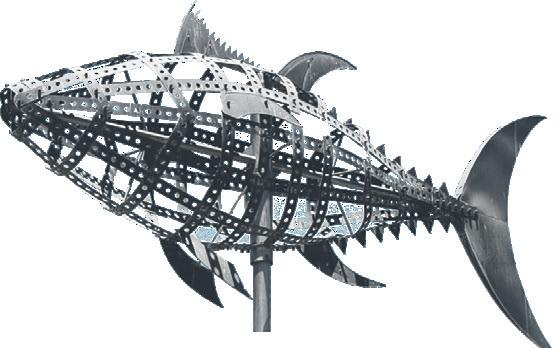
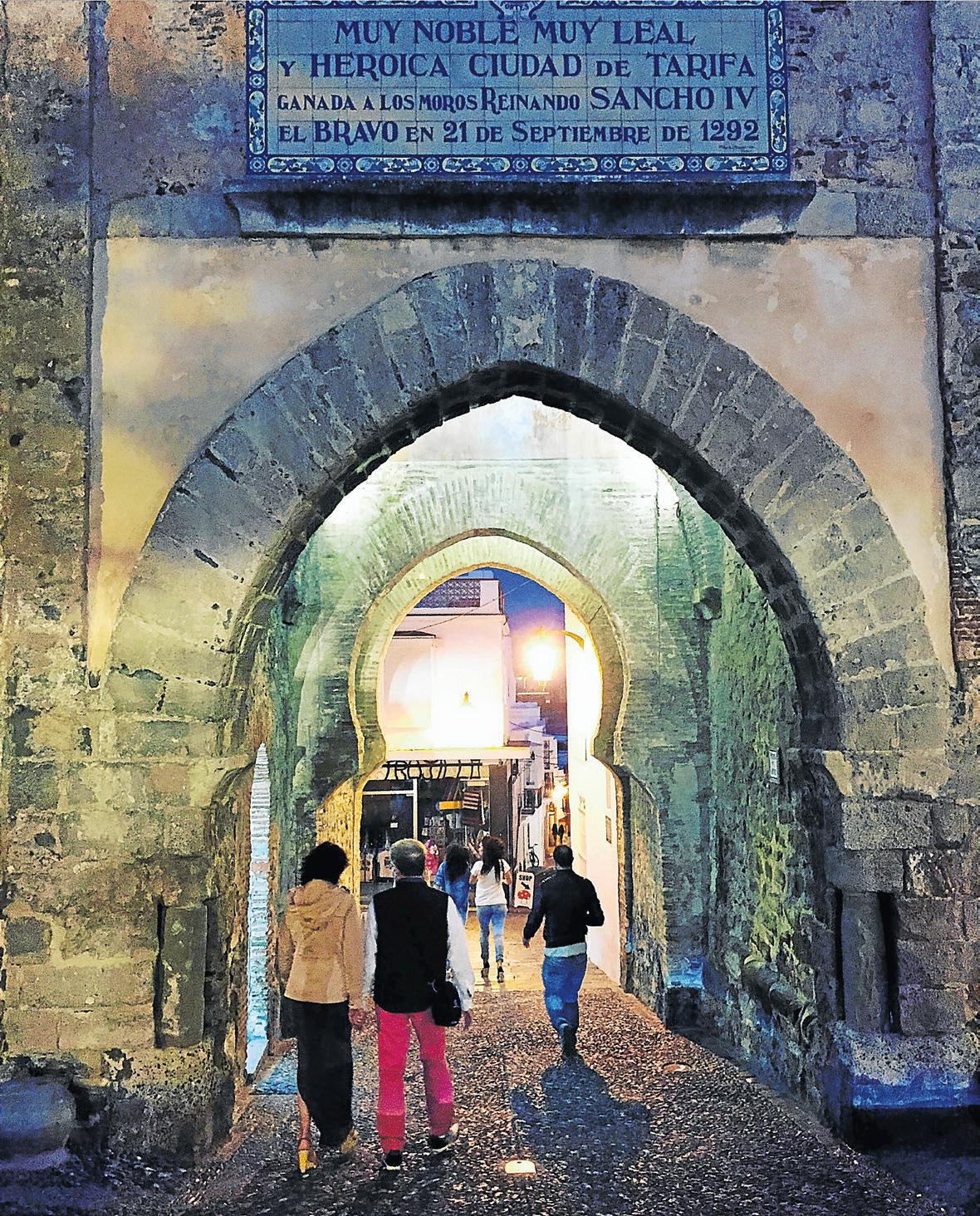
nia. And, if you are still looking for more, how about San Fernando?
This is where Camaron de la Isla, the legendary flamenco singer, hails from. His childhood home now functions as a somewhat sanitised museum and this is a little-visited town with plenty of in-
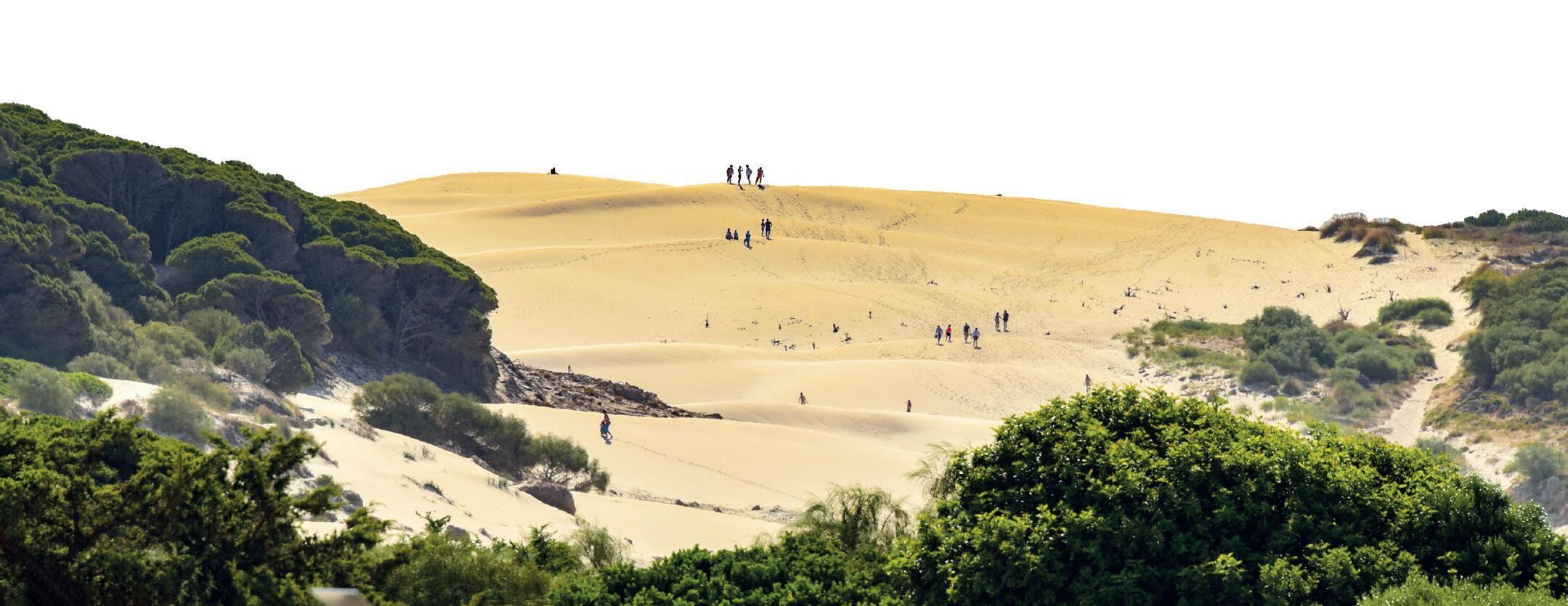
THE COAST WITH THE MOST
THE Costa de la Luz officially stretches for around 200kms all the way from Tarifa up into Huelva and to the border with Portugal.
whitewashed homes sit beside an imposing American naval base - one of the largest in Europe.
And let’s not forget the grand old city of Cadiz, said to be Spain’s most ancient and big back in Phoenician time. Oh the incredible lightness of being! teresting nooks and crannies. Further west, Rota offers an unexpected blend of beach life and military might. Here,
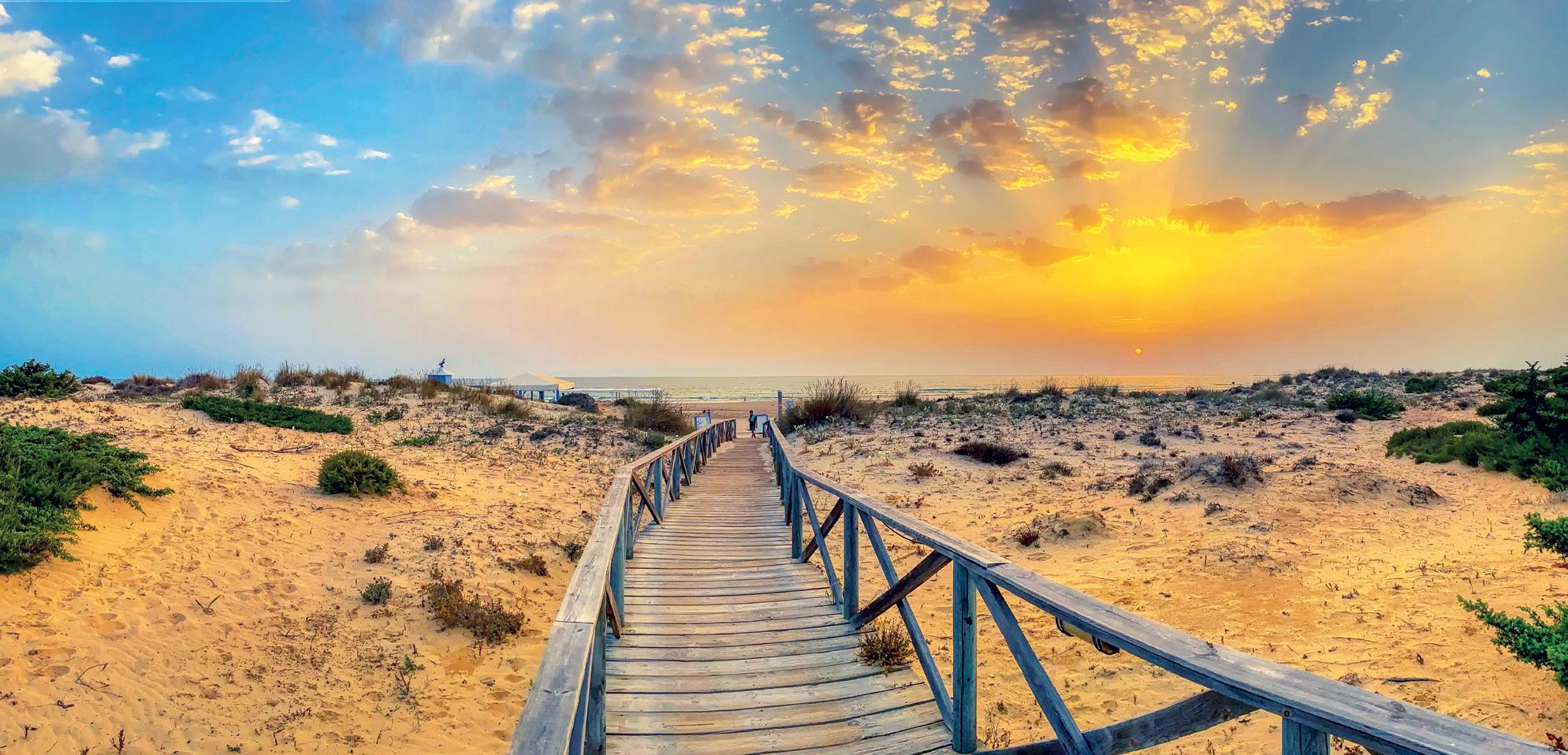
Split in two by the stunning Donana national park, the coastline also includes the so-called 'sherry triangle' or 'Cadiz coast' towns of Sanlucar de Barrameda, Rota, Chipiona and El Puerto de Santa Maria. It also includes the cities of Cadiz and Huelva.
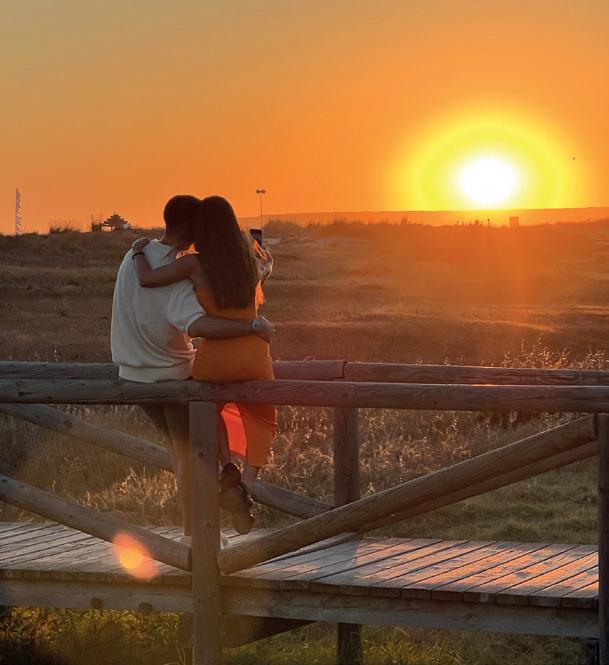
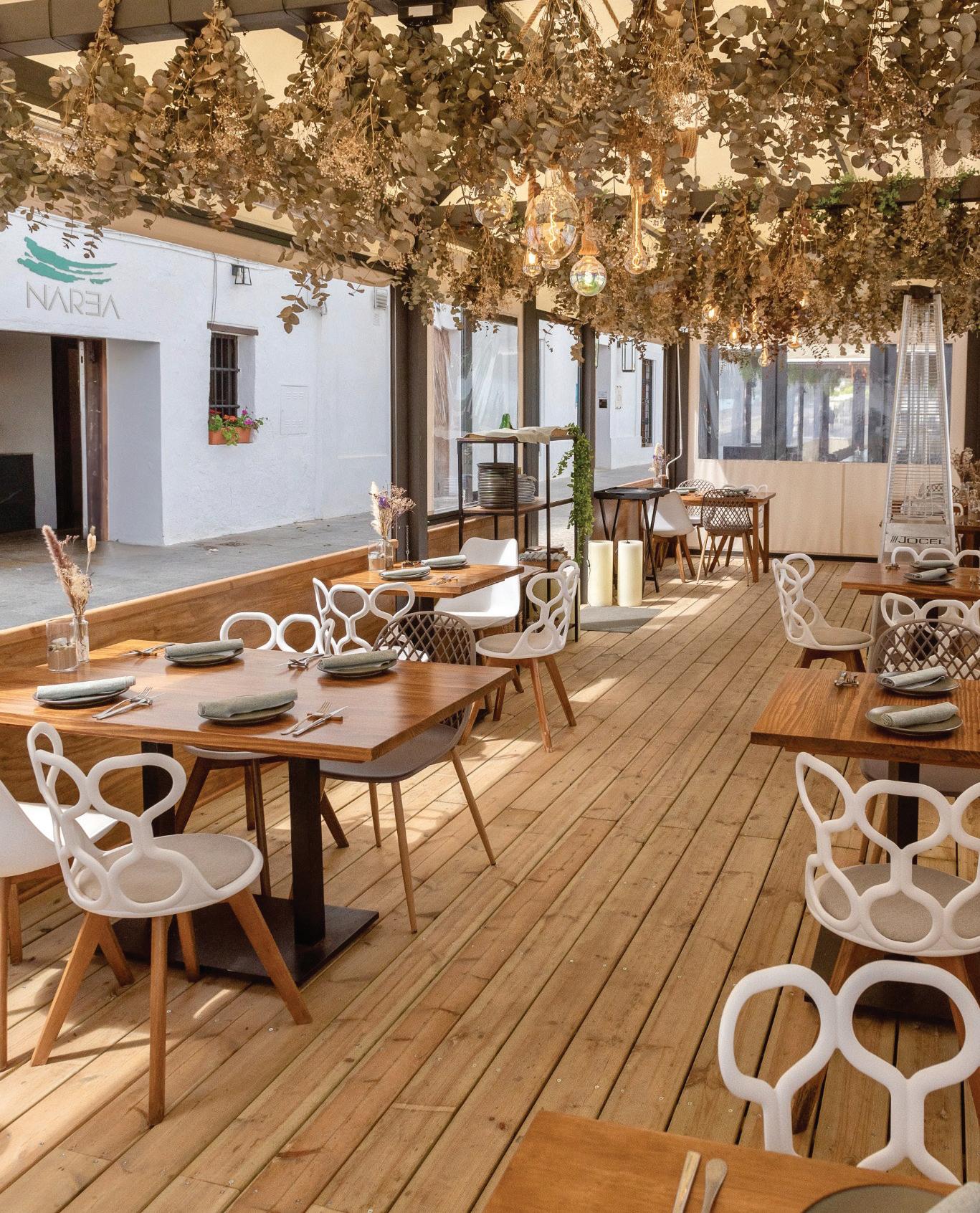

HERE LIES HERCULES!

The Romans later replaced the structure with a temple dedicated to Hercules, who they believed was buried
Deemed strategically significant, the castle became a military fortress until its decommission in 1918.
The historic site can be reached by ferry from Sancti-Petri marina or by kayak if you’re feeling adventurous and once there you will find a bar with panoramic sea views.

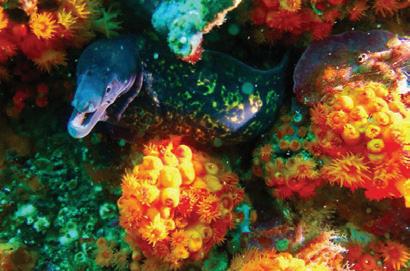
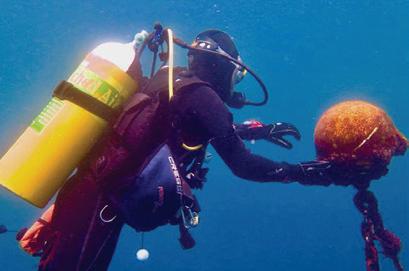
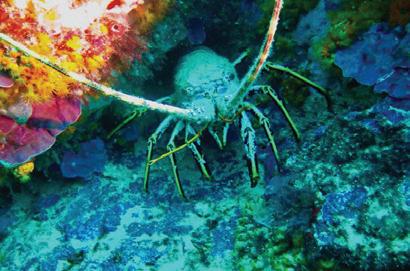
Into the depths
UNDER the sun-kissed sea there lies an alien world, teeming with colourful life that makes Tarifa’s crowded beaches and bars seem a million miles away.
Scuba diving, a thrilling yet serene sport, abounds all around the Straits, and in particular near Tarifa.
Whether you are an experienced diver or a novice, you will be struck by two underwater wow factors: the clarity of the water and the infinite variety of fish.
A number of companies oper-

ate out of Tarifa harbour taking punters of all experience levels on dives and offer official PADI courses.
After a thorough land-based briefing on safety, science and equipment from my dive manager, at Yellow Sub, one of the longest running firms in business, we kitted up and made our way to the boat.
Given that my previous introduction to scuba diving was a university swimming pool, I was blown away by the vivid underwater landscape and clear visibility. The sheer number of aquatic species of all
sizes and colours of the spectrum is astounding. We chugged around Tarifa’s mini island, Isla de la Palomas, investigating every nook and cranny, marvelling at the magnificent orange anemones clinging to the rocks.
Sassy sea cucumbers, evil-looking moray eels with their malevolent mouths agape, fish that camouflage themselves in the sand… even Sir David Attenborough would wax lyrical!
At one point we came upon a pair of octopuses entwined in a passionate embrace, and, feeling like a third wheel, I edged away, but soon realised they were fighting over the best hiding place under the rocks. It was fascinating to watch and, as the victor took up residence, the loser powered off to regroup.
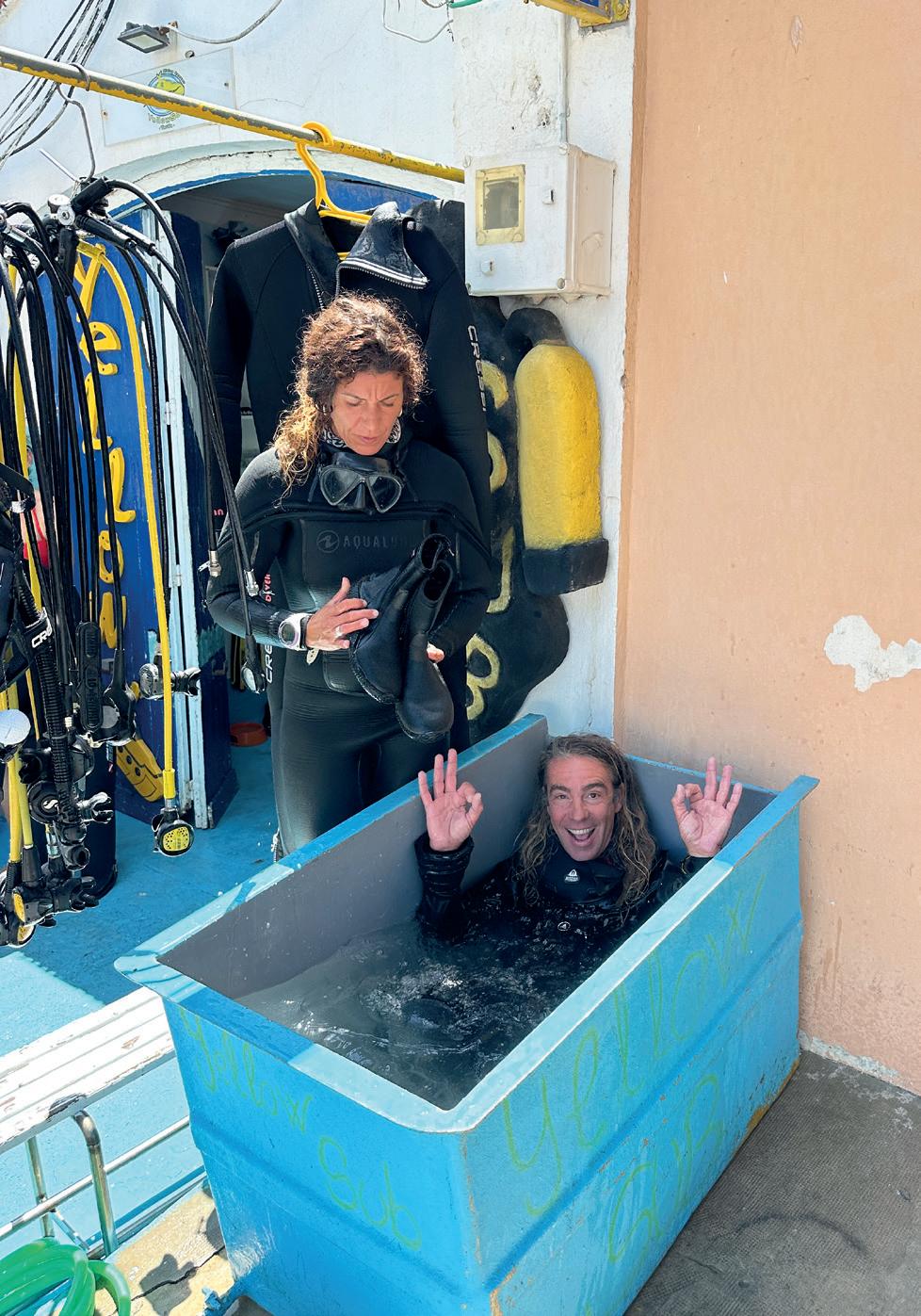
Whether you’re a rookie or an expert seeking fresh challenges, Yellow Sub, will show you a breathtaking underwater world you’d never imagine existed.
Visit www.divingtarifa.com
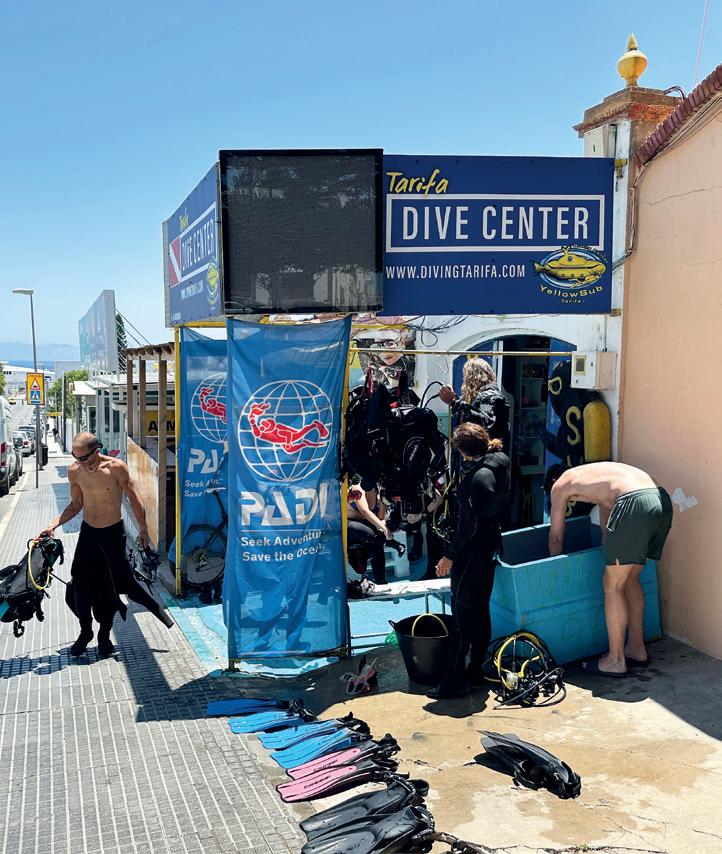
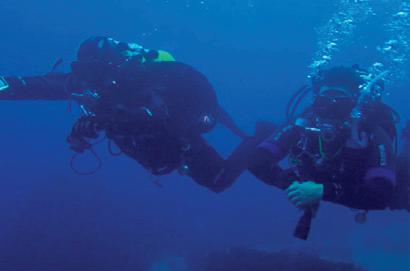
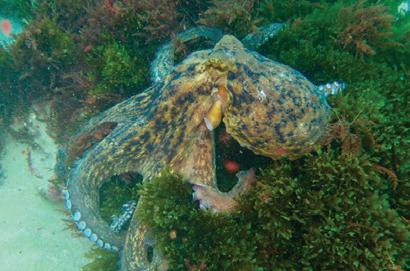
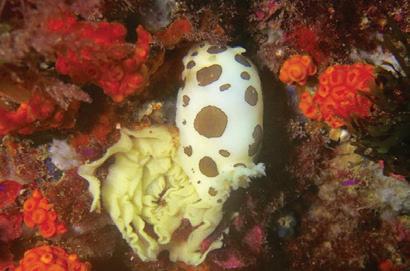


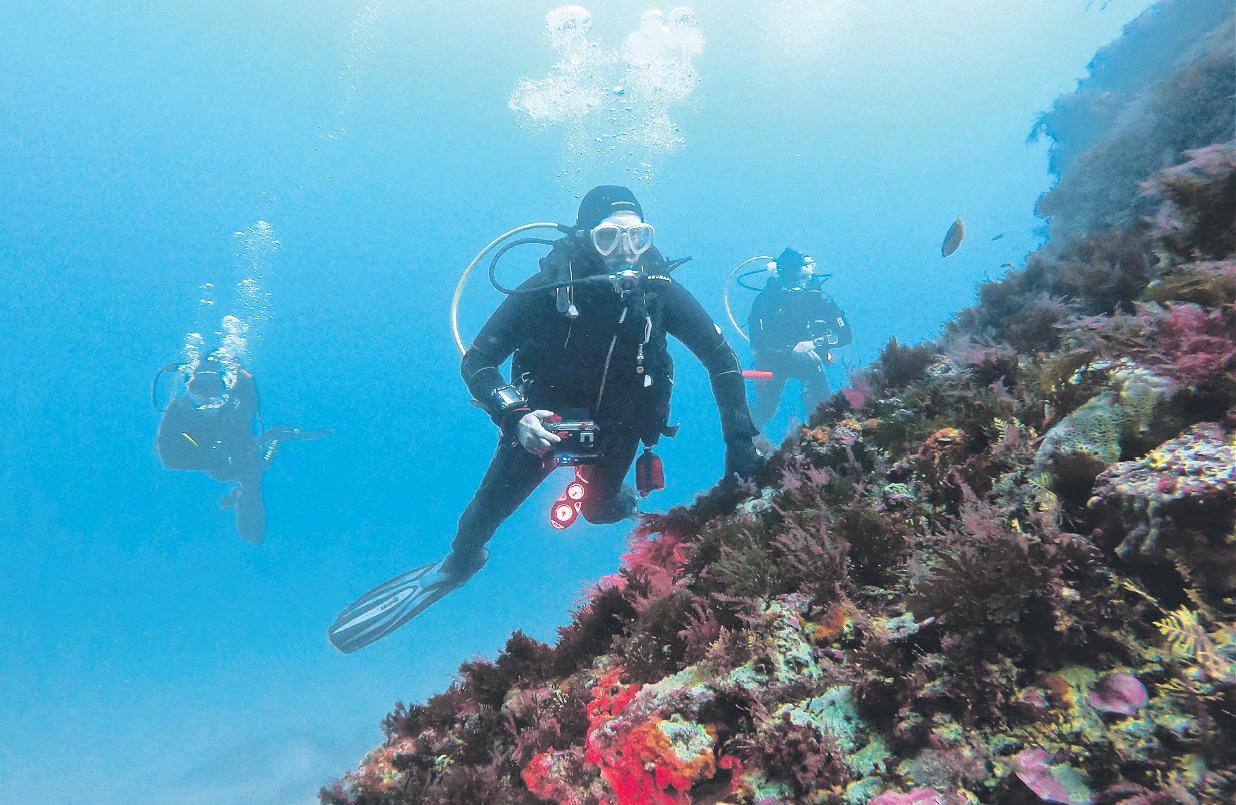
Whale of a time
WE are about equidistance between Spain and Morocco in the deepest part of the Straits of Gibraltar.
Flying fish, turtles and two types of whale are basking around, feeding and luxuriating in this food-rich marine paradise, some 15 minutes offshore from Tarifa.
And that’s not to mention the dolphins, including a pair of Bottlenose, who are shepherding their calf, that is apparently no
more than a week old.
Soon we have found a school of dolphins swimming around the boat and, being so calm, we can see them clearly under the water.
It’s an almost religious experience for the boat-load of tourists, as the stunning mammals clearly swim over to take a closer look at us.
“These two are particularly inquisitive,” pipes up a voice from the cockpit above, as one particular pair come sniffing up to the boat, then swim underneath
at an amazing speed.
The words come from Dr Katharina Heyer, a remarkable woman of 83 years of age, who has become, without a doubt, one of the world’s authorities on sea life off the tip of southern Spain. It’s her 27th year working with her company Firmm, which was set up after she was guided to Tarifa to see whales and dolphins by a ‘spiritual man’ in 1998.
Then running her own fashion company in Switzerland, she visited the area to find nobody
organising trips to see the mam mals and almost no research on them.
“I arrived on a really rainy, awful day to find no whale boats, just fishermen, and had to rent a diving boat to take me out,” she explains.
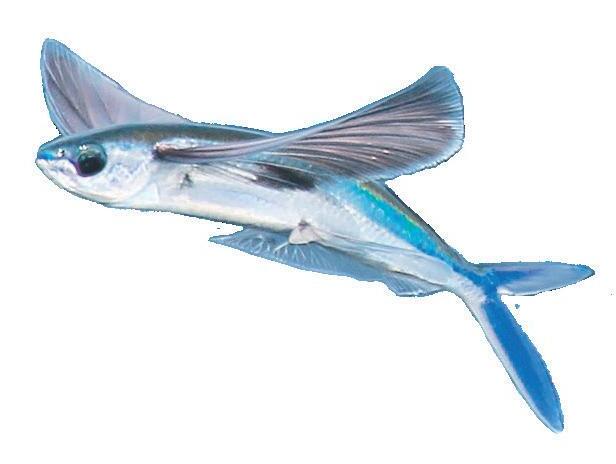
Flying fish, dolphins and giant turtles pay a visit on a trip into the Straits
and many other fish.
It is one of the best places in the world to see them, with the currents bringing a lot of food from both directions, explains Katharina.
moved out to set up her ‘respectful whale watching’ company in Tarifa and has never looked back.
It may not have been perfect weather conditions, but what she saw completely changed her for good.
While she had long enjoyed diving holidays with her teenage sons in the Caribbean and the Maldives, seeing a group of Pilot whales and Bottle-
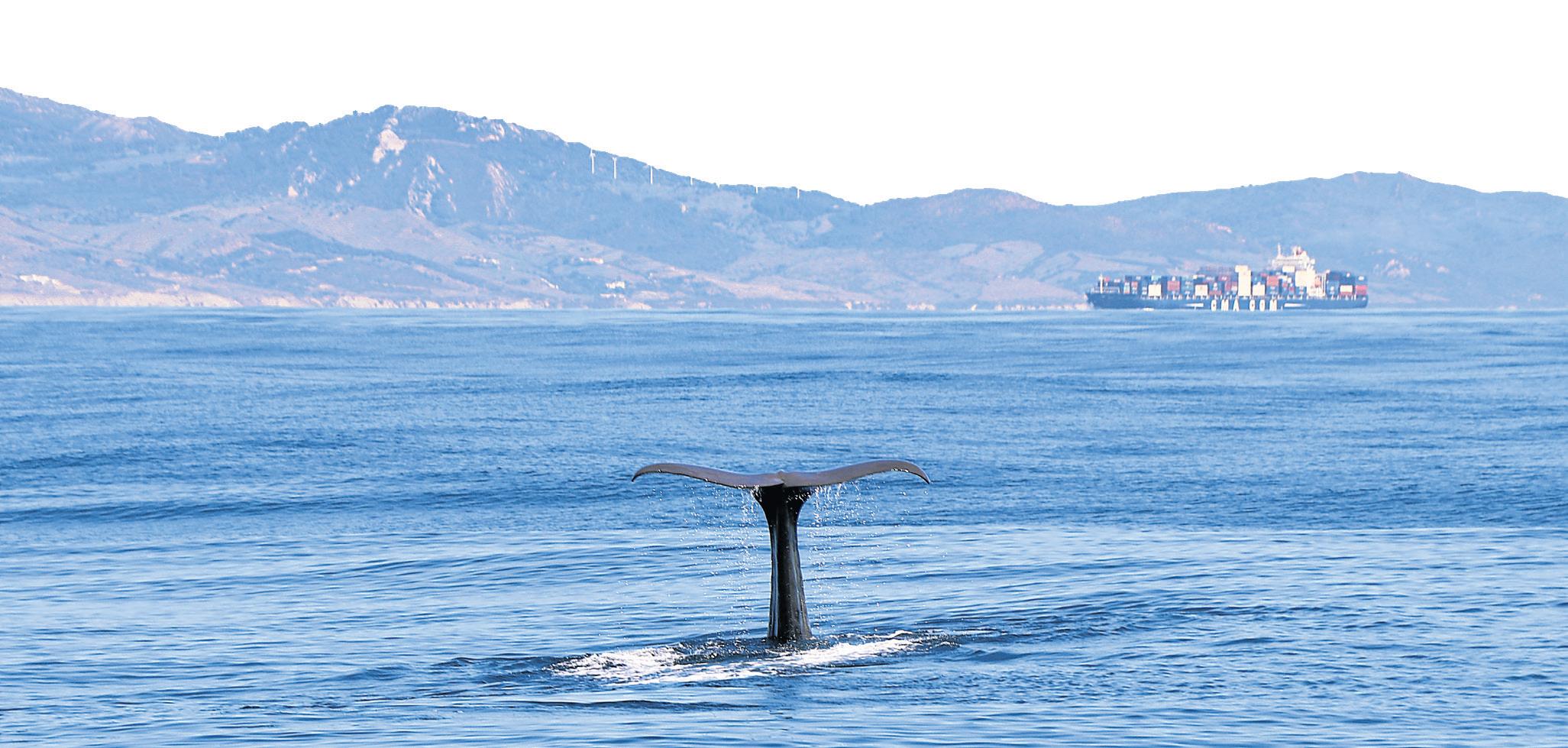
Indeed, so respected has been her research into the mammals over the last two decades - in particular her sensitization work for them – that in 2017 she was awarded an honorary doctorate from the University of Basel.
There are now a handful of companies taking visitors out to see the mammals from Tarifa, and on most days they can expect to see Sperm whales, Pilot whales and even Orcas, not to mention various types of dolphins
However, this brings in itself severe risks, as they are entering one of the busiest waterways in the world with more than 300 freighters and other sea traffic passing every day. Indeed, as you look out into the Straits you are witnessing a battle for survival.
“The lives of dolphins and whales are at risk from ferries getting faster and faster, the noise from shipping traffic and more,” she explains.
“We are trying our best to monitor their numbers and do our best to minimise the issues they face.”
Visit www.firmm.org
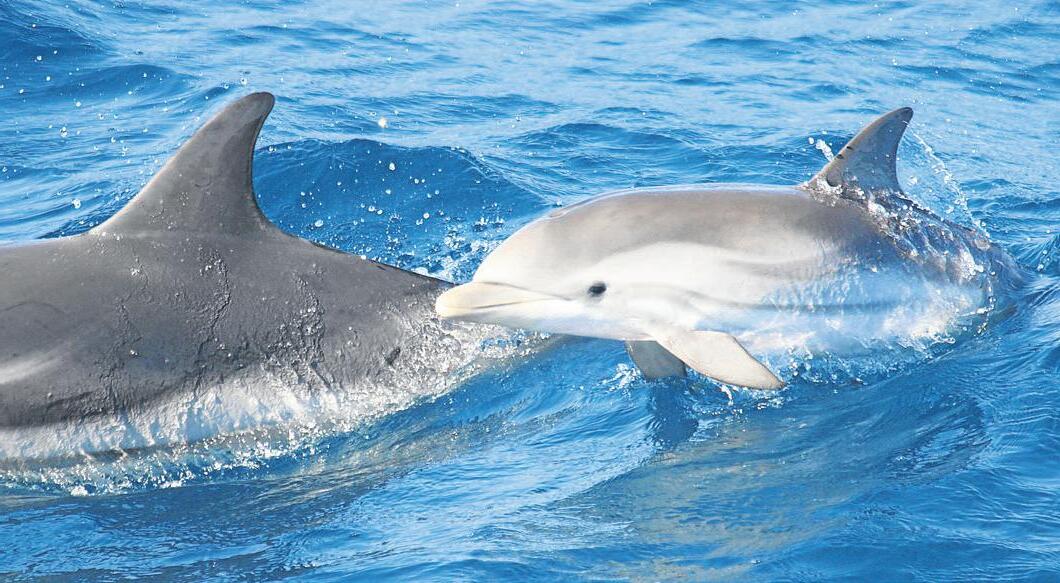
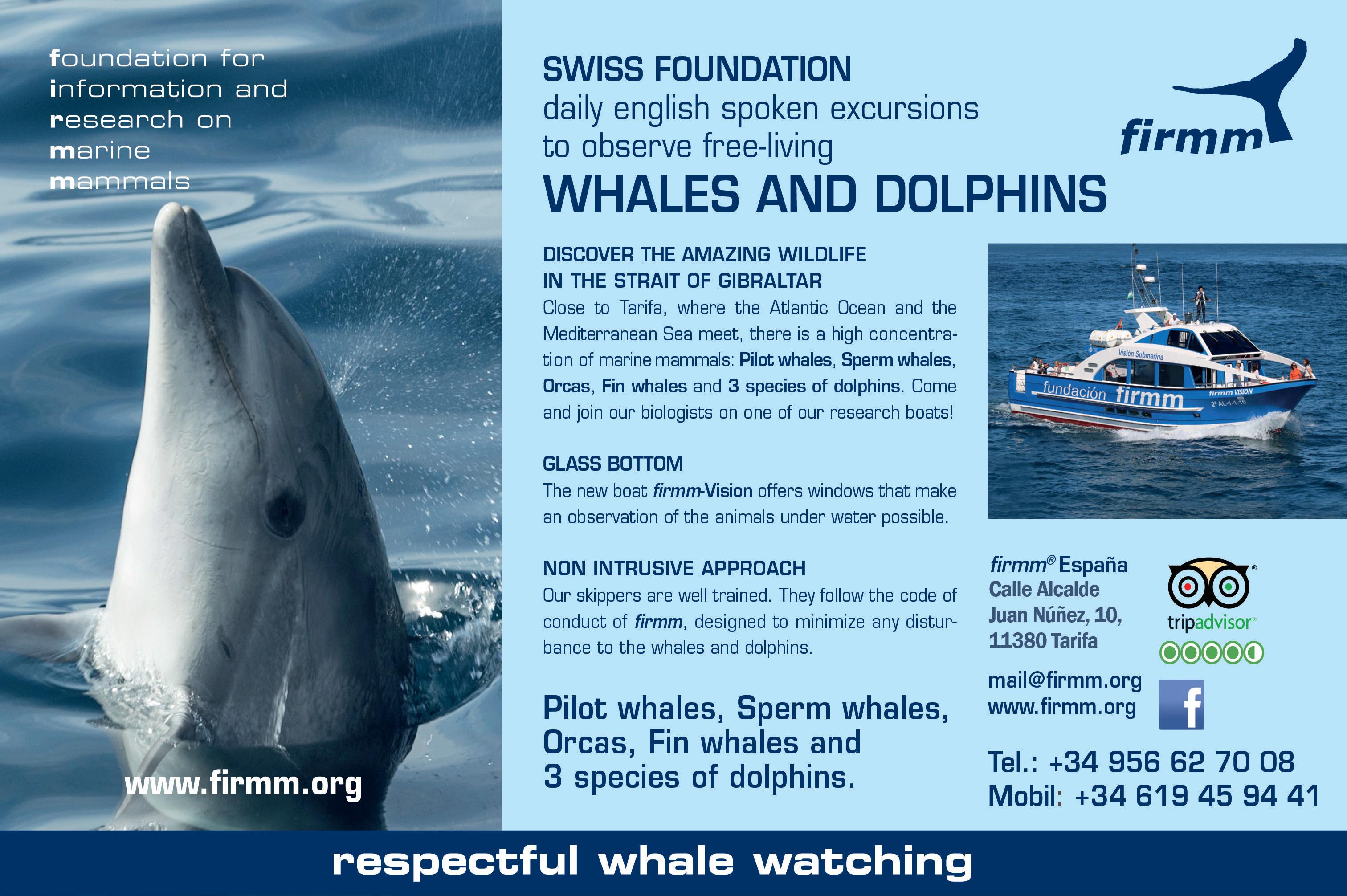
Costa de la luz
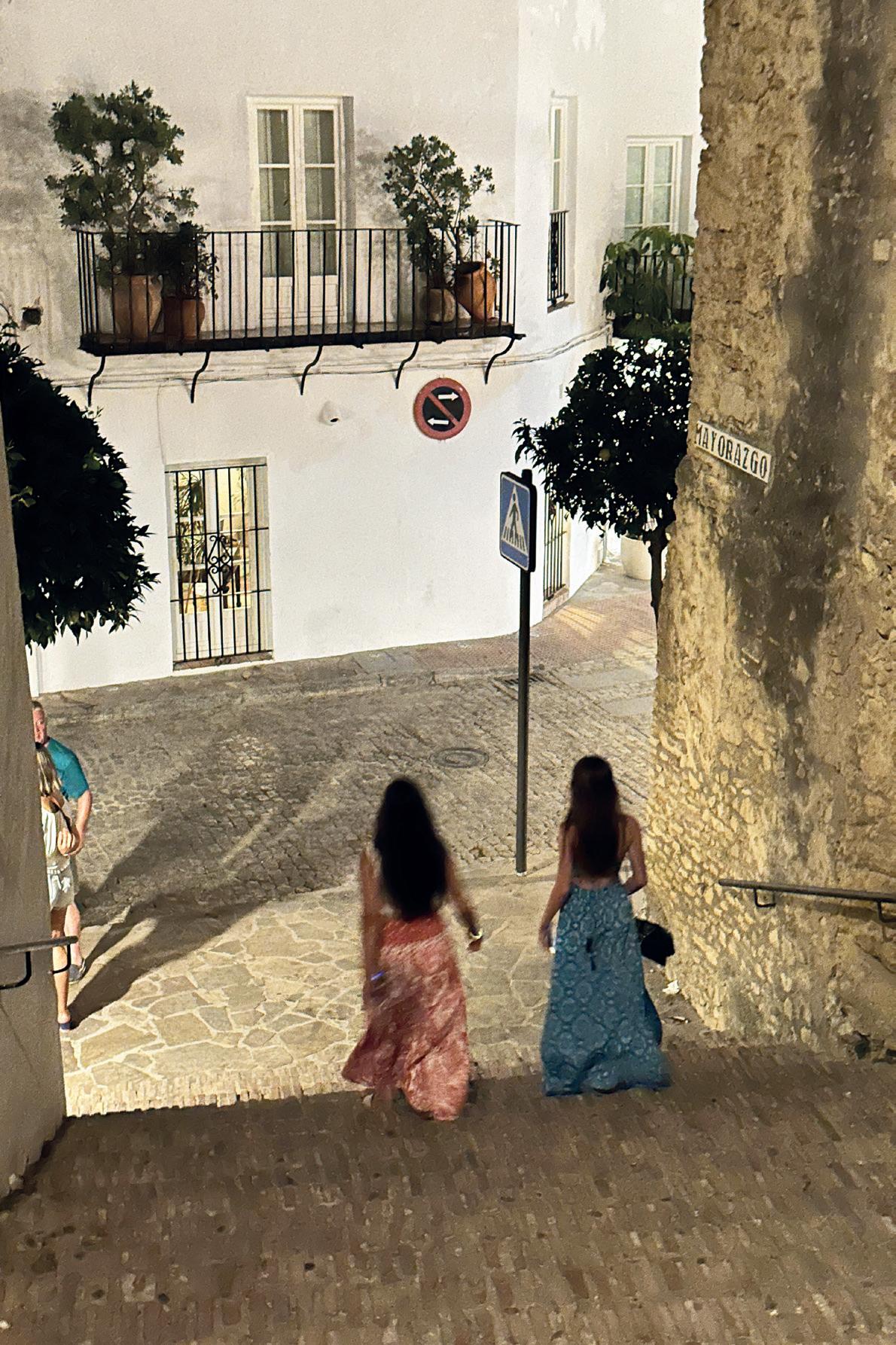
Nervecentre for dining
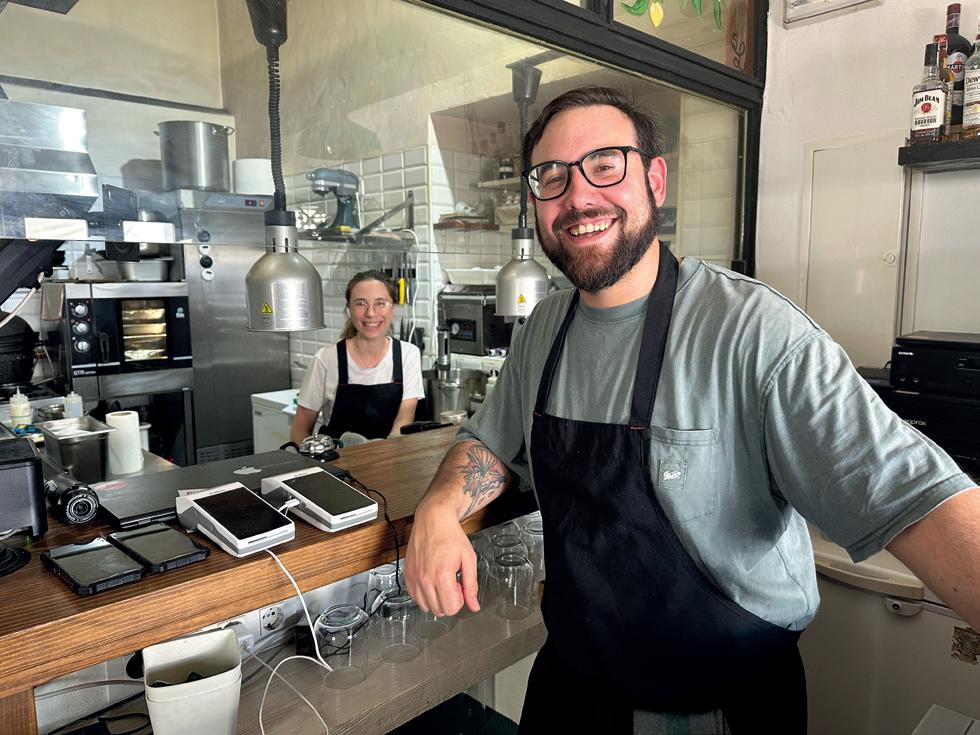
THERE isn’t much Alberto Reyes doesn’t know about food…so it’s appropriate he’s at the frontline of fine dining in Vejer.
His restaurant, 4 Estaciones, is at the epicenter of one of Andaulcia’s nervecentres to eat.
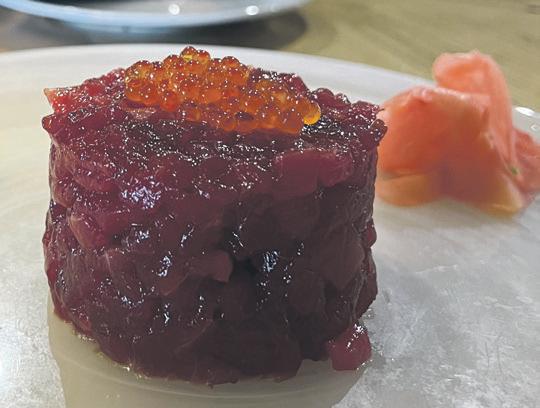
Open since 2017, it’s impossible to dine badly in his joint which is as attractive on the eye as it is tasty on the stomach.
Much of this is thanks to his careful selection of chefs, with his latest signing, Esperanza Macias, having trained at Andalucia’s top restaurant, Aponiente, which counts on three Michelin stars, at nearby El Puerto de Santa Maria.
“You need to continually up your game here and keep trying new things,” ex-

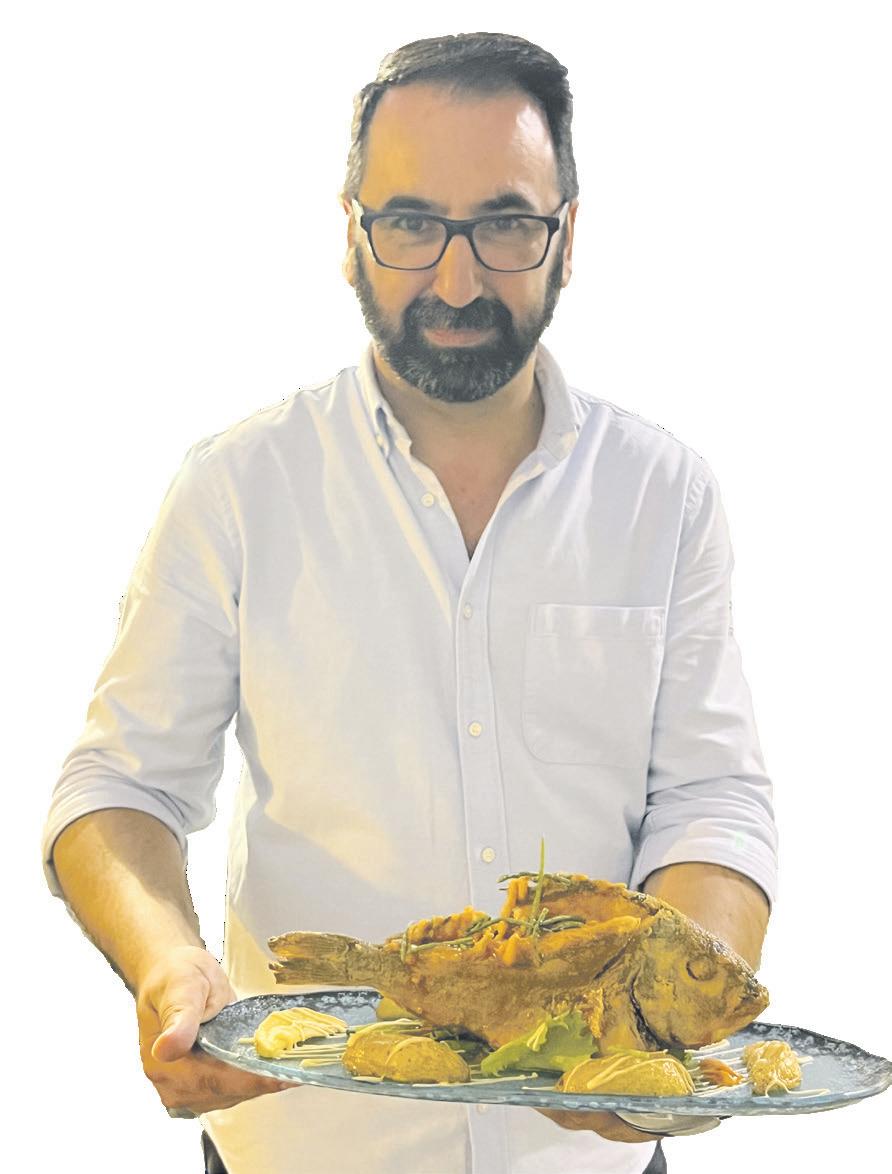

Jon Clarke explores why Vejer de la Frontera has become the food capital of Cadiz drawing in culinary tourists from around the world
ucts and change them by the season and always hire talented chefs in the kitchen.”
But even then, there is no guarantee you will survive, with the town continually evolving and refining its range of restaurants.
plains Reyes, who grew up locally and previously ran the highly-rated Arohaz, in nearby Canos de Meca.
“You need to understand how to use local prod-
“In fact, they should be doing a university course on the success of Vejer’s food revolution,” continues Reyes, who is speaking at an interior table of his charming joint surrounded by books on cuisine from all corners of the globe.
jer, which counts on around a dozen of entries in the latest Repsol dining guide for Spain.
While many are in its nearby environs (or greater Vejer) including Canos de Meca and El Palmar, the centre of Vejer is the place to start.
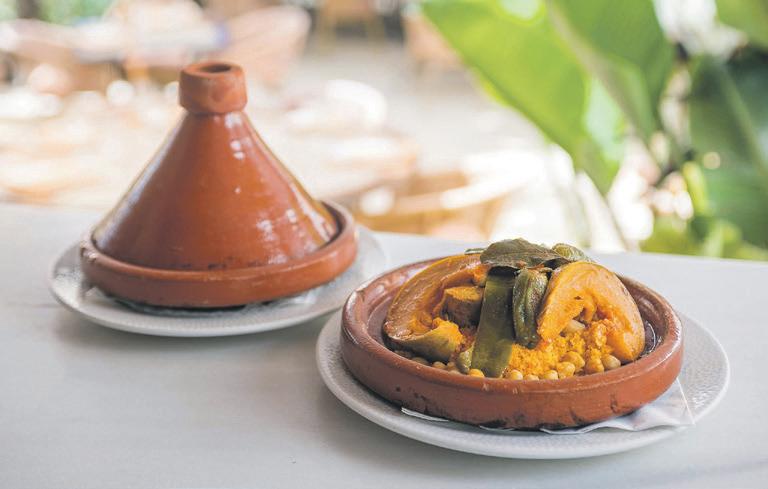
It says a lot about his mindset, which might be local in terms of produce but is clearly extremely global in terms of ambition.
He is one of many success stories in Ve-
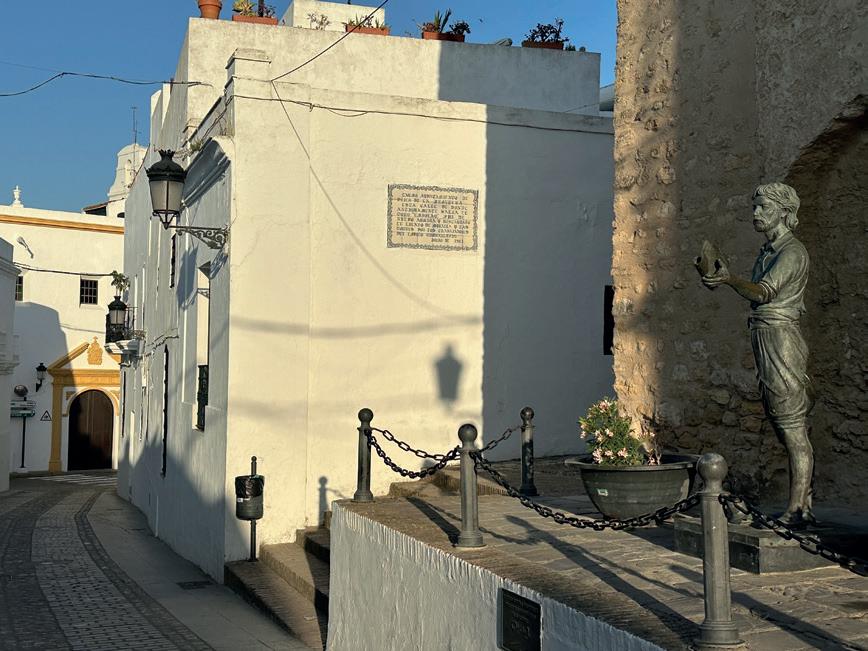
is crammed with statues and old buildings
Take recent arrivals Jaime and Alejandra, whose restaurant Narea landed a much sought after Repsol Sol in under a year.
A charming spot on the prestigious Corredera street with the most breathtaking views helped, but what sets it aside is the amazing drive and industry of this young culinary pair. They have three-star pedigree all the way, having met at one of Spain’s best restaurants, El Celler de Can Roca, before honing their skills at Madrid’s top restaurant Diverxo. With six Michelin stars between the two joints, what they learnt was invaluable, before launching into their first place together.
Coming from Malaga and Cadiz, they were fully aware of the quality of restaurants in Vejer, and it is a real honour they overlooked Andalucia’s famous cities to land in the town.
“We knew about the famous quality here and we knew many of the restaurants as well as many of the local farmers.
“We figured we had something new and unique to offer and it is a real honour for Repsol to give us this award so quickly,” Jaime told me.
As Jaime explains, so much of the quality here is due to the local seafood, vegetables and meat.
But Vejer’s extraordinary location, charming architecture and remarkable views also help. You need, however, to get out into the countryside nearby to seek out other gems.
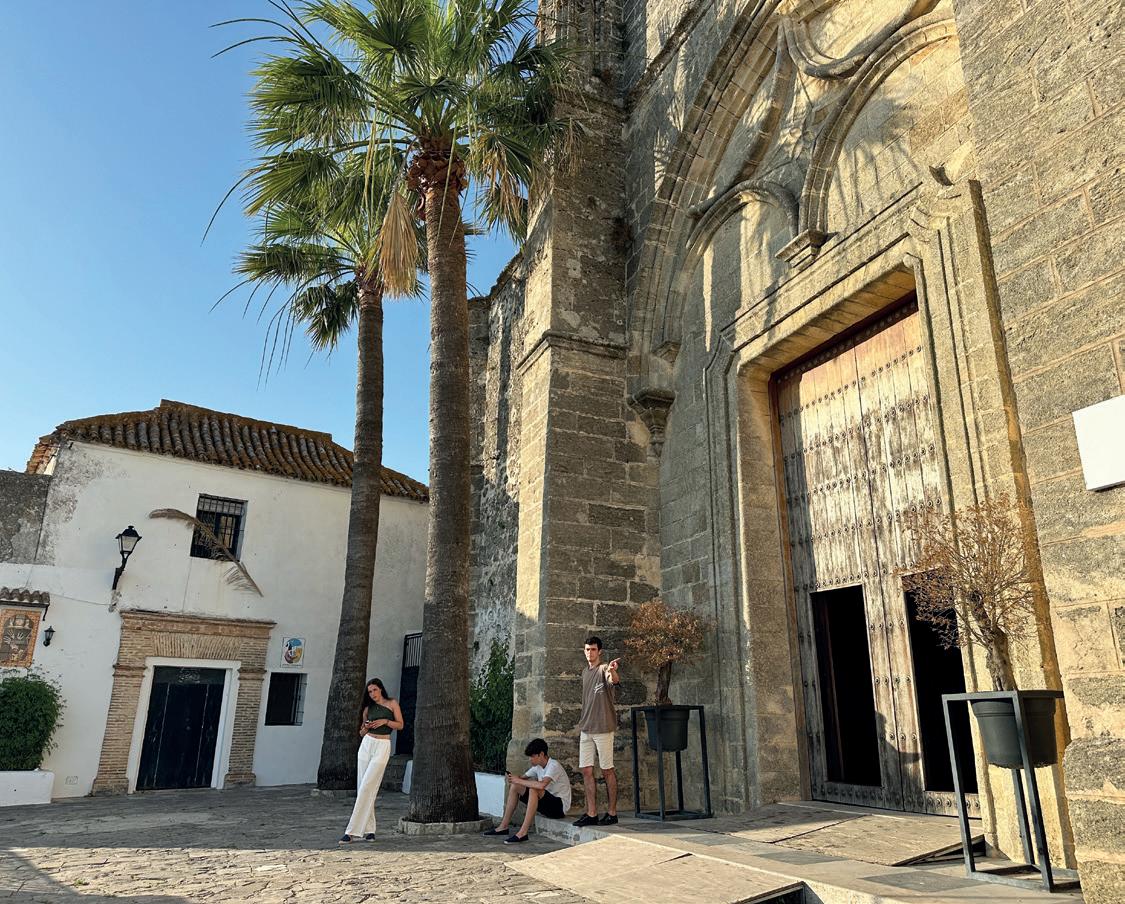
I spent a long time travelling around the nearby area for my book Dining Secrets of Andalucia a decade ago and was shocked to discover so many amazing places to eat.
One of the best is Patria, a ten minute drive inland, through a genuine backwater of Cadiz province that almost no tourists venture.
Danish couple Ase and Thomas have the most amazing taste and are continually changing their menu, and even concept.
“I’m forever experimenting and trying new things,” explains chef Thomas, who also runs a natural juice business and has recently opened a new joint, Hierbas, in the centre of Vejer (see
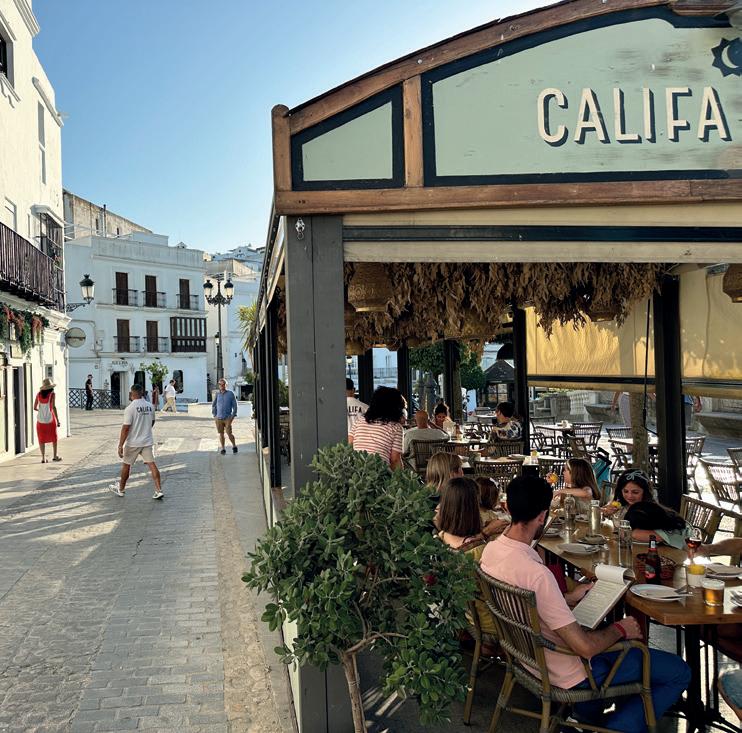
review further on).
“The opportunity came up and we thought we might try a typical Danish sandwich business and so far so good,” he adds.
CULINARY HISTORY
I first found this culinary heaven when I landed at seminal restaurant Trafalgar (named after the nearby naval battle) on a side trip into the town centre, en route to Cadiz, nearly 20 years ago.
It stood out, appropriately, like a lighthouse in what was then something of a culinary desert.
A great mix of local and national dishes, lots with twists, led me back here a few months later when I stayed at the charming local hotel, Califa, literally right across the square. And that’s when I got the surprise of my life, it had an amazing hidden restaurant in its courtyard garden, focusing on local cuisine, as well as Moroccan fare from over the Straits.
It also turned out to have a British owner, James Stuart, a former travel guide and cycling pro, who decided he wanted to up the ante and take on his near neighbour.
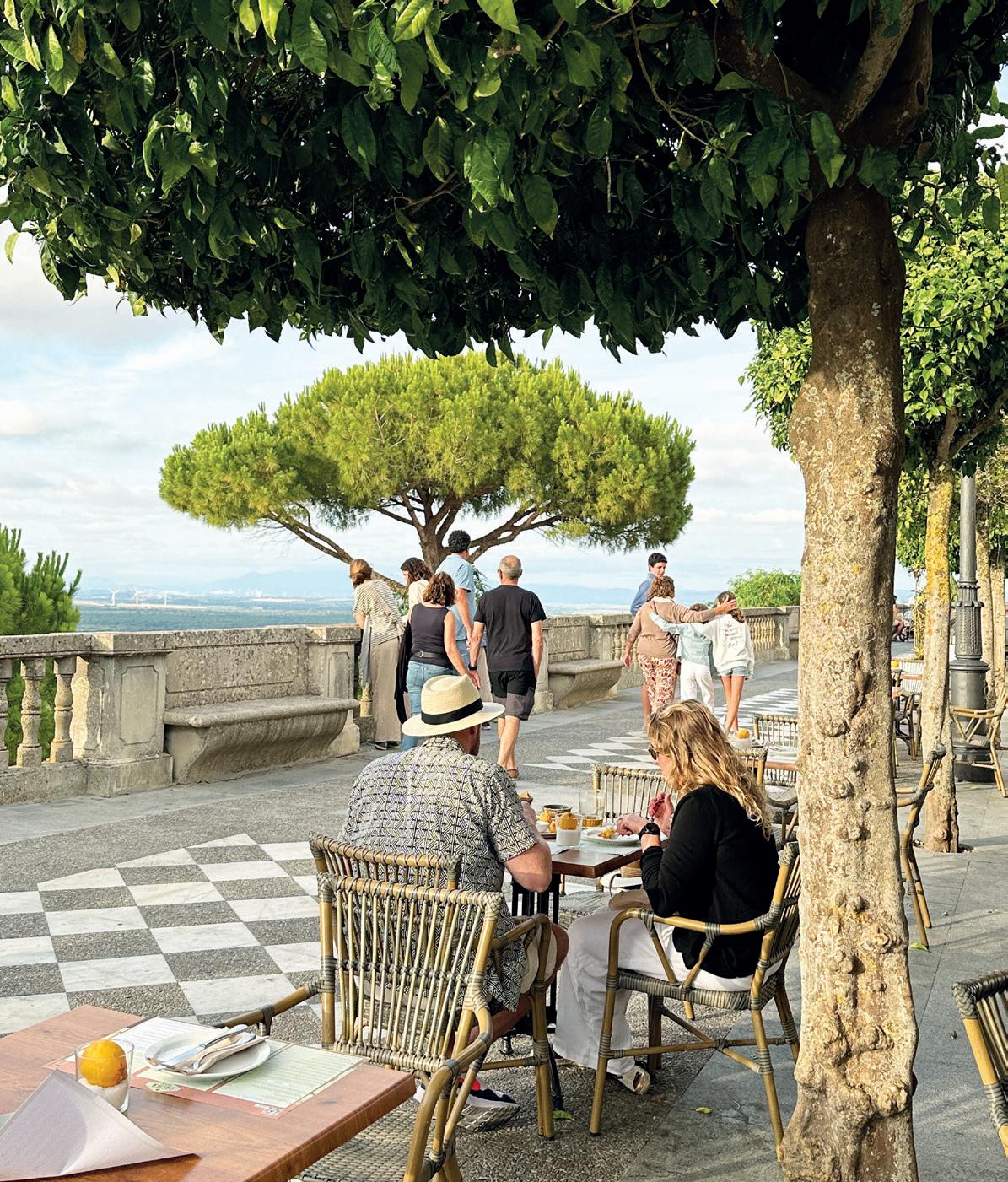
future.
“Apart from Trafalgar the food was so boring back in the early noughties,” explains the hard-working Scotsman, who now has 10 restaurants and hotels in the area. “There was no Chinese, no Indian, no Japanese, and so we hoped to do something different.
“It didn’t take long to work out that we had to open a Moroccan restaurant, particularly as all the ingredients were literally on our doorstep, with the exception perhaps of couscous.”
He continues: “The two restaurants ended up setting the standard for the

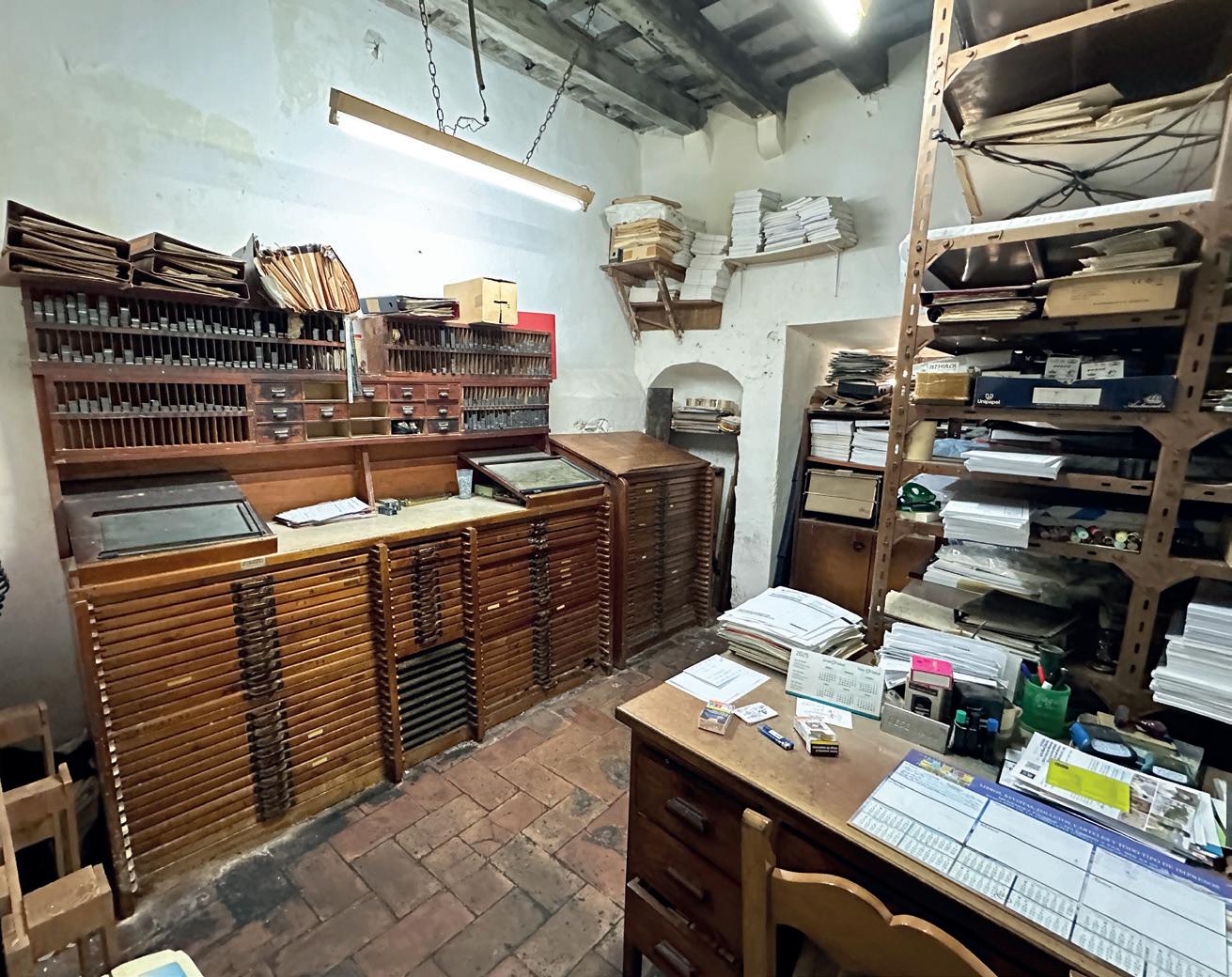
SURVIVING: An old printers still creates leaflets, magazines and cards in
restaurant Castilleria, Campero and Antonio.
And there were still some amazingly authentic places to still eat as well.
“We knew we had to match Trafalgar for service and we tried to create our own niche,” continues the father-of-two, who came to Spain to open a cycling business in the 1990s.
“From then on anyone who opened a restaurant in Vejer had to be at our level…and from about 2010 as the recession ended things started to take off.”
Within the next few years the town could count on perhaps a dozen new places to eat, including el Muro, Judería and Casa Varo, while outside town emerged meat
They included the charming, Venta el Toro, in Santa Maria, gloriously unpretentious and little wonder celebrity American/Spanish chef Jose Andres, brought his daughters here for a recent food programme.
Little changed in decades, it is one of the last genuine redoubts of quintessential Andalucia, and the food, while simple, is absolutely delicious.
But, of course, it has to be in a town that nowadays has at least a dozen amazing places to eat, the genuine melting pot of the best of Andalucia!

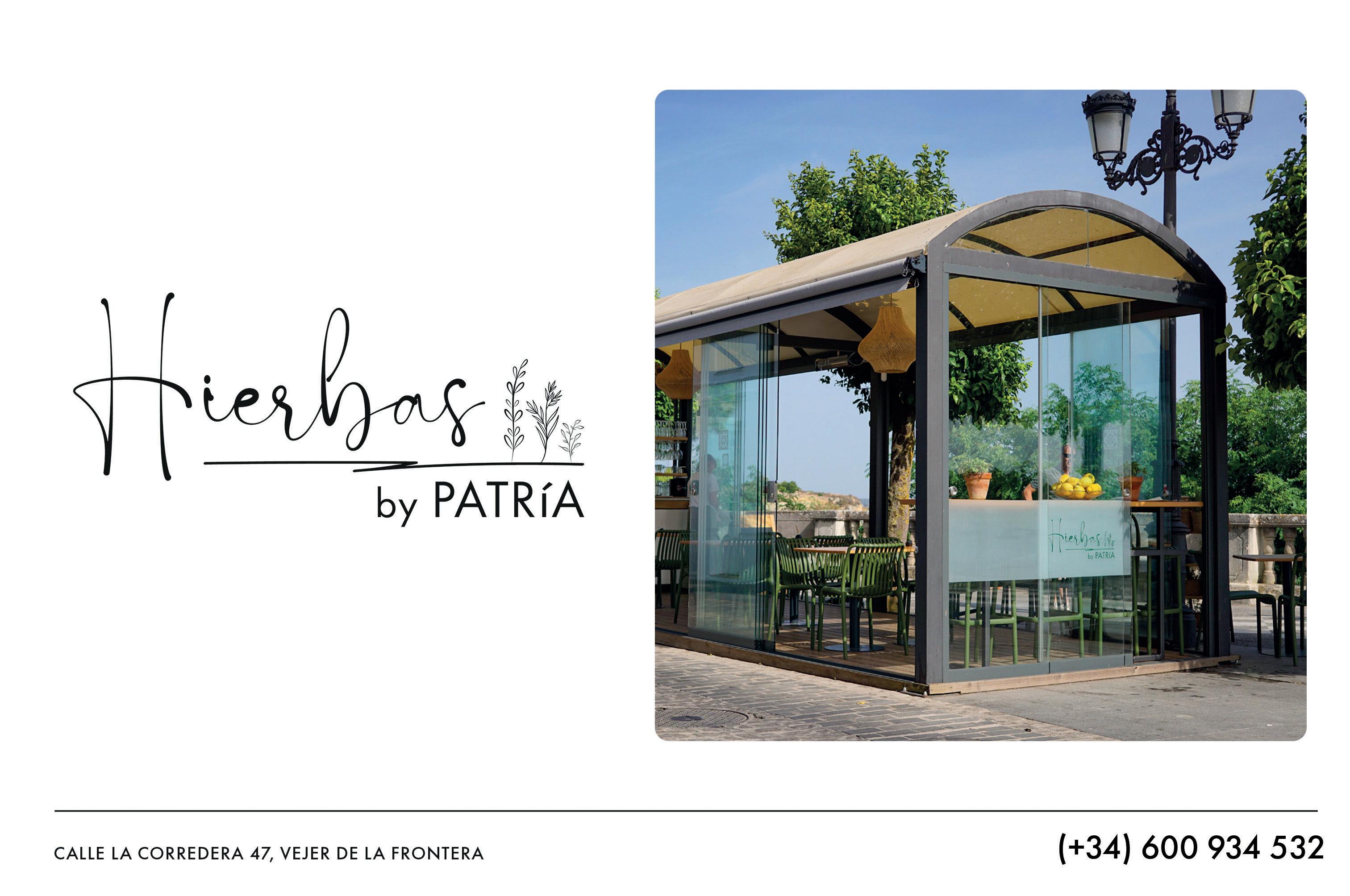
Costa de la luz
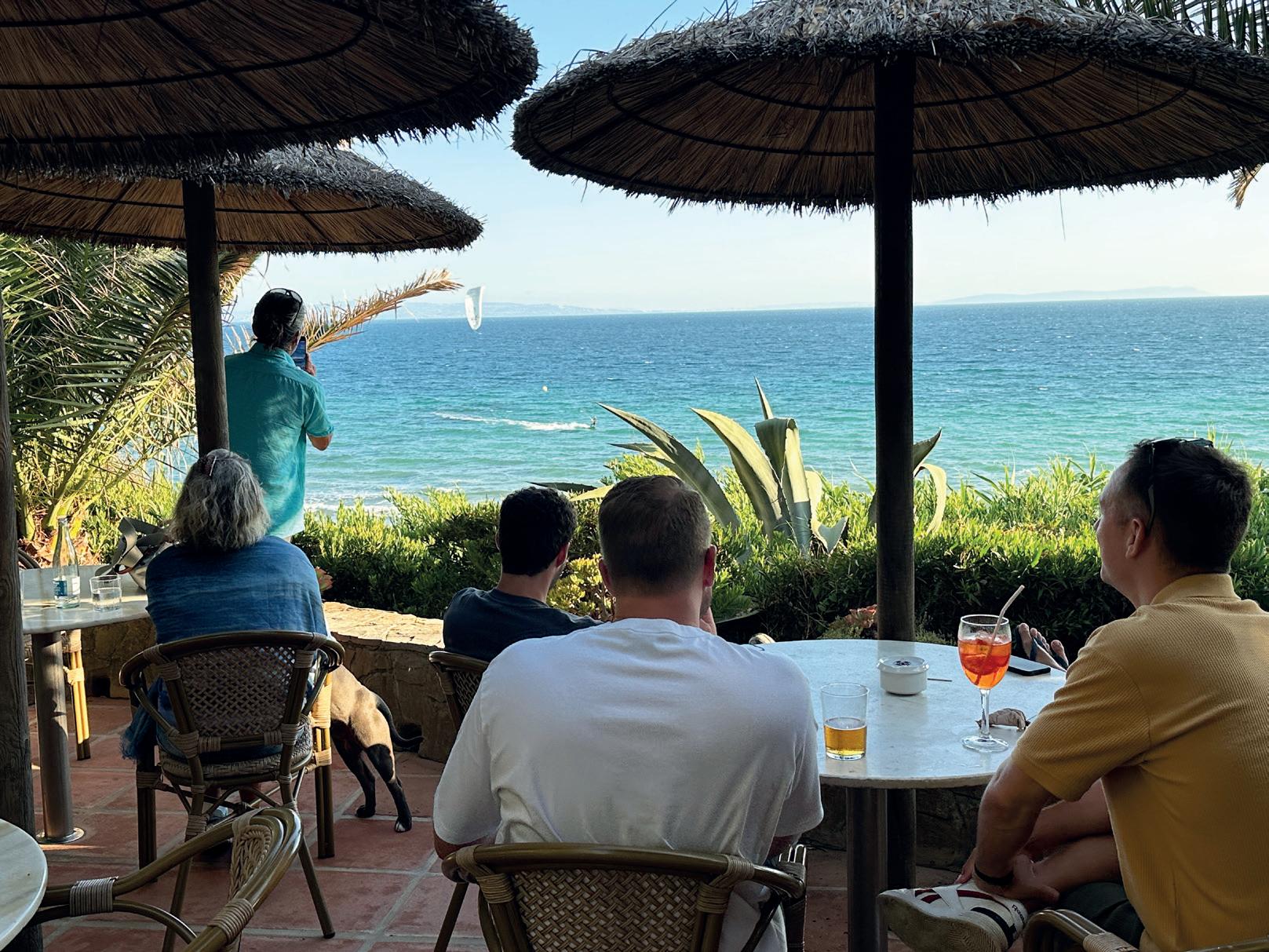
KIick back and relax
T’S sundowner time and a solitary kitesurfer is entertaining half the crowd assembled at the Hurricane hotel’s iconic beachside bar.
But while he’s showing off with jumps that stretch a good way towards Morocco, another more cultured half are sitting in a glade listening to flamenco.
Spread out on sofas under a stand of umbrella pines, they, like me, are being transported a long way further by a hypnotic repertoire mixed with Arabic sounds and African claps and rhythms.
A regular weekly event, the flamenco duo, a guitarist and singer, hold court with stunning aplomb.
As the sun begins to set there is a sense among the assembled throng that few places in the world offer such an atmospheric setting for music.
One of southern Spain’s most evocative hotels, the Hurricane is still doing well what it has been doing for decades.
A seminal enclave and something of a hideout for the privileged few since the 1980s, it is easy to feel like you are on a film set.
Hugging the coastline with spectacular gardens and two lovely pools, it is no wonder that guests have been coming back for years.
And they are not here for five-star polished service, but instead the charm-
Jon Clarke luxuriates at the Hurricane group of hotels near Tarifa, which have maintained their understated charm for decades
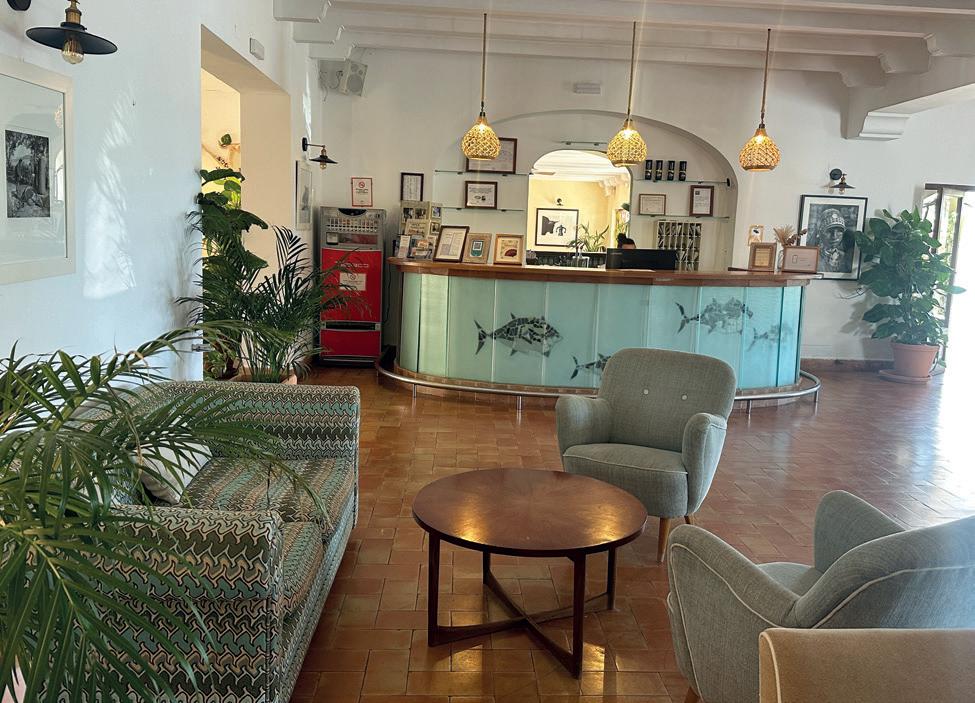
ing laidback vibe, you rarely find these days on the Spanish coastline.
The truth is, little has changed in decades and that is how they like it:
Most will simply saunter around in the morning before heading for the
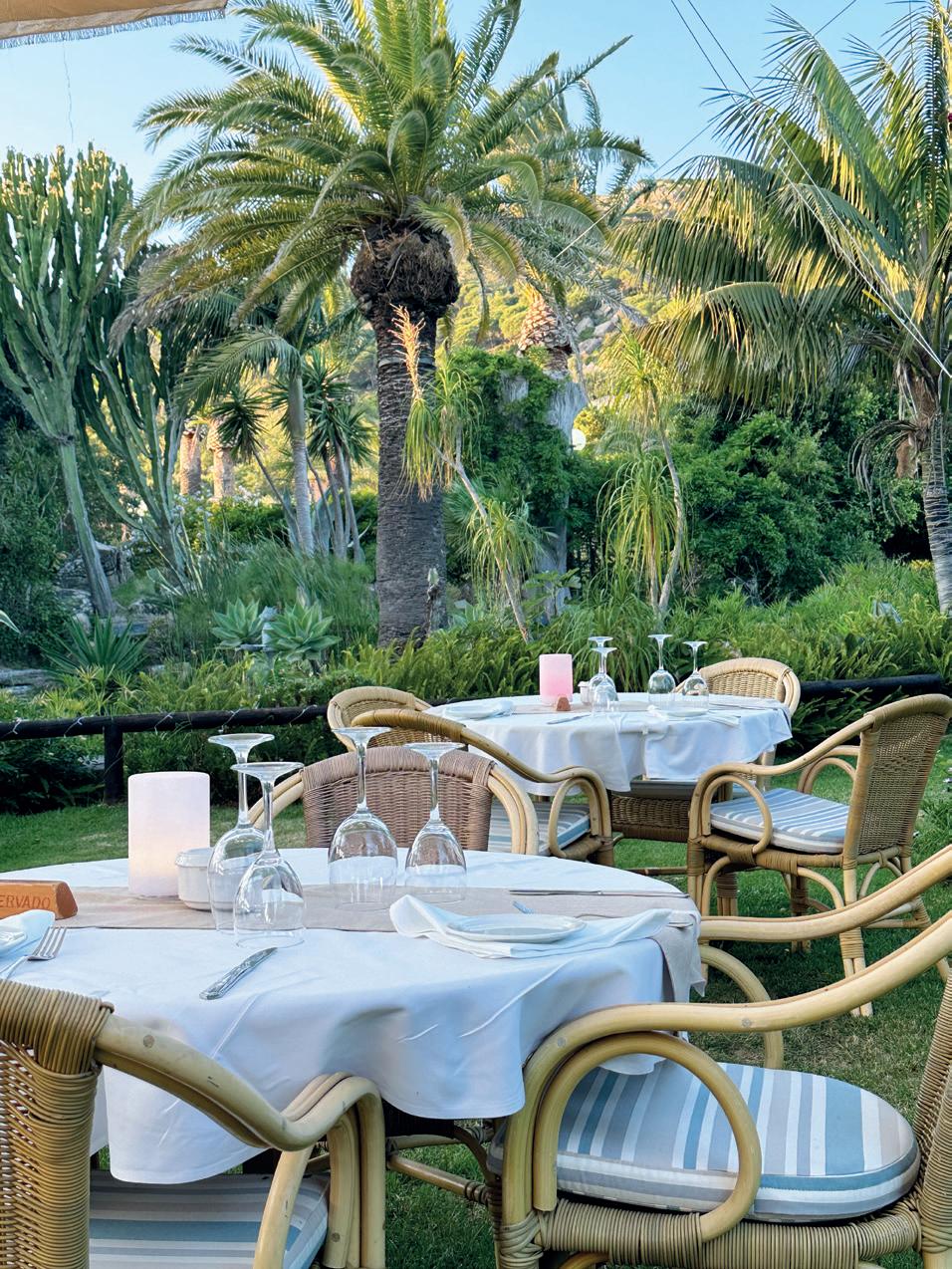
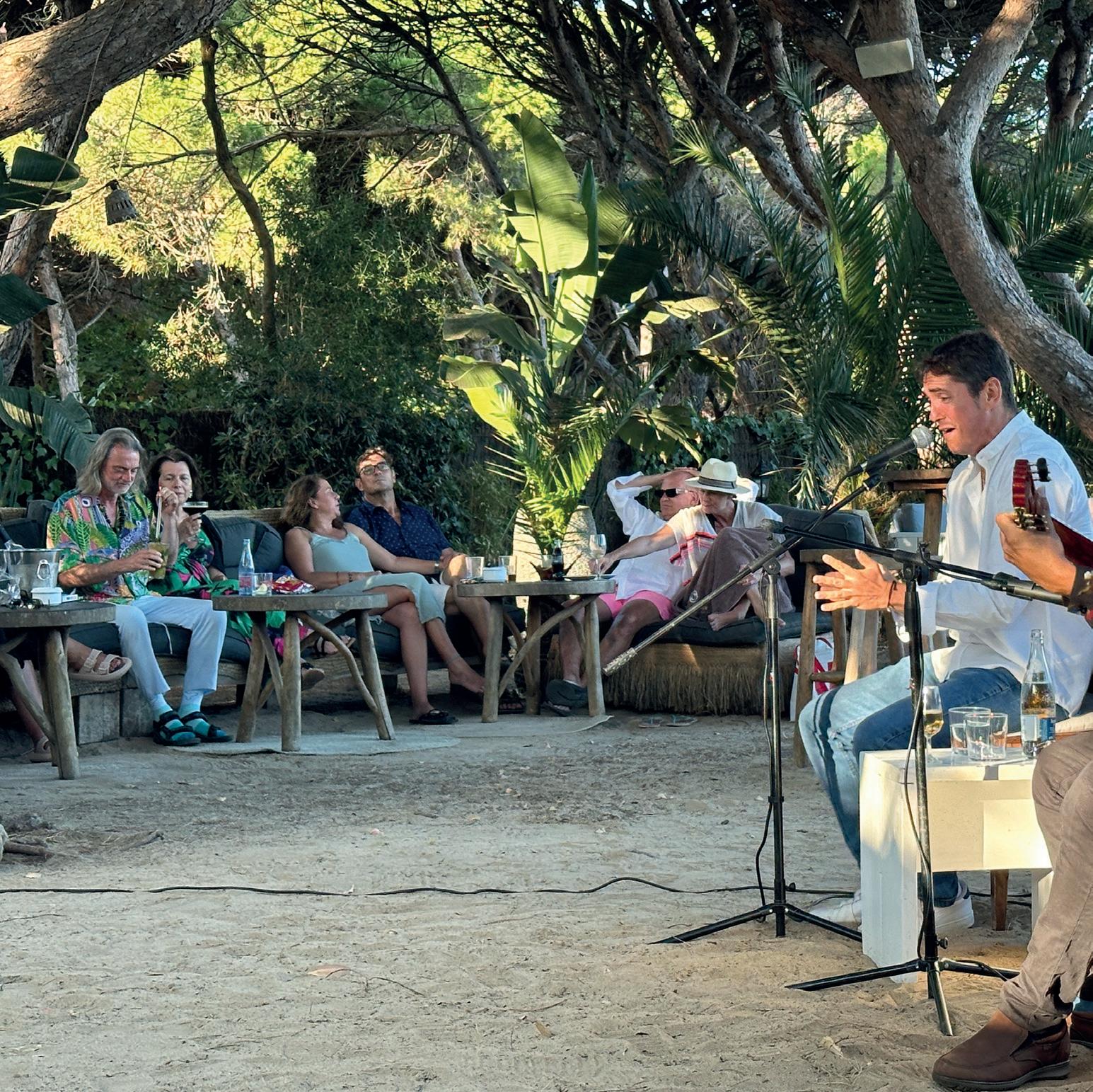
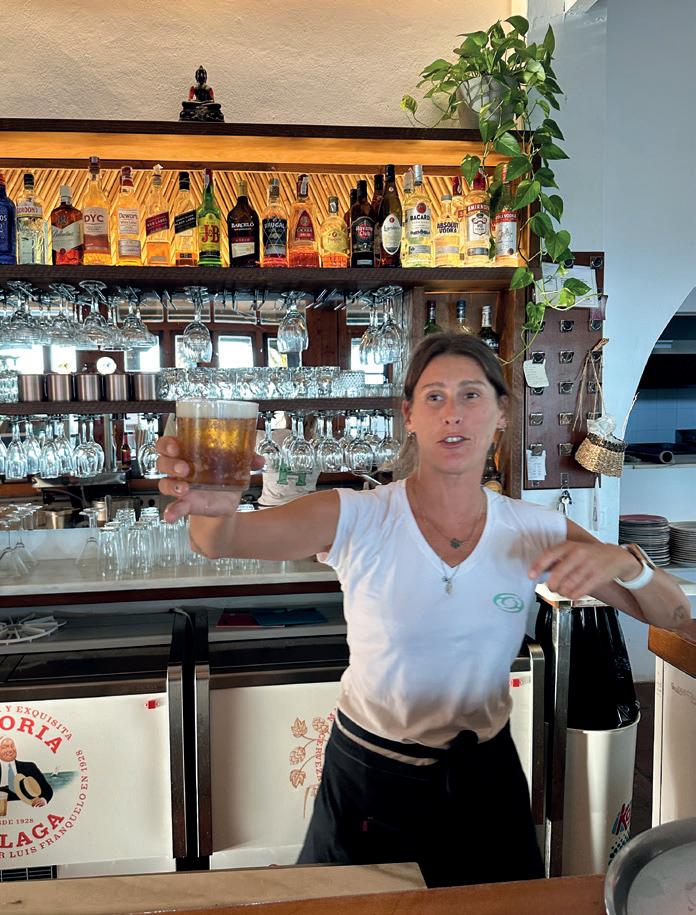
with plenty of meat and fish, particularly with tuna from the nearby area. Of course a few are looking to do some exercise and it helps that there is a proper gym and spa and you can also hire bikes, go horse riding or take a hike right from the door.
famous buffet lunch, which is heavily but not entirely vegetarian and all cooked on the premises.
In the evening they stroll out onto the main terrace, dressing up to the nines and enjoying a more formal menu
POINTING TO PUNTA
Without a doubt more appropriate to families and for those wanting space, the Punta Sur hotel half a mile up the coast is a great alternative.
Its giant circular swimming pool sits in a spectacular setting and is properly cut off from the wind, which is great on the days when the wind is really blowing as it often does around these parts. Close to Valdevaqueros beach, its
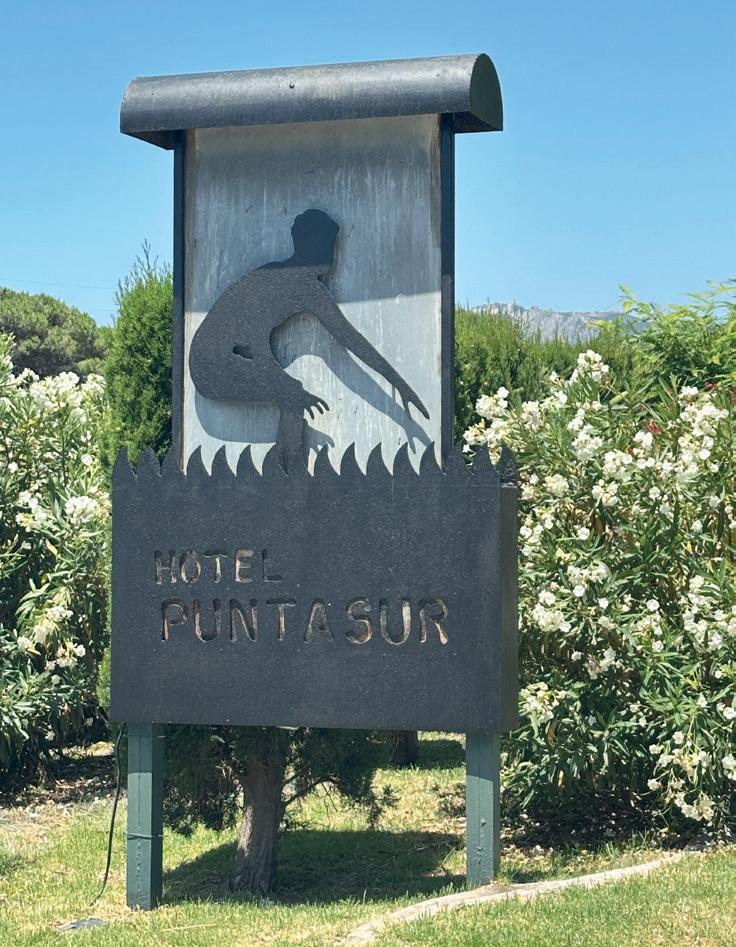
leafy grounds hide fountains, duck ponds, peacocks and even a tennis court.
There is a massage centre and recently updated gym, not to mention its pool table in the big reception area, where doz ens of amazing photos and paintings are always on display.
But best of all is its charming El Jardin restaurant, which is the classic hidden escape for a long, languid lunch or a romantic eve ning under candlelight.
Sitting in the leafy garden, just behind the main hotel, its climbing plants and roses drape a pergola which is nicely lit at night.

Even better, the menu is local and seasonal with plenty of special touches.
The local tomatoes, with fresh basil
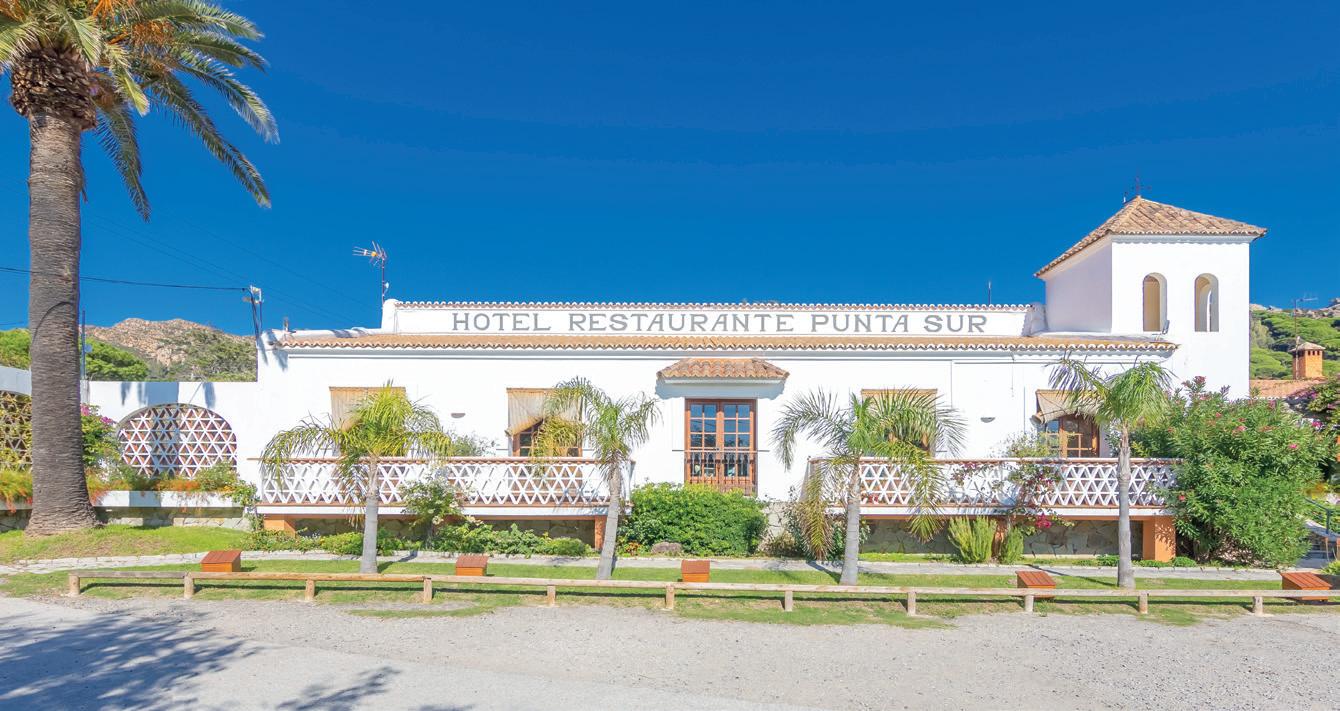
and mozzarella are excellent, while the tuna sashimi - in a homemade ponzu sauce was the perfect starter. So so fresh.
Ivan the chef has been here a long time now and to keep up his interest he makes sure there are plenty of specials every week.
On this visit I tried his ‘marine secretos’
which was beautifully sliced bluefin tuna - half lomo and half ventresca - so tasty and succulent.
Another day I tried the Pargo, a rock fish from the area and it couldn’t have been better cooked.
My suite at the top of the garden looked out over the grounds towards the sea, with Africa in the distance behind.
I watched huge tankers steaming by and the occasional bob of a kitesurf. From here it is the most amazing walk or jog up the coast to the Hurricane hotel.
You simply hop over the main road and walk through scrub and sand dunes until you hit the beach, then take a left.
One of the most hauntingly beautiful stretches of coastline in Spain, you will likely meet nobody and the only buildings are the odd shack and a few demolished military pill boxes installed during dictator Franco’s reign.


ELEGANCE: Dining at the Hurricane and its famous buffet lunch

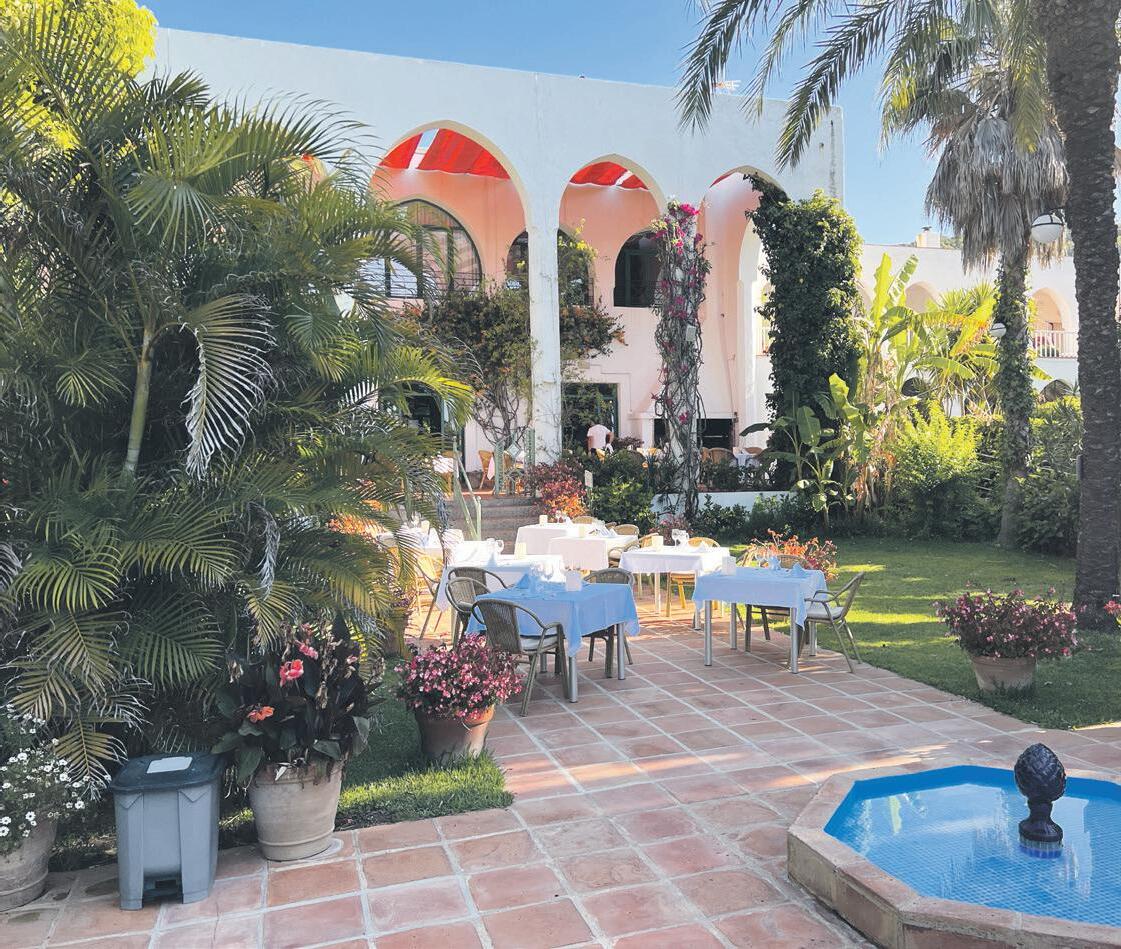
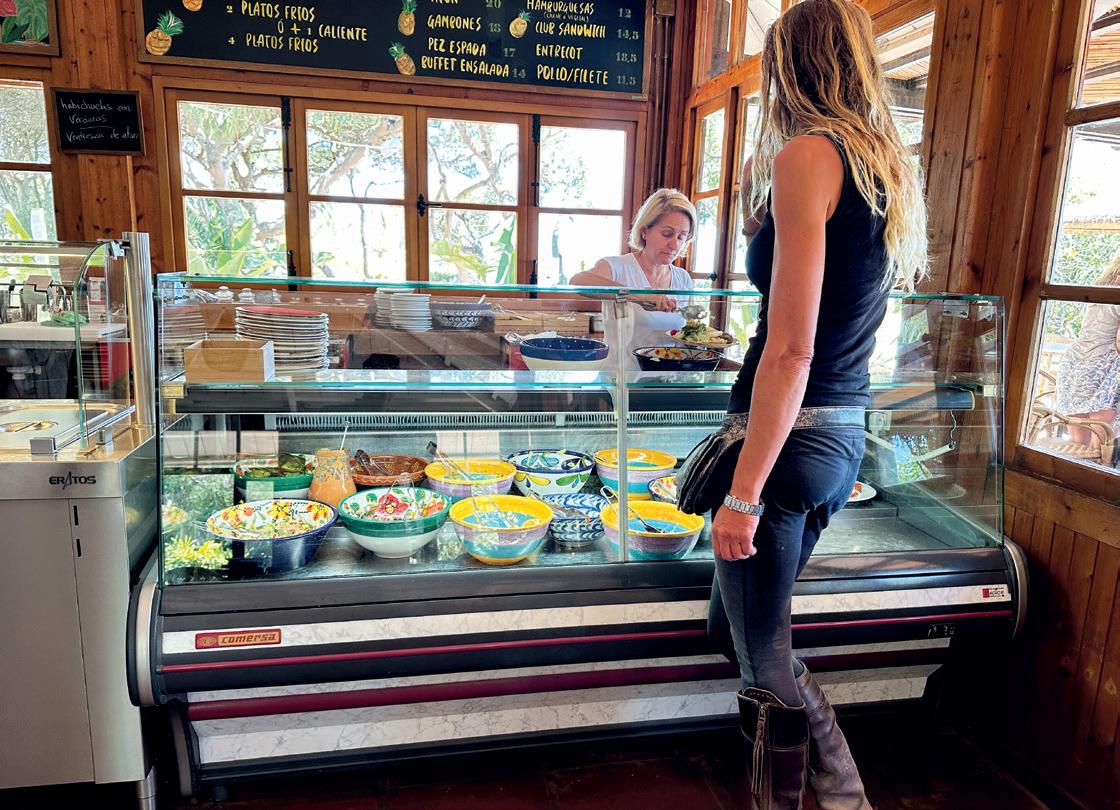
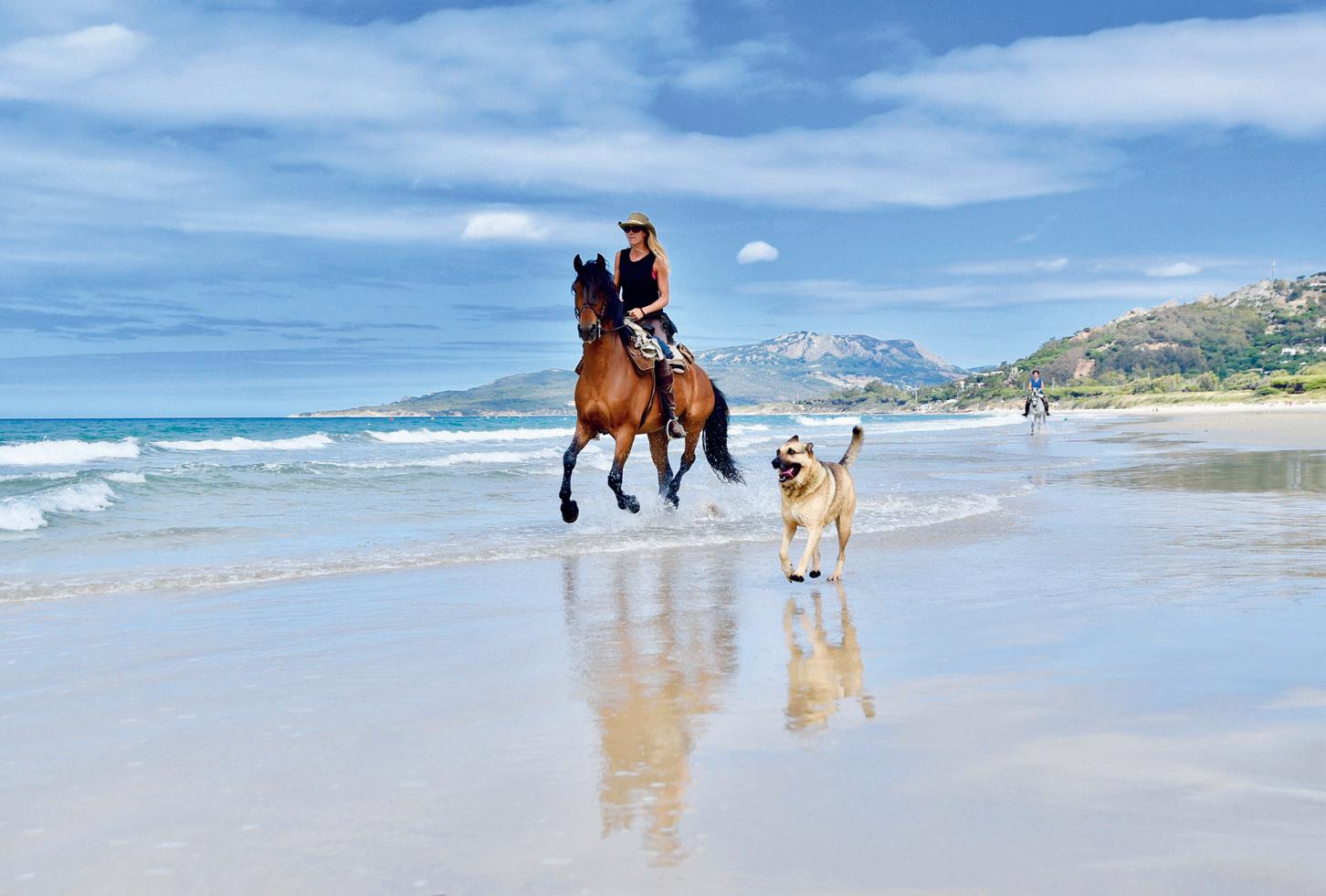
COSTA DE LA ‘HOOF’
LOOKING for a great horseback adven ture on the Costa de la Luz?
Tarifa’s Hurricane Hipica, run by world-class equestrian Klaartje Muijser from Holland, offers breath-tak ing beach and mountain rides. The horses are well looked-after, living shoe-free in the open fields at night.
A brilliant teacher and guide Klaart je is a genuine horse-whisperer who can often be found herding half a dozen horses around the area on her own.
In particular, a fan of the moun tain rides, she recommends a half day out, with a ‘secret’ stop ping off place where she and her team will set up a picnic table for lunch.
“The views up on the Penon are amazing, perhaps some of the best in Europe,” she insists. For information, check out www.tarifahip.com

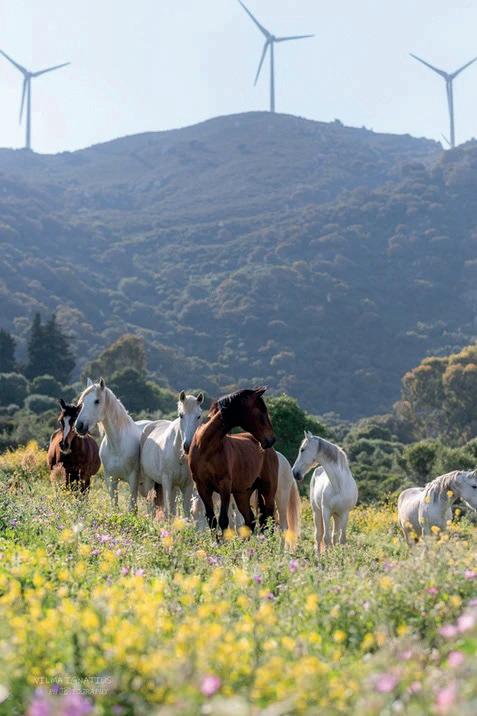

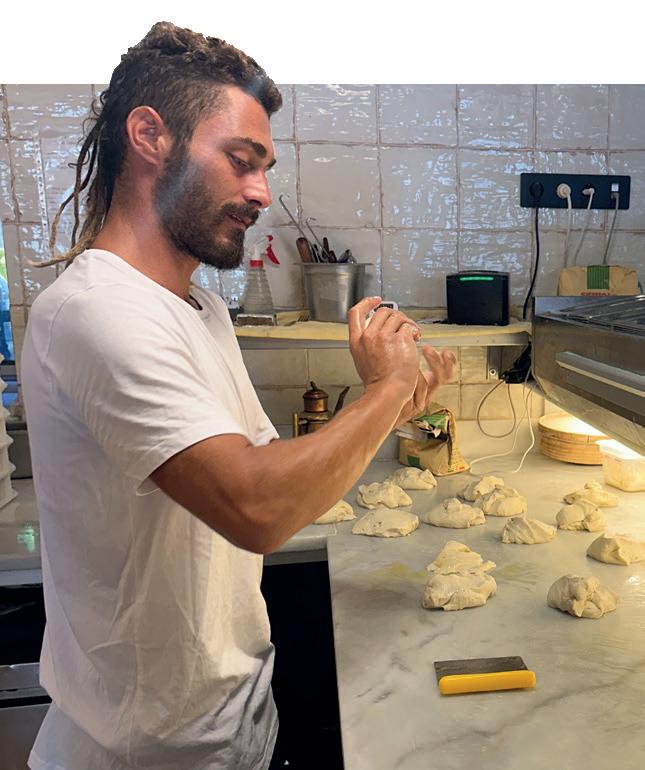
ARTISTRY AND ATUN
Take a pinch of great local ingredients, a barrel-load of talent and stir in some dream settings. Jon Clarke winkles out the best places to eat on the Costa de la Luz
WITH a Napoli scarf and pho-
tos of Maradona on the wall
you would hope the pizzas at Tarifa’s Trattoria would be good.
But owner Luciano Fabricio is taking
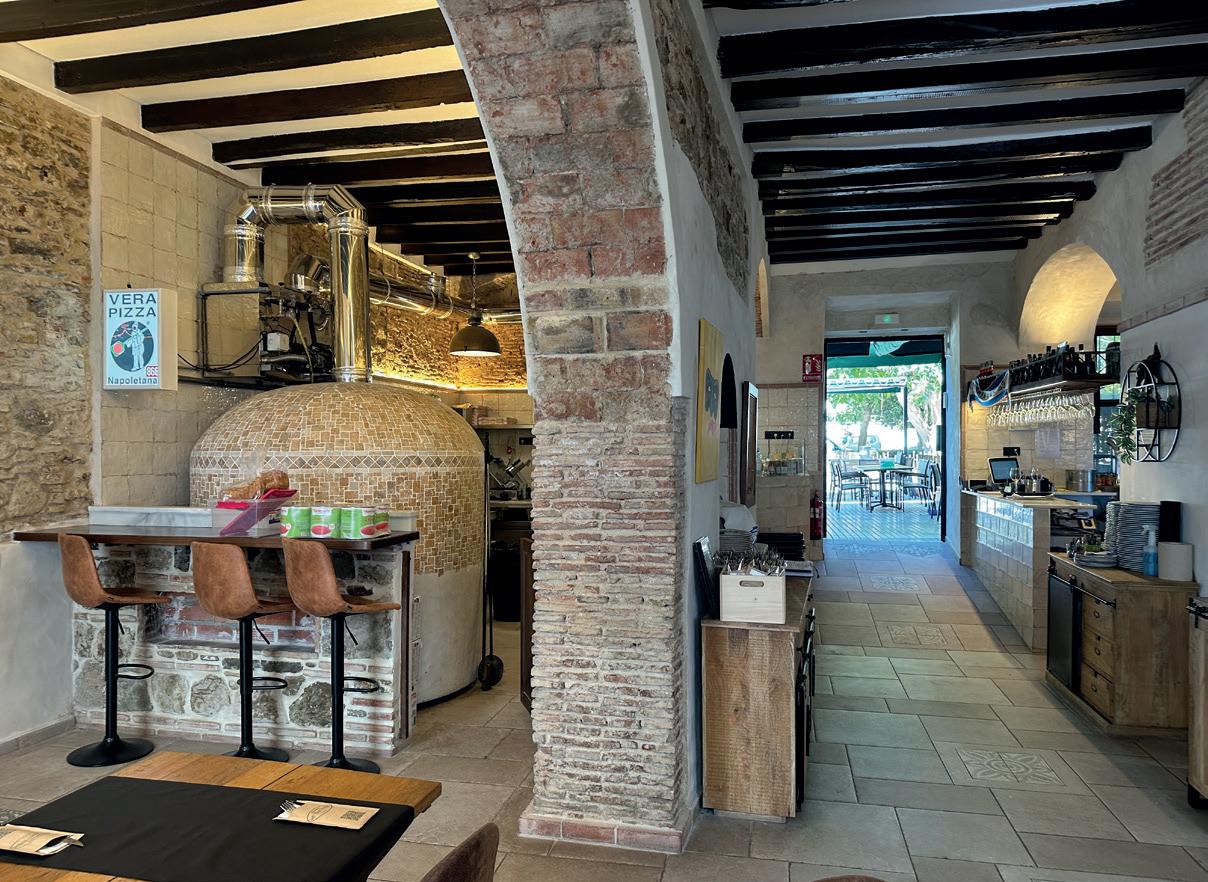
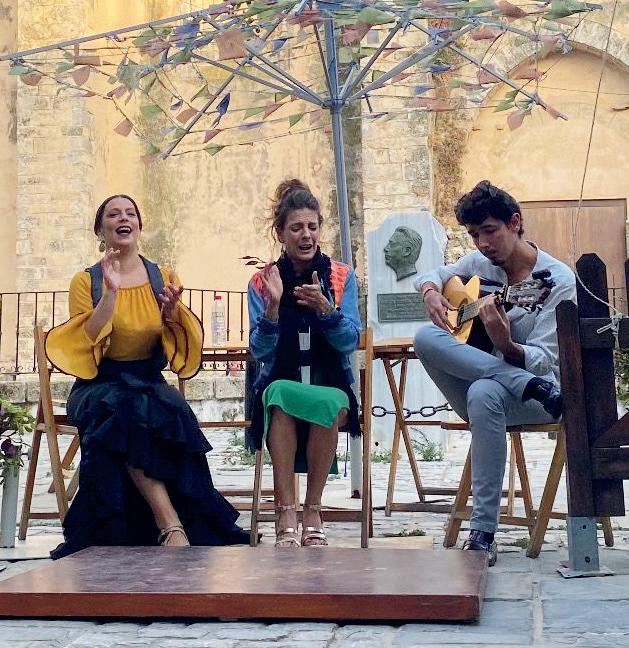
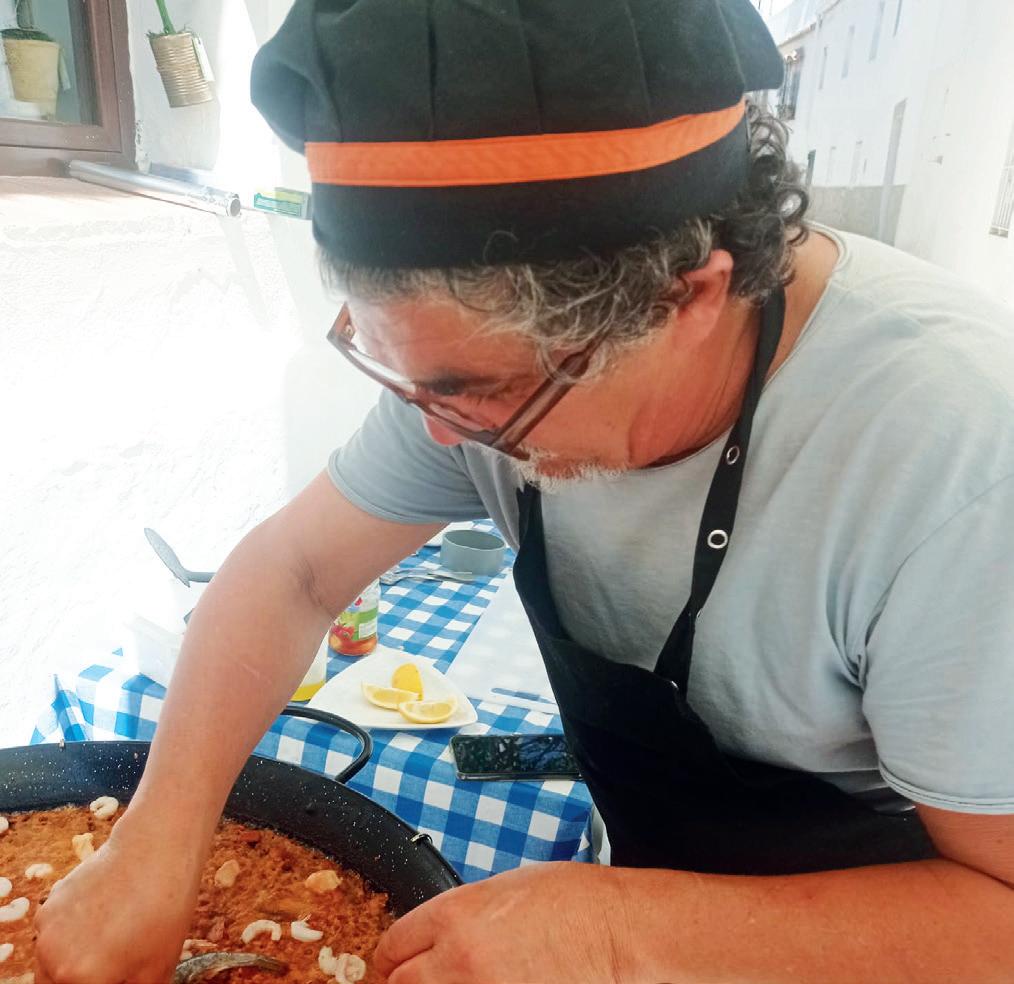
no chances.
The Neopolitan cuts no corners when it comes to offering the best pizzas and pasta in town…and possibly the whole Costa de la Luz.
Having won the Best Independent Pizza award - one of only three in Andalucia - he makes sure to employ the best Italian chefs and doesn’t scrimp and save on ingredients.
“It is a real artform and it takes many years to become the best pizza chef,” explains Fabricio, who can often serve up to 750 pizzas a day and over 20,000 in the summer.
“Trainees start at 14 years old in Italy and they often hardly touch the dough for two years.
“In fact, it is often not until they hit 19 or 20 that they are allowed to make the first pizzas.”
So watching his pizza chef Aldo Dapra go about his business making the dough at 10am for the FOLLOWING day’s menu is a true joy.
“Look, this is a serious business and if you want to make a really good Napolitana pizza, it has to be very hydrated. You use very little yeast and allow the dough to ferment over 24 hours.
“Most people make it in just two hours
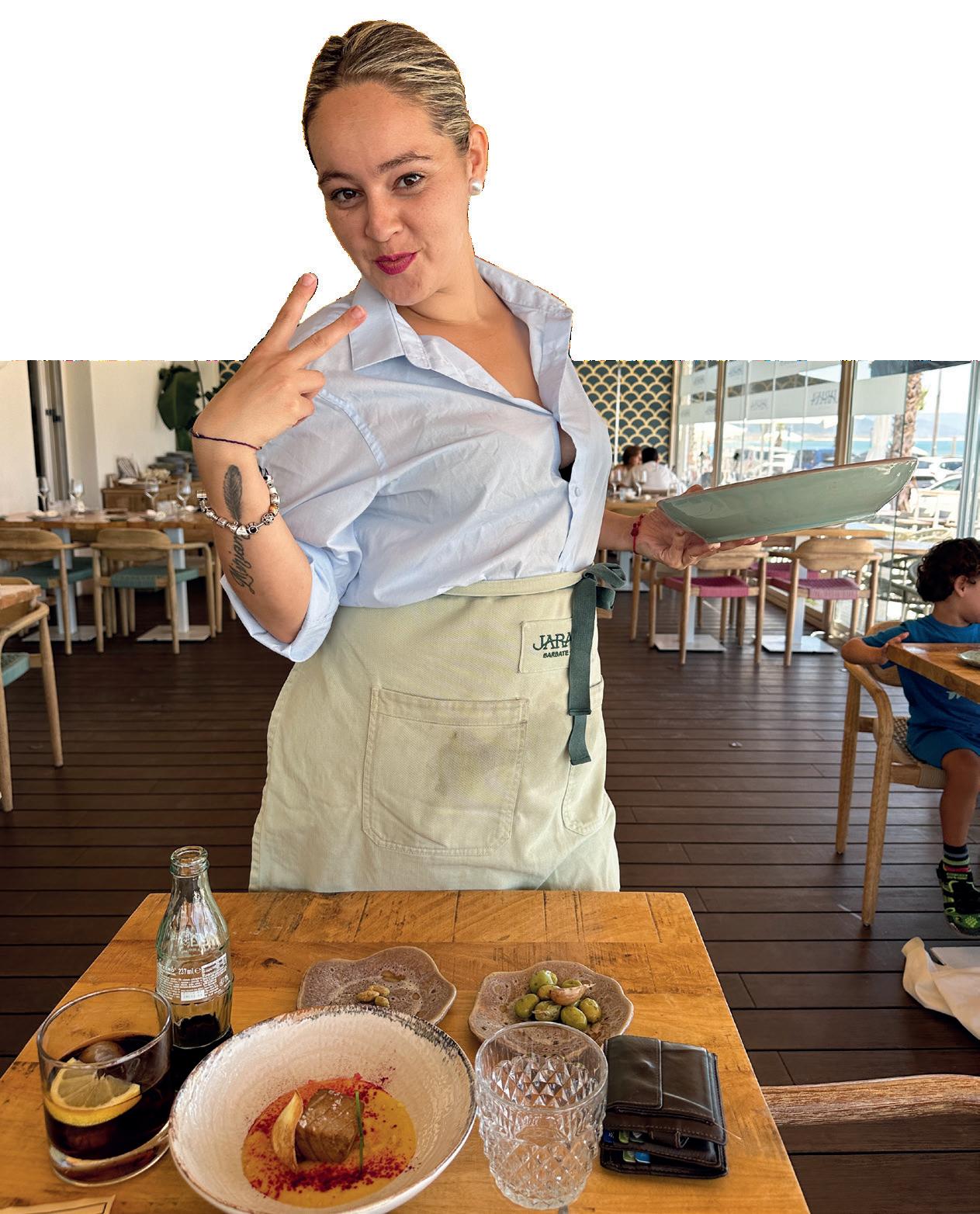
and so the quality is poor.”
He continues: “You also need the best tomatoes and, of course, mozzarella.
The one we buy at Trattoria costs €10 a kilo, some €7 or €8 more than anywhere else. I think most people can taste the difference.”
There is no doubt you can taste the quality here and, best of all, these pizzas are among the most original I’ve eaten in Spain.
Aside from the delicious Black Angus, one of the best is Li Mortazzi Tua, which had pistachios, basil, mortadella as well as an entire buffalo mozza-
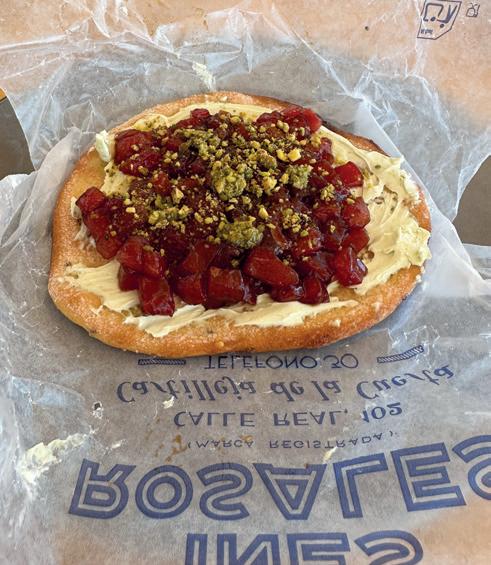

rella on top. To say I was full would be an understatement. And if you happen to be Scottish (and can prove it) you can have the brand new McTominay half price at €8.50. And best of all it doesn’t include haggis.
TASTY TARIFA
Generally Tarifa has much improved its range of restaurants over recent years. Thanks to new places like Merkado 27 MicMoc and Almacen %, there is a bit of jostling for position, particularly at lunch time when people are getting on or off of
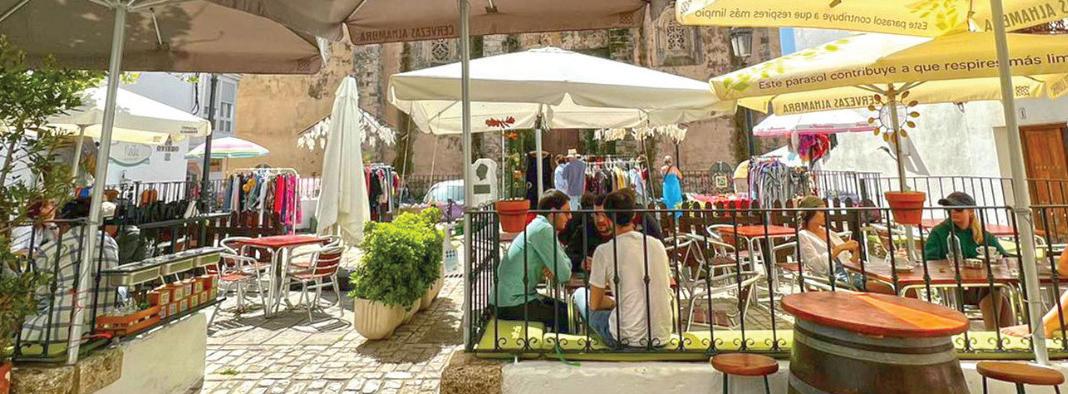
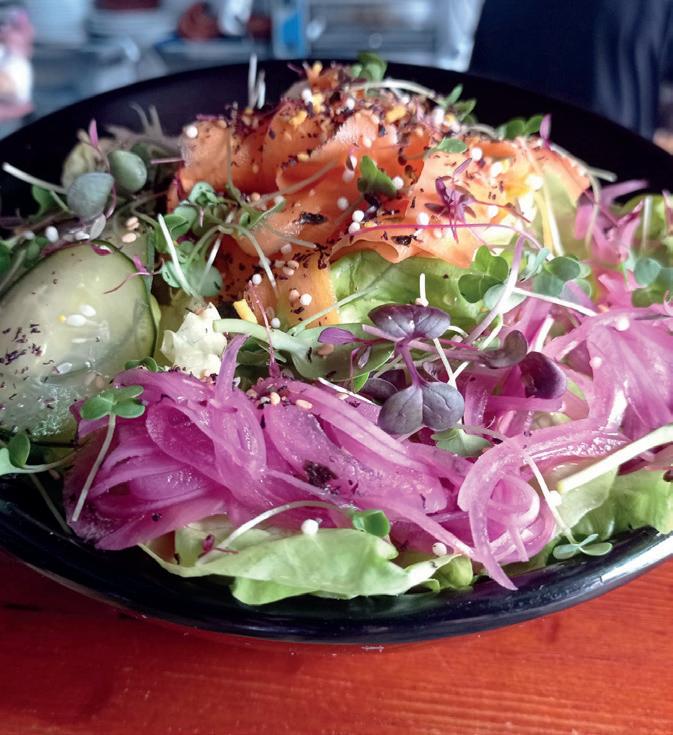
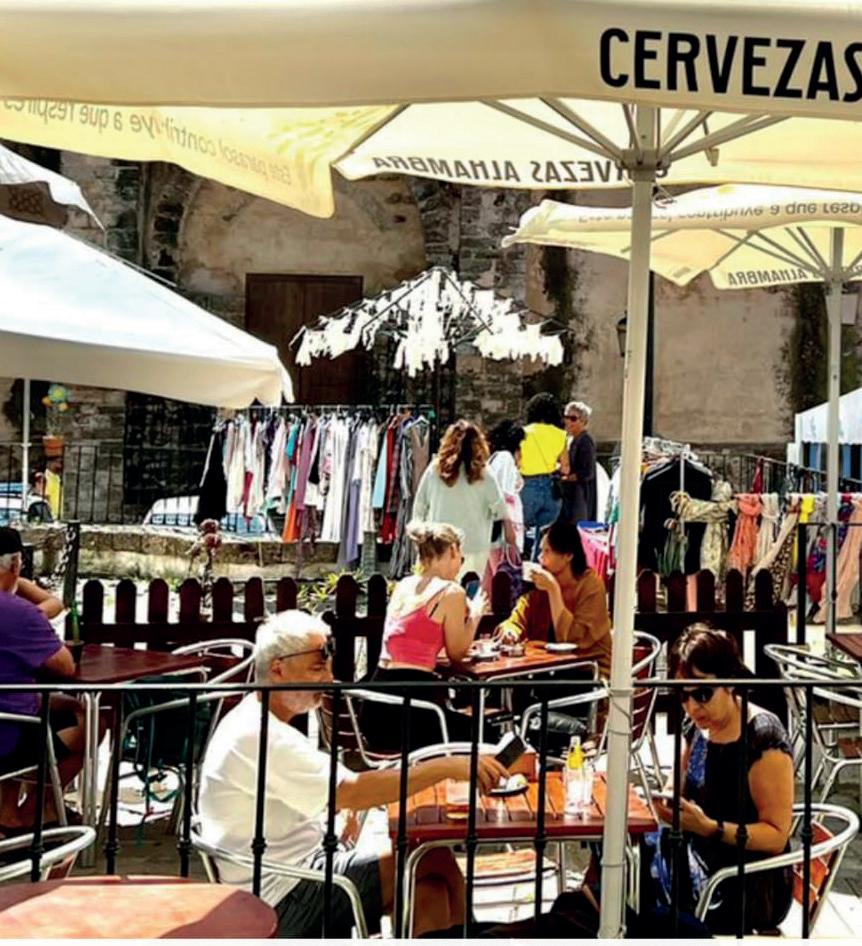
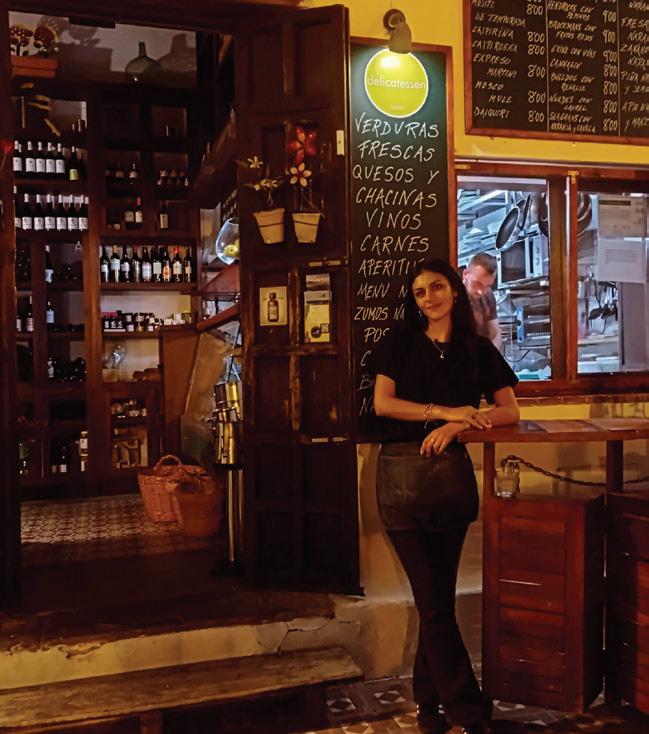

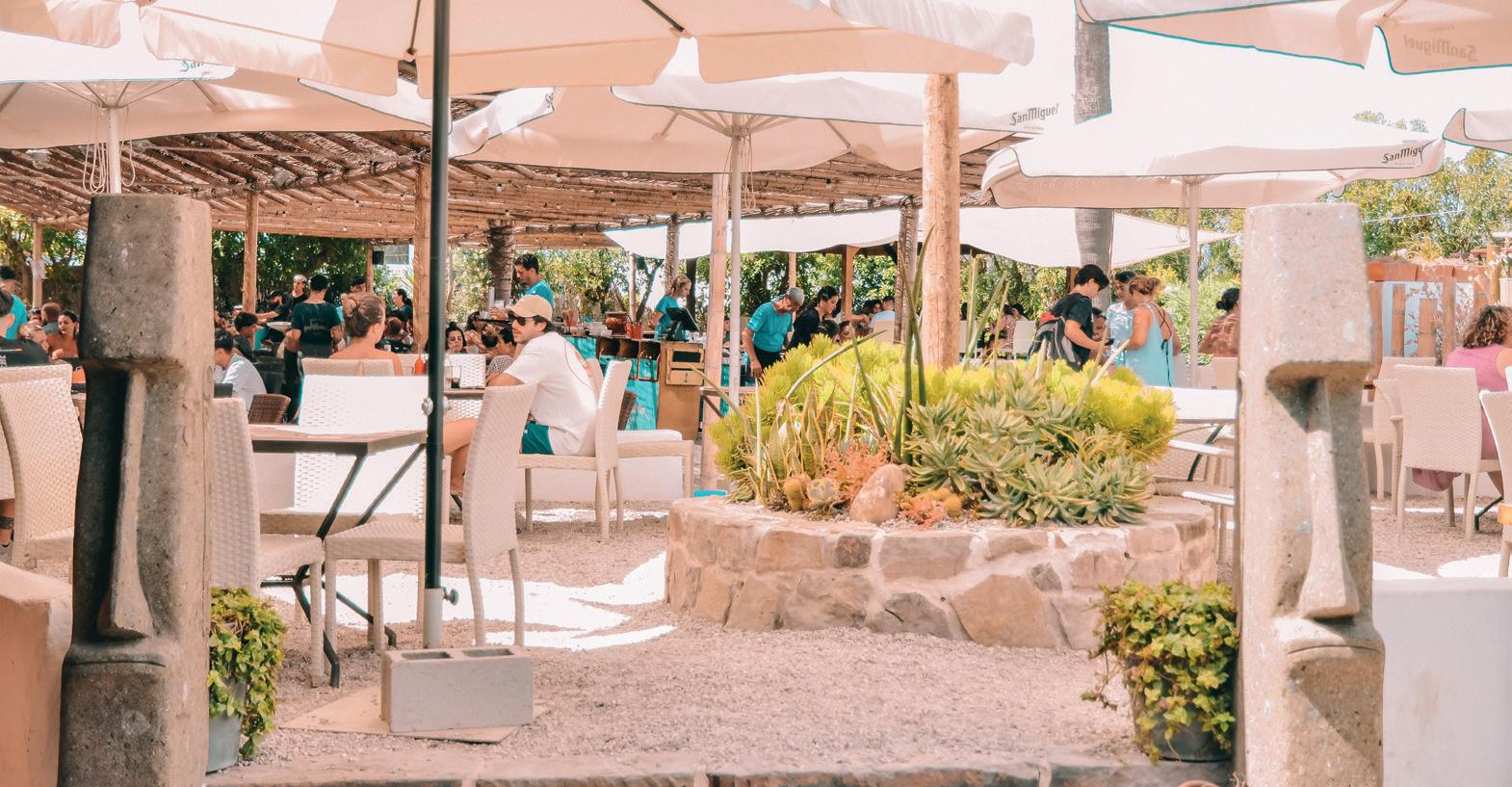
boats from Morocco.
It is also exciting that a Basque restaurant, Atxa, won a Bib Gourmand award from the Michelin guide last year.
This hidden spot, based in a 19th century townhouse, is run by chefs Laura Garcia and Arturo Perea, who met while working at three Michelin star Martin Berasategui restaurant in the Basque region.
Things bode well having won a Sol award from the Repsol guide just after opening in 2022 and looks to be heading for a star. Some of the best places to eat in Tarifa are on the way out of town.
I always like Chringuito Carbones 13, while the Hurricane hotel (see separate article) serves a legendary buffet lunch, popular with the locals and tourists alike.
Also track down Pacha Mama, which is an institution that can feed up to 1,000 people a day in the heart of summer.
Linked to the Slow Food Movement, it counts on the very best free range meats, from top breeds, including Simental and Galician Blonde, and with each cow needing to be at least five years old, and having been fed naturally in fields of grass.
“This is the only way to impregnate the fat with that characteristic aroma of grass and milk,” explains its maitre D.
Take note, when it is blowing a gale in Tarifa, Pacha Mama really comes into its own as it is brilliantly sheltered with a charming garden featuring a pool for the kids to play in.
Also very much worthy of note is the charming sheltered garden restaurant, El Jardin, at the Punta Sur hotel, near Valdevaqueros beach.
Again, it is brilliant for windy days, it being so sheltered, what it is best known for is its fresh, original dishes
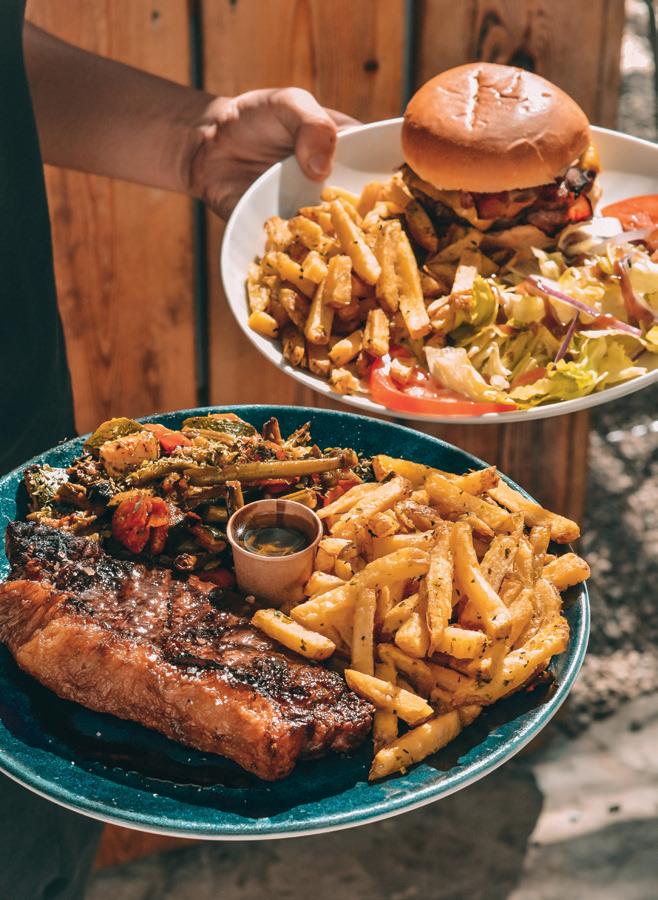
courtesy of head chef Ivan. He is a huge fan of the coast’s best local ingredients, such as tuna and retinto steak, but he always comes up with plenty of specials by the day.
The local tomatoes, with fresh basil and mozzarella are excellent, while the tuna sashimi - in a home-made ponzu sauce is a highly rated starter and very fresh.
COASTAL TRAWL
For foodies moving west out of Tarifa is one of the most exciting culinary journeys in Spain. It was two decades ago when I
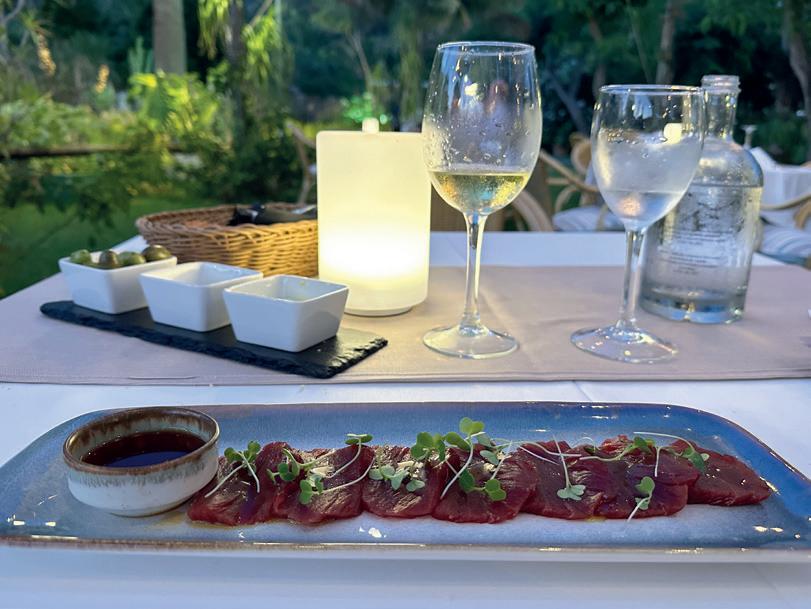
first visited the Costa de la Luz for a travel article for the Daily Mail.
I had heard a lot about the beauty and beaches of the coast, but one thing for sure, I was not expecting great restaurants. This was,
after all, Cadiz, one of Spain’s true backwaters and - statistically - the poorest province in the country.
However, thanks to a series of locals - including the late hotelier James Whaley, who set up the Hurricane hotel and businessman James Stewart in Vejer - I was given the knowledge to help me root out a string of secret spots.
In particular, I was guided to the heart of Barbate and its cathedral of tuna, El Campero, which has since become one of my favourite fish restaurants in Spain.
I was also sent out into the hills, to places like Santa Maria and Patria, where a series of charming places like Patria itself and Castilleria were found.
Next, I was nudged into El Palmar and Zahora, where today you will find the brilliant La Traina.
Then I found the most charming hotel, Antonio, in Zahara de los Atunes, and even better it also had a restaurant.
I was soon returning frequently, particularly after launching the Olive Press in 2006, loving the difference from the Costa del Sol or inland around Ronda.
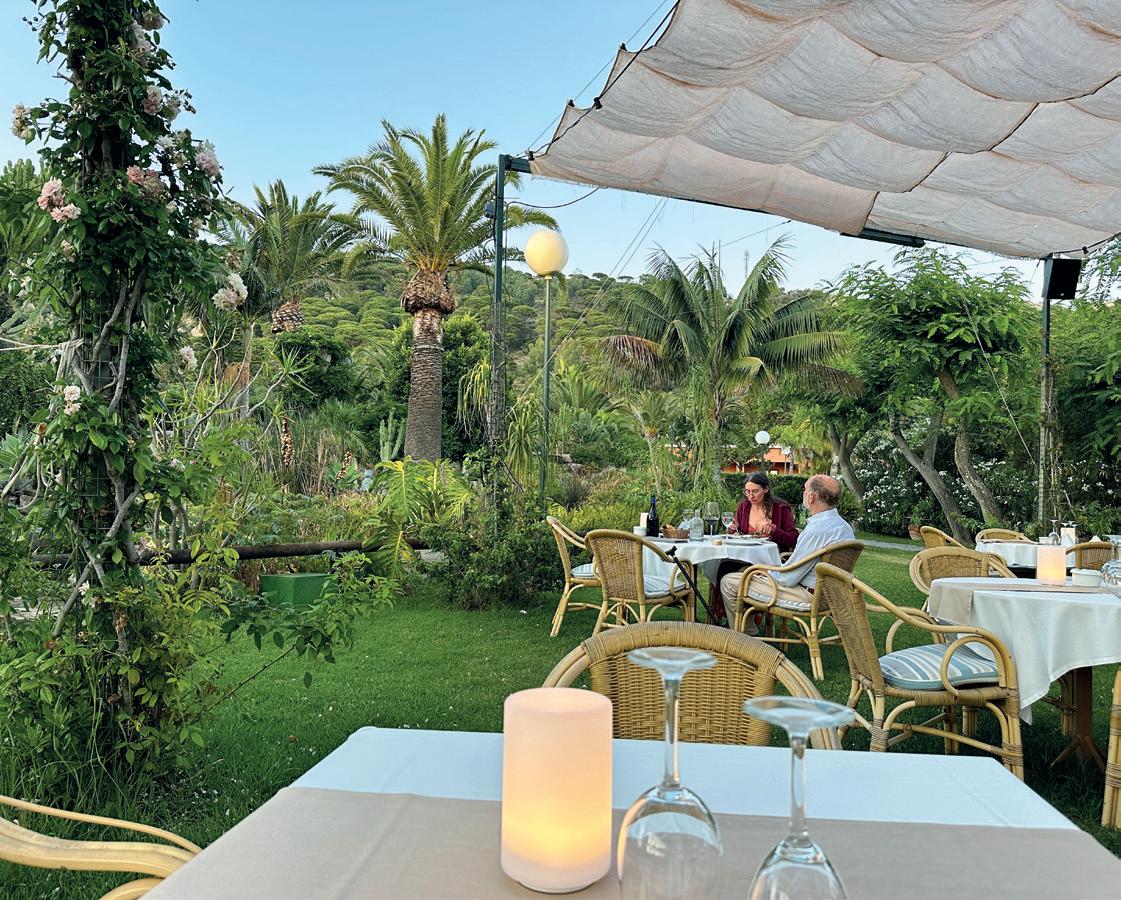
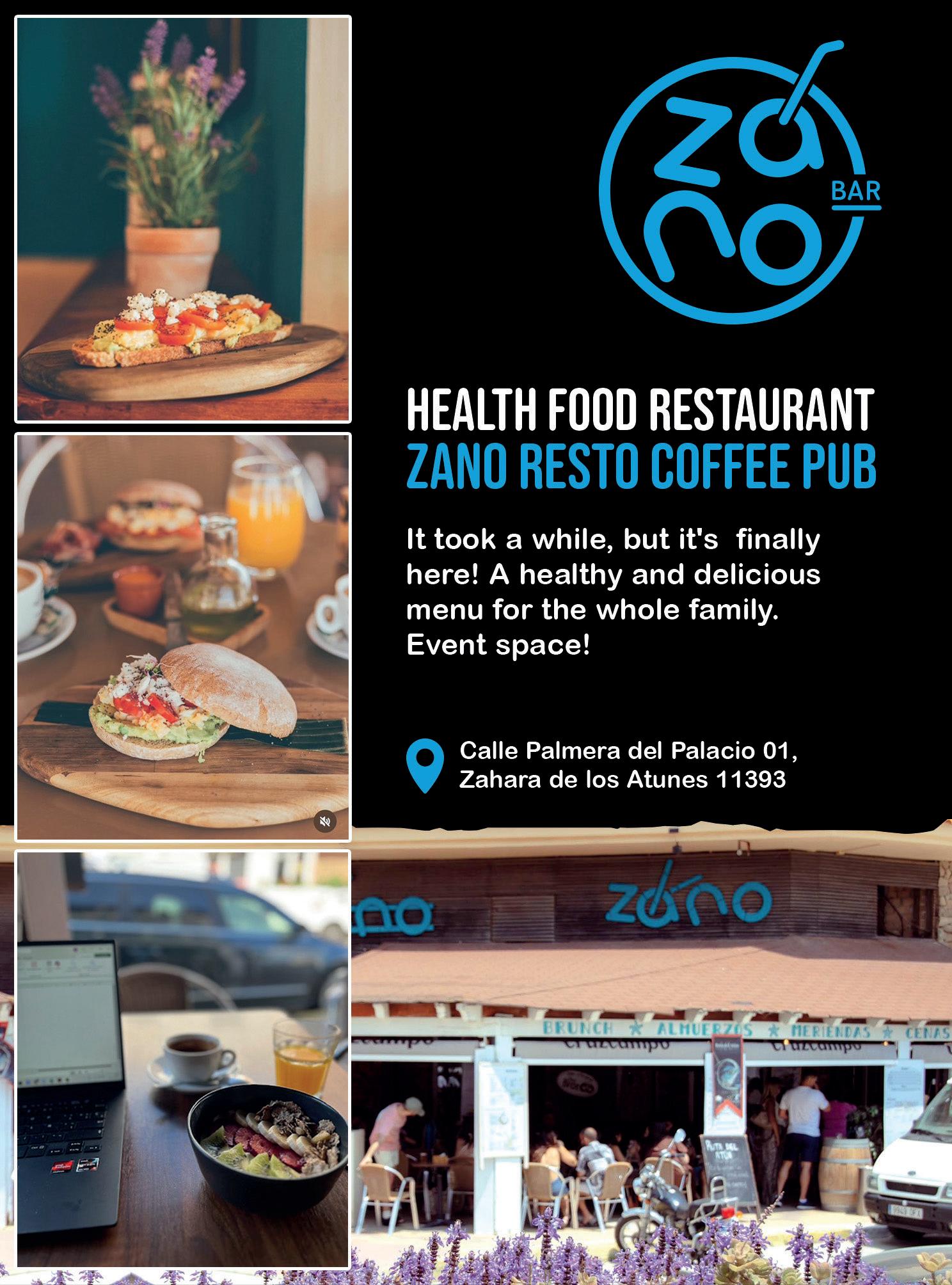
The real success story - indeed, the biggest change over the last two decades - has been the way that Vejer became the definitive Dining Capital of Cadiz and one of the best in Andalucia.
I’ve written about the reasons for this many times for the Olive Press and reviewed up to a dozen places in the town (see Nervecentre for Dining, on page 14).
But, two places I will always love eating at are at Califa and 4 Estaciones
These two joints typify the quality on offer in Vejer.
The Jardin de Califa has rightly become a genuine foodie pilgrimage with many travelling from
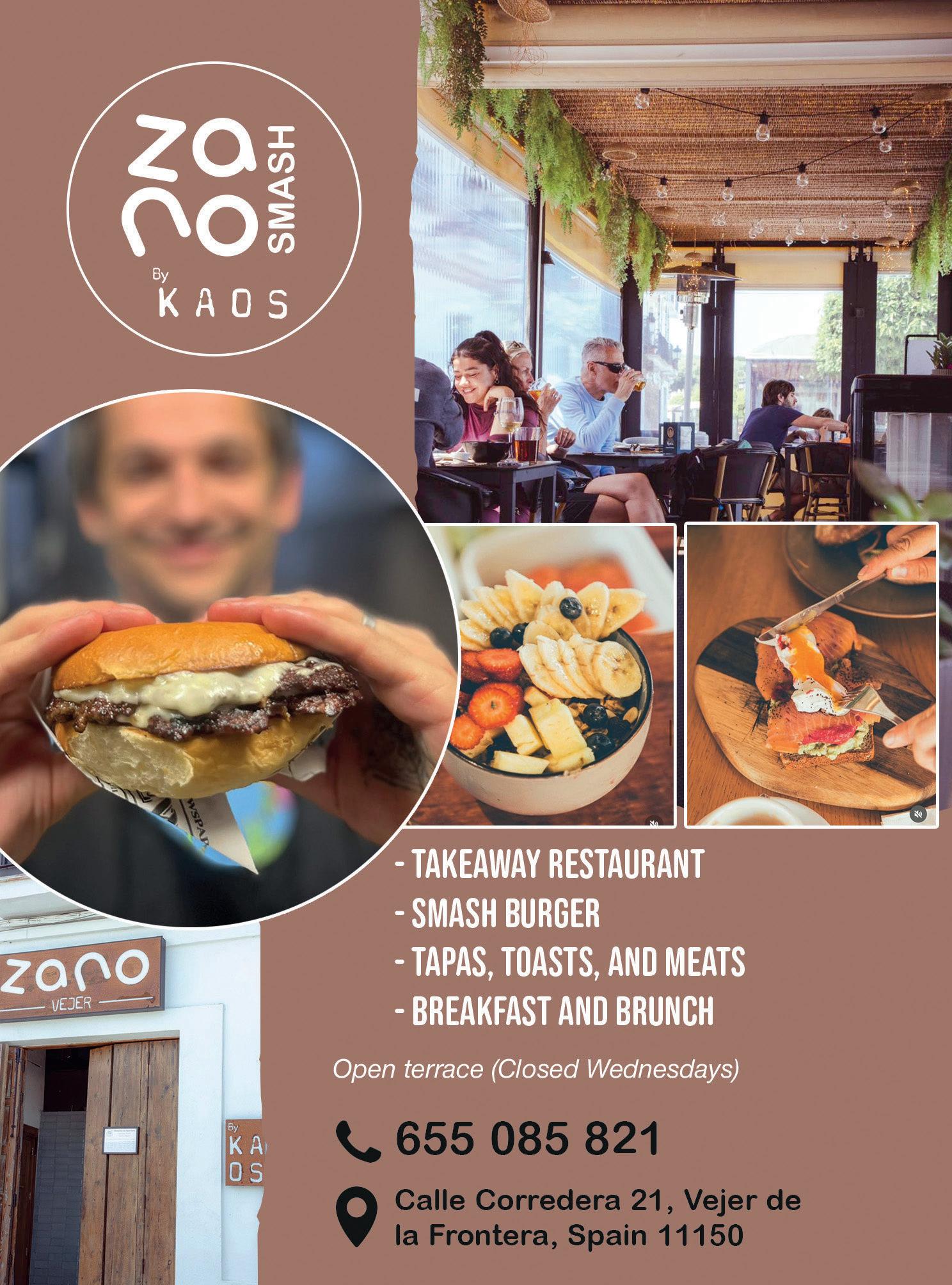
HARKING BACK
abroad and all over Spain to eat here.
You will need to book for this charming palm courtyard reached through the labyrinthine corridors of the 16th century Califa hotel.
Enclosed by ancient walls harking back to the days of al-Andaluz, it is
appropriately lit up with Moroccan lamps and counts on the smell of the jasmine, dama de noche and incense to add to the Middle Eastern mystique.
The menu is a wonderful trawl of Spain and north Africa, put together by a very skilled multicultural kitchen.
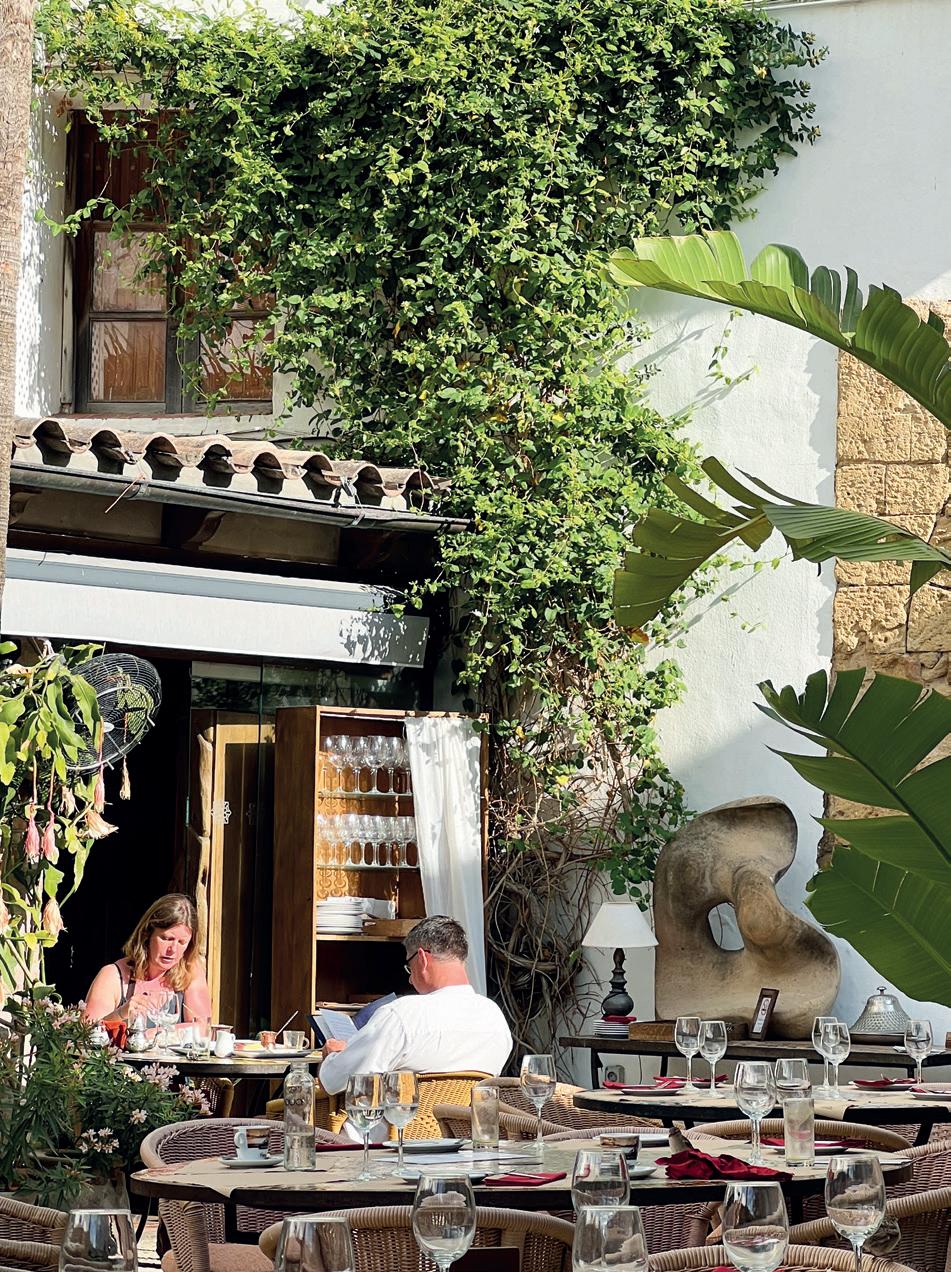
If I had to plump for one dish go for the ‘pas-
tela’ filled with chicken, almonds and cinnamon, baba ganoush and shish taouk.
It’s no surprise that the group has opened a string of other restaurants in town, including the simple, yet charming Fez, which sits in the heart of town.
A step up is the brilliantly sited Califa Tapas, on the famous Calle Corredera, with views to match the food. Forget the name ‘tapas’ it has a much bigger mix of dishes and the service is always second to none.
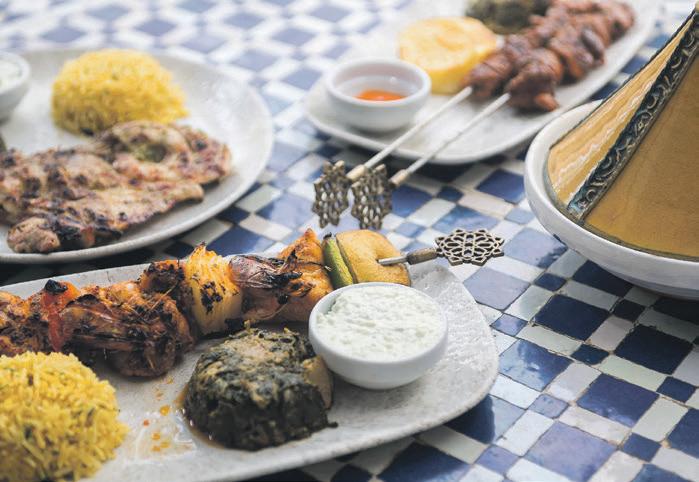
Just a stone’s throw away is 4 Estaciones where Alberto Reyes has been cooking up a storm for a decade now.
The food is nothing short of excellent and it is decidedly seasonal, with his ‘sorbete de gazpacho’ the real summer winner. Coming with olive oil ice cream, prawns, ham and free range egg and black pepper it is a
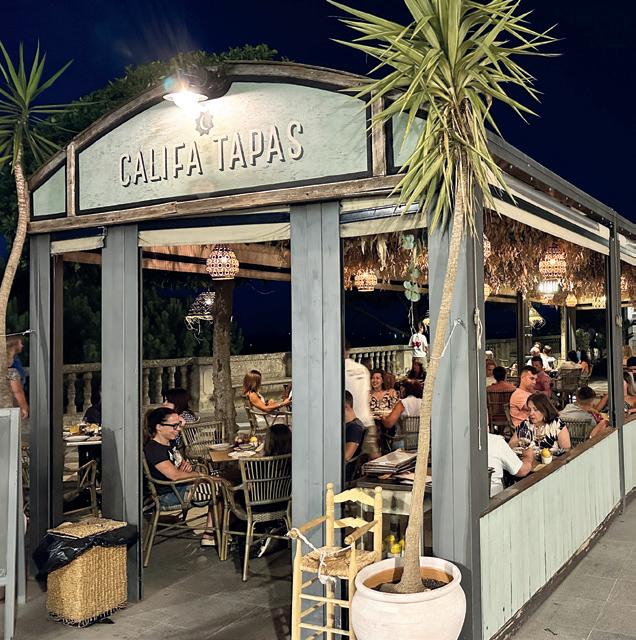
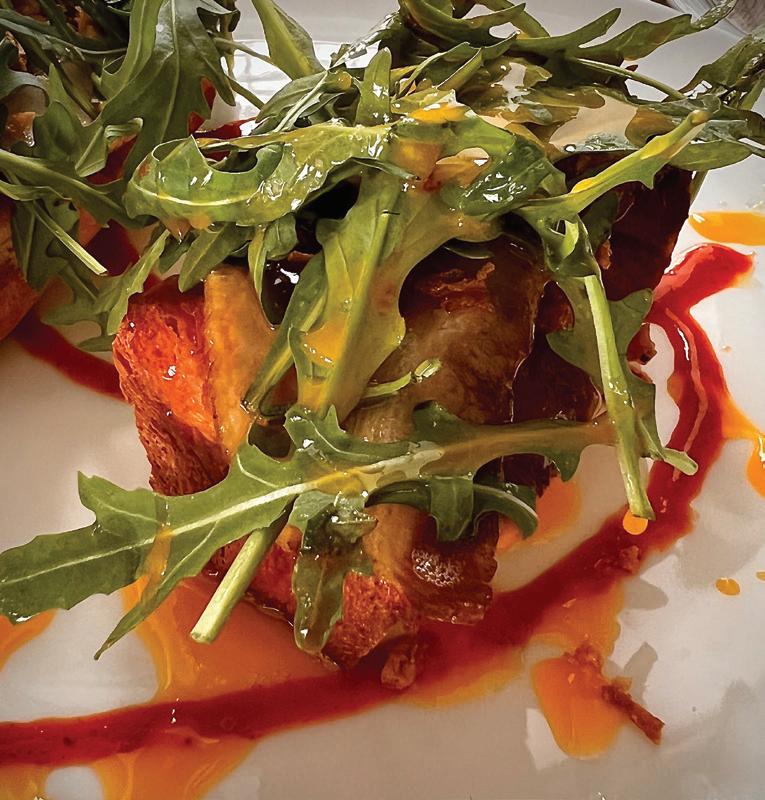
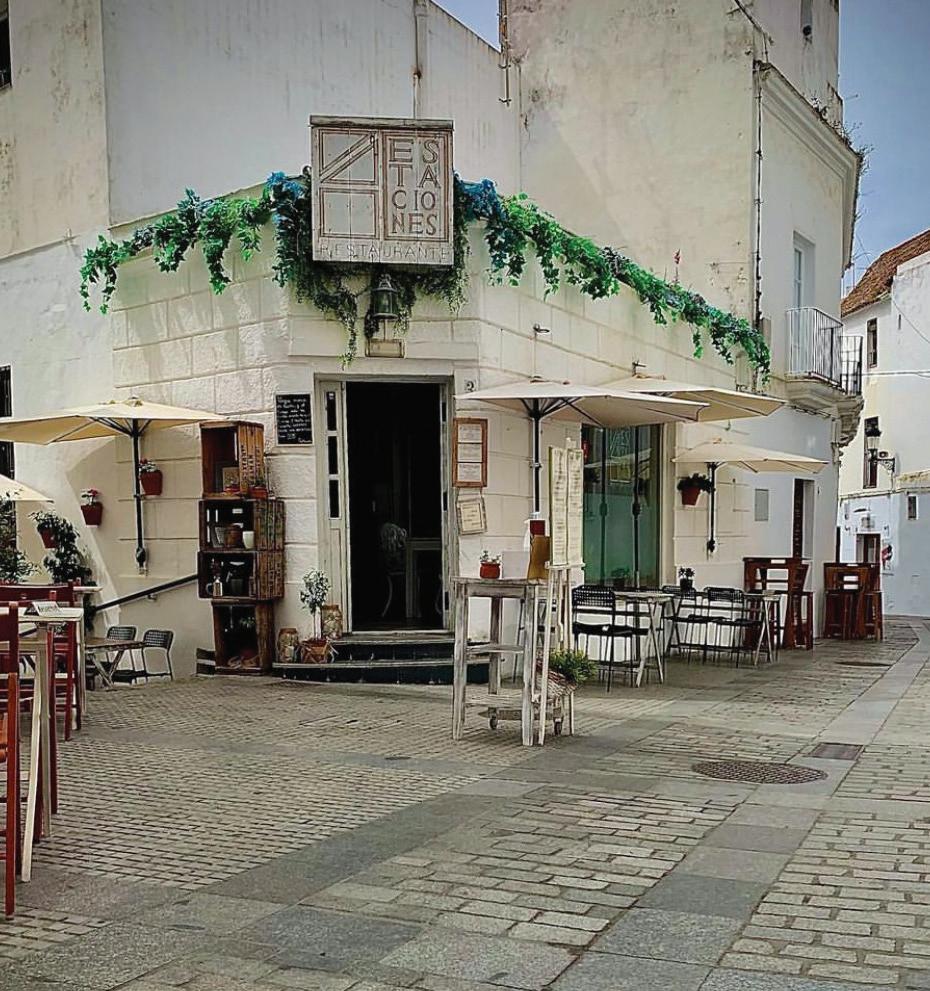

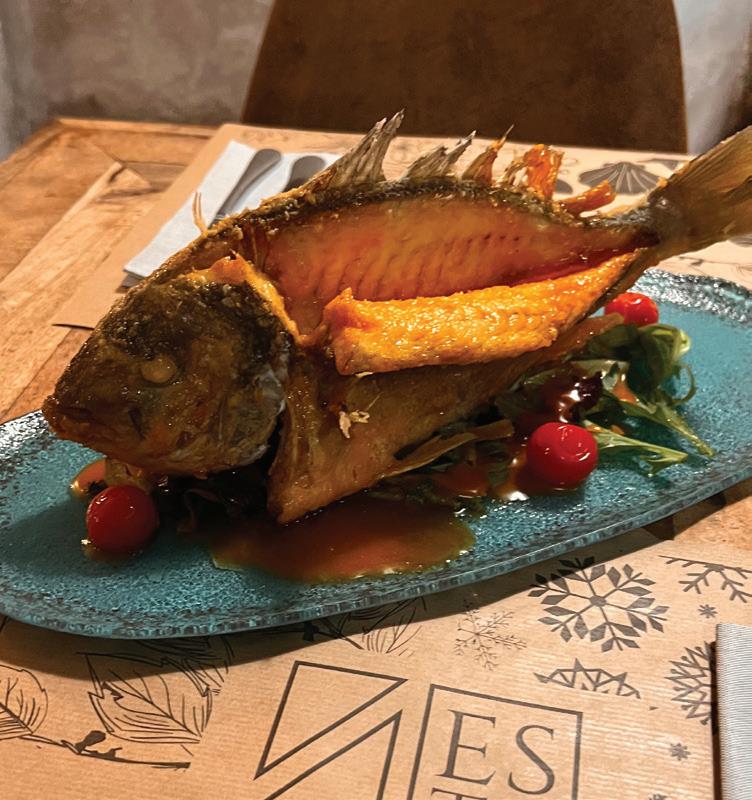
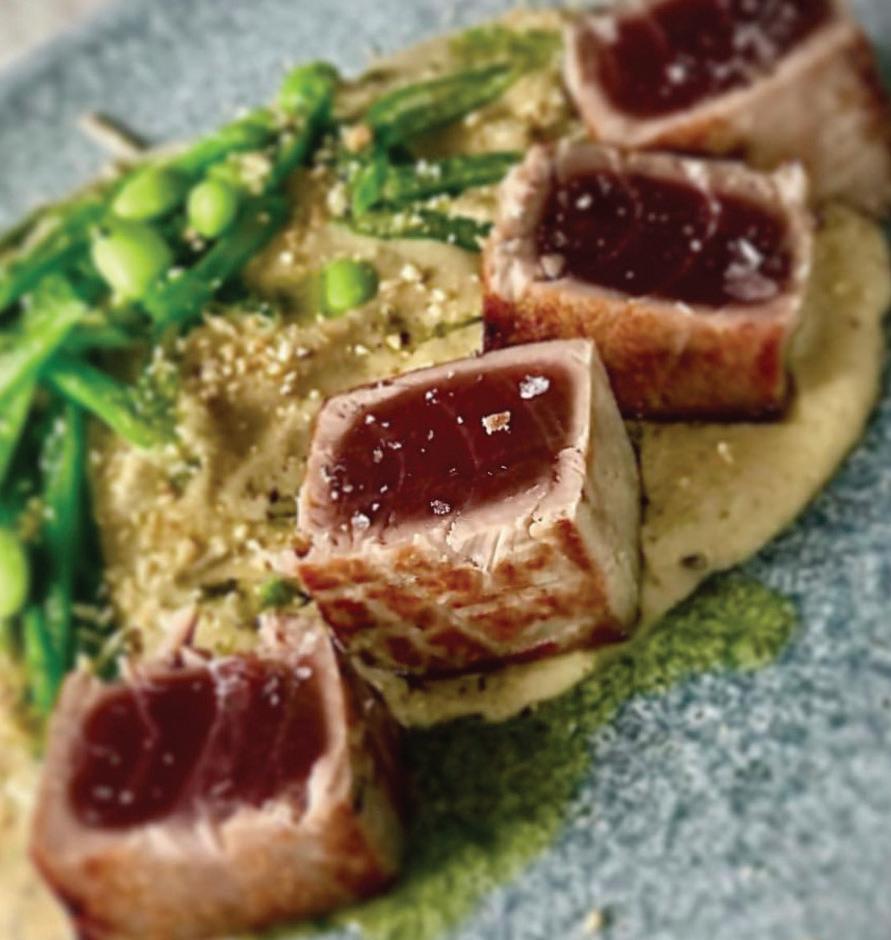
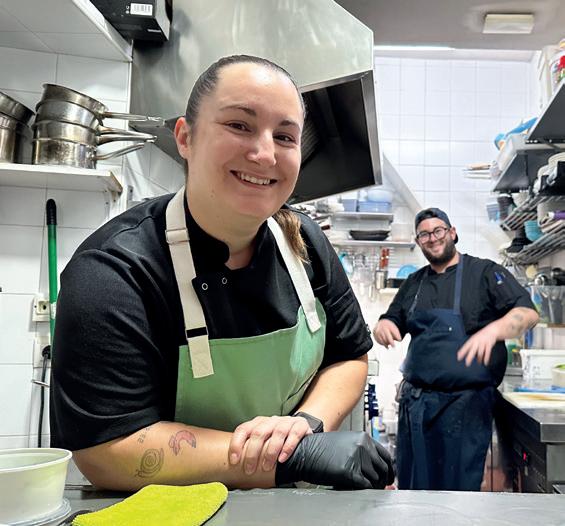
dish made famous at three Michelin star Diverxo, in Ma drid.
A ravioli dish of wontons filled with crab and lobster is anything but your ordinary dish for these parts and it’s handled well and with panache … rich and delicious!
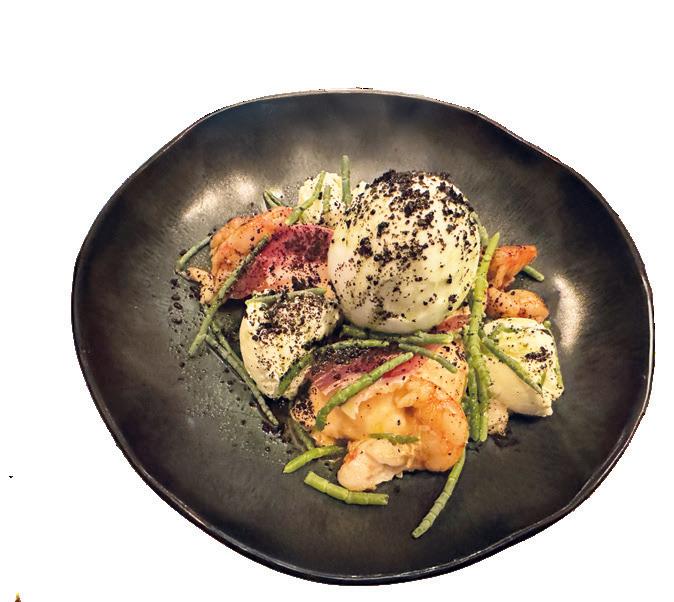
surefire way to cool down.
I’ve actually had it three times now at this exact time of year, when the mercury climbs up towards 40 degrees, and I keep forgetting how cool it is.
I also love his Saam with a tail of King Prawn, guacamole, trout roe, spring onion and kimchi, a variation on a
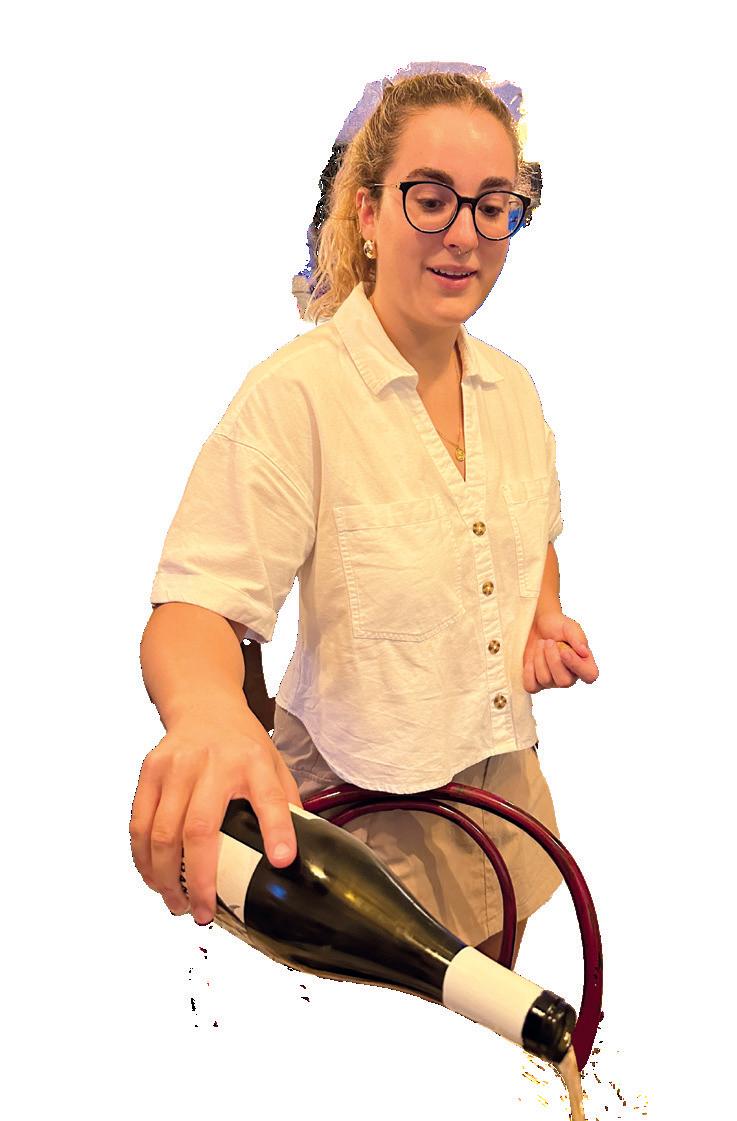
Much of his new range of dishes is thanks to his new head chef Esperanza Macias, who picked up a range of skills working at nearby Aponiente, which with three Michelin stars is Andalucia’s best restaurant.
Another brand new spot is Hierbas by Patria, which also sits on the Corredura.
I was particularly excited to try it, given that it is the new spot of Ase and Thomas Donso, my favourite restaurateurs on the Costa de la Luz.
This is very much a diffusion place to their brilliant Patria restaurant, some ten minutes away inland from Vejer.
The focus is healthy dishes, explains Dane Thomas, and it is sensibly very different from Patria.
It is a much simpler menu to start
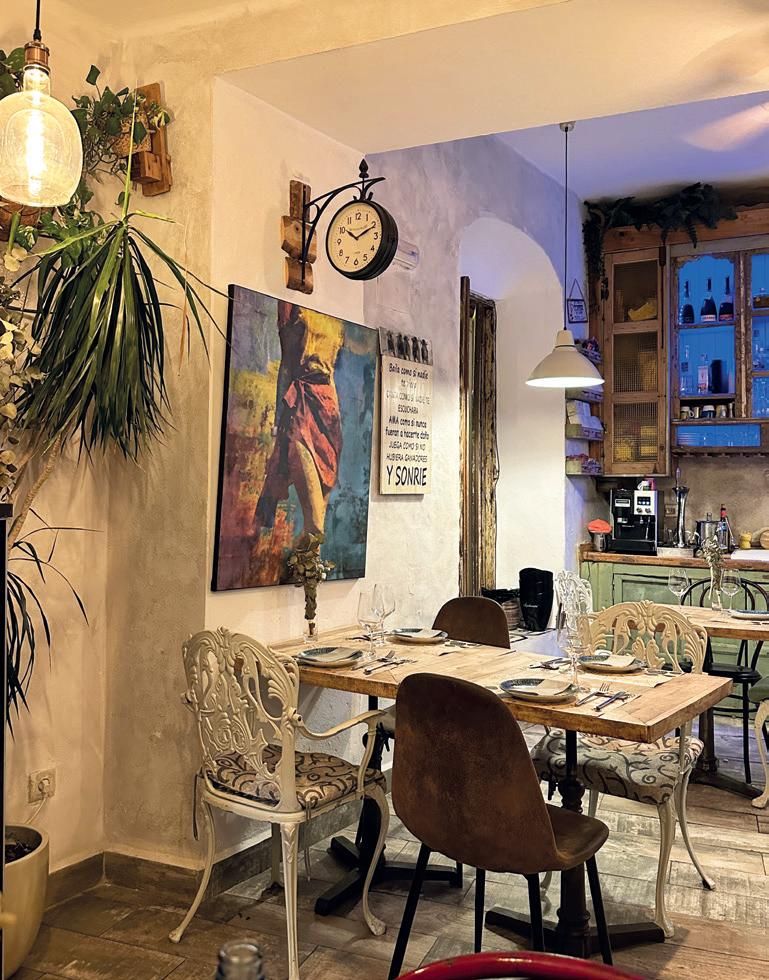
with including a salad section, a sandwich section, and a section of sharing dishes including cod croquettes, a so-called ‘Canadian wrinkled potatoes’ with mojo sauce and alioli.
I instead tried the lightly fried aubergine with guacamole and pico de gallo, literally ‘roosters beak’ which is actually a Mexican dish of tomato, red pepper and onion. It was delicious, as was the ‘bol de burrito’ a highly original and classic Mexican luncheon dish of refried rice, corn, carrot, cheddar, onion , chili beans, lettuce, gherkins, red peppers and more.
“The idea is you mix it all in and, bingo, you’ve got a cracker,” explains Thomas.
“Basically I always wanted to open a sandwich place. I like them as do most Scandinavians and I didn’t just want bread with a bit of ham and cheese… we are trying to do something different - quality bread from a mother doe Italian bakery.”
Another new place is Zano Smash by
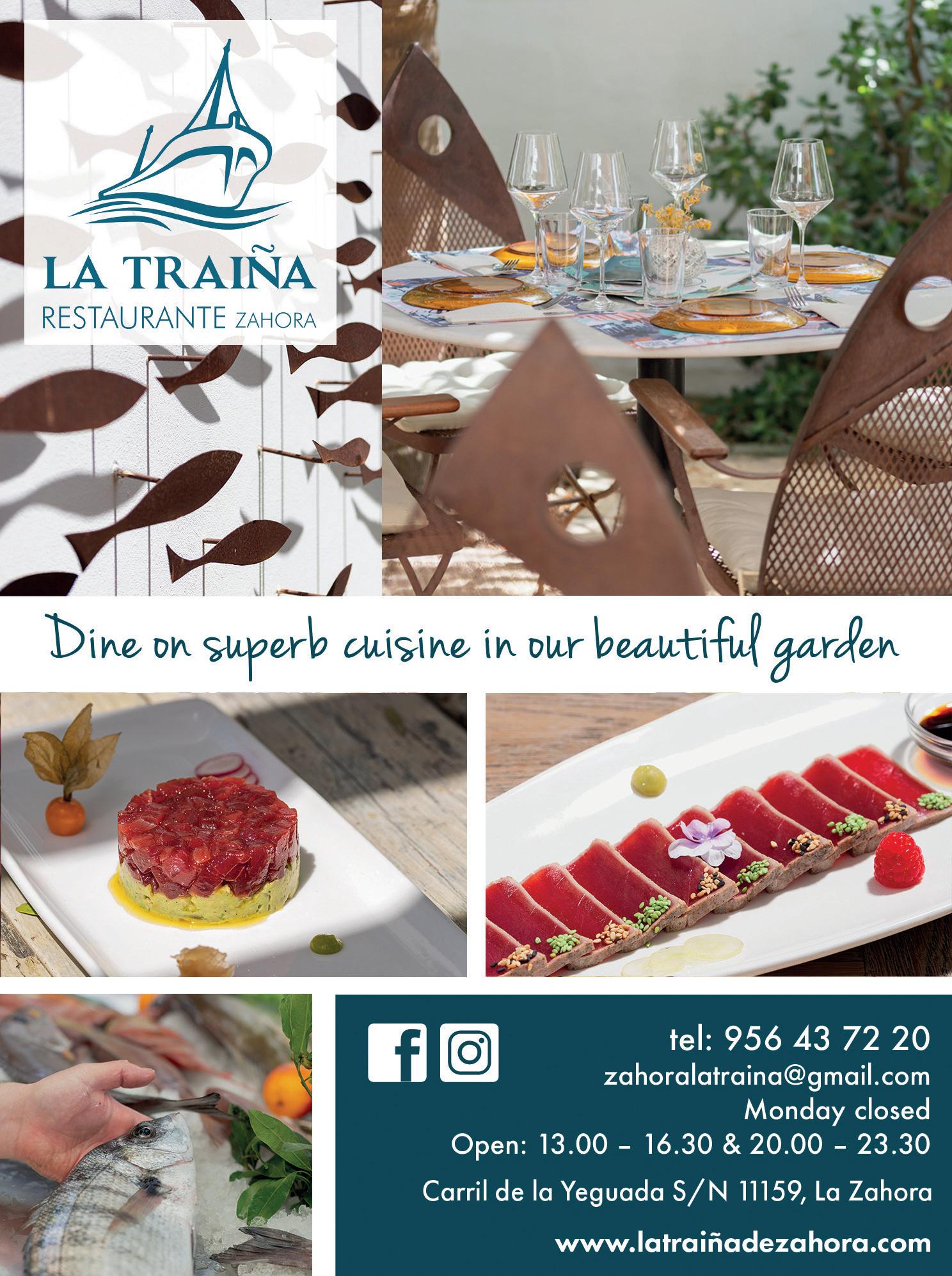
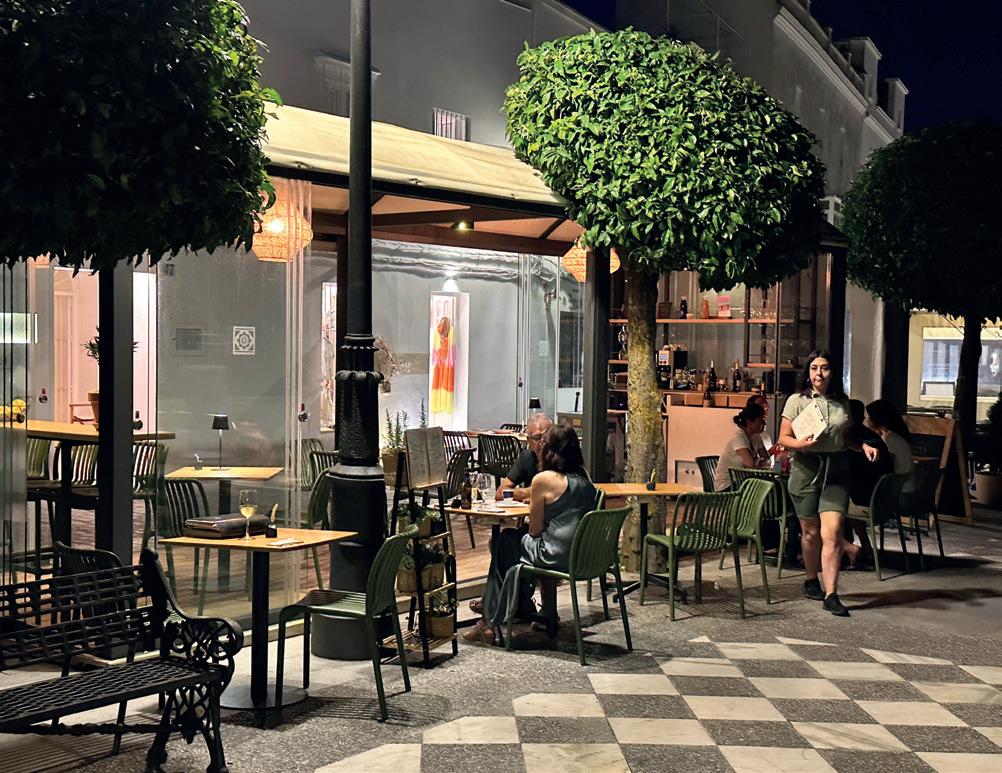
Kaos, one of the most intriguing names
I’ve heard for a restaurant in recent years. It has been set up by Argentinian dynamo Felipe, alongside his pal, chef Joseph from Cambridge and its USP is very much burgers and quality meat.
It’s a clever niche for this town, which has just about everything else and Joseph grew up in a family of chefs and has been cooking since the age of 16.
“I actually had my own burger van and have done a bit of time at a few Michelin restaurants, so hopefully I know what I’m doing,” he says.
The restaurant has hired two local brothers Antonio and Pablo to run the joint, as they have another in Zahara.
I was sent out a ‘Kaos burger’ chosen by Pablo which came with three patties of retin to steak, Edam cheese and a special sauce which has go chujang pasta, kimchi and black garlic, lime and mayonnaise. Bloody hell. This is one hell of a burger. It won’t disappoint.
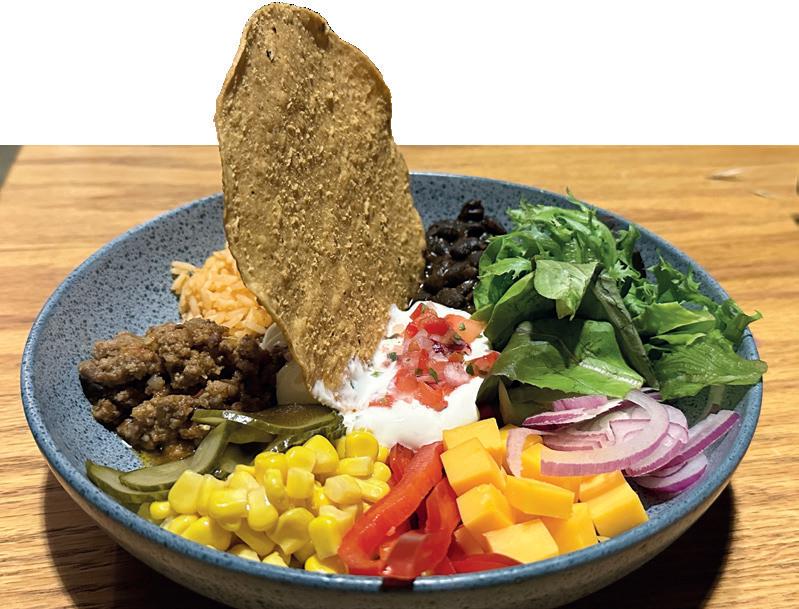
dried tuna … Pastel de atun with asparagus and payoyo cheese - real Cadiz - was like a pastel cabracho, very light, subtle
although I’m not sure it warranted the strawberries on top
Next I had the Tarantelo bajo with spicy tomato in a sauce of chives and two root vegetables parsnips and kohlrabi pickles (google it and check the photos !)


HIDDEN ZAHORA
Tucked away in the hamlet of Zahora, some ten minutes south of Vejer is one of those places you pass in the blink of an eye, but you miss at your peril.
Set in a leafy garden behind a high wall, La Traina is the genuine dining secret.
The creation of DJ, Antonio, and his brother Alex, a talented chef, their encyclopedic knowledge of fish and seafood is tip top, hence naming the place after a type of trawler.
This is one of the best places to eat the
classic blue fin tuna on the coast, it being very near the fishing port of Barbate.
The tartare is unbelievably good although I also love the sashimi of ventresca and, in particular, the tartaki, which comes with no less than 12 generous slices of delicious tuna belly. But each year they add so many exciting new things! And not just the chairs shaped like fish heads.
The ajo blanco with blue fin was so well handled … the consistency of the almonds with a touch of sweetness and the saltiness of the small chunks of air
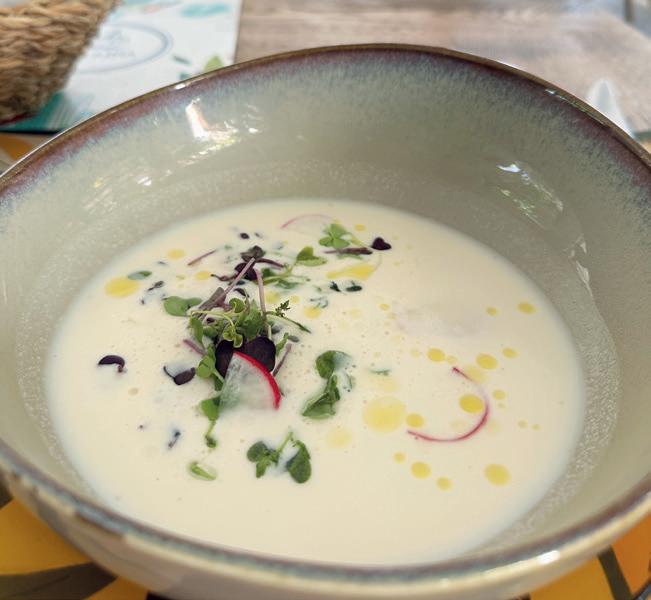
A pudding of pine nuts with rosemary and juniper berries called appropriately postre La Breña comes from the nearby hills … and you can actually taste what you smell on nearby hikes … even more so when a glass of local moscatel and Pedro Ximenez is proffered by young waiter Christian, a local chap who’s fascinated by the food and has worked here for 4 years … It’s from the local vineyard Bodegas Gallardo and has a tiny touch of orange zest … strange but oddly complimentary…
AWESOME ANTONIO
In Zahara de los Atunes itself is easily one of the best fish restaurants in Spain.
Not surprising in a town named after its famous fish, Antonio is its real standout place to eat and stay.
I first found it two decades ago while working for the Sawday’s Special Places to Stay travel guide and listed it in a
travel piece for the Mail.
Run by sergeant major Alejandro it is a well oiled machine and it has the swagger of a top class joint you’d find in San Sebastian or Madrid.
The tuna dishes are the best in Spain and they are served with real panache, while the ham from nearby Jabugo is spectac ular.

Grab a table and I promise you won’t forget it, but be warned it is not easy to get one and it often helps if you’ve booked a room in the hotel next door.
PERFECTION AT PATRIA
It is in a small hidden hamlet in the back of beyond that you will find the best dining secret of Cadiz.
Patria is the redoubt of zen-like expats Ase and Thomas Donso, from Denmark, who have waved their magic culinary wand at their low key restaurant for well over a decade now.
One of the most scenic spots in Andalucia, it has a fabulous wine list, a varied seasonal menu and local ingredients, including baby fennel from nearby Conil or coriander from his garden. Enjoy the romance of its candle-lit flagstone terrace, which harks to the
Alps or Pyrenees with its vine-clad veranda and expanses of oleander.
I can recommend dishes like pan brioche with beef steak marinated overnight, with gherkins, chives and dill and served on a baby lettuce. Or try the smoked beef with cabbage, tarragon, mustard and goat’s cheese foam rolls. But chances are they won’t be on the menu.
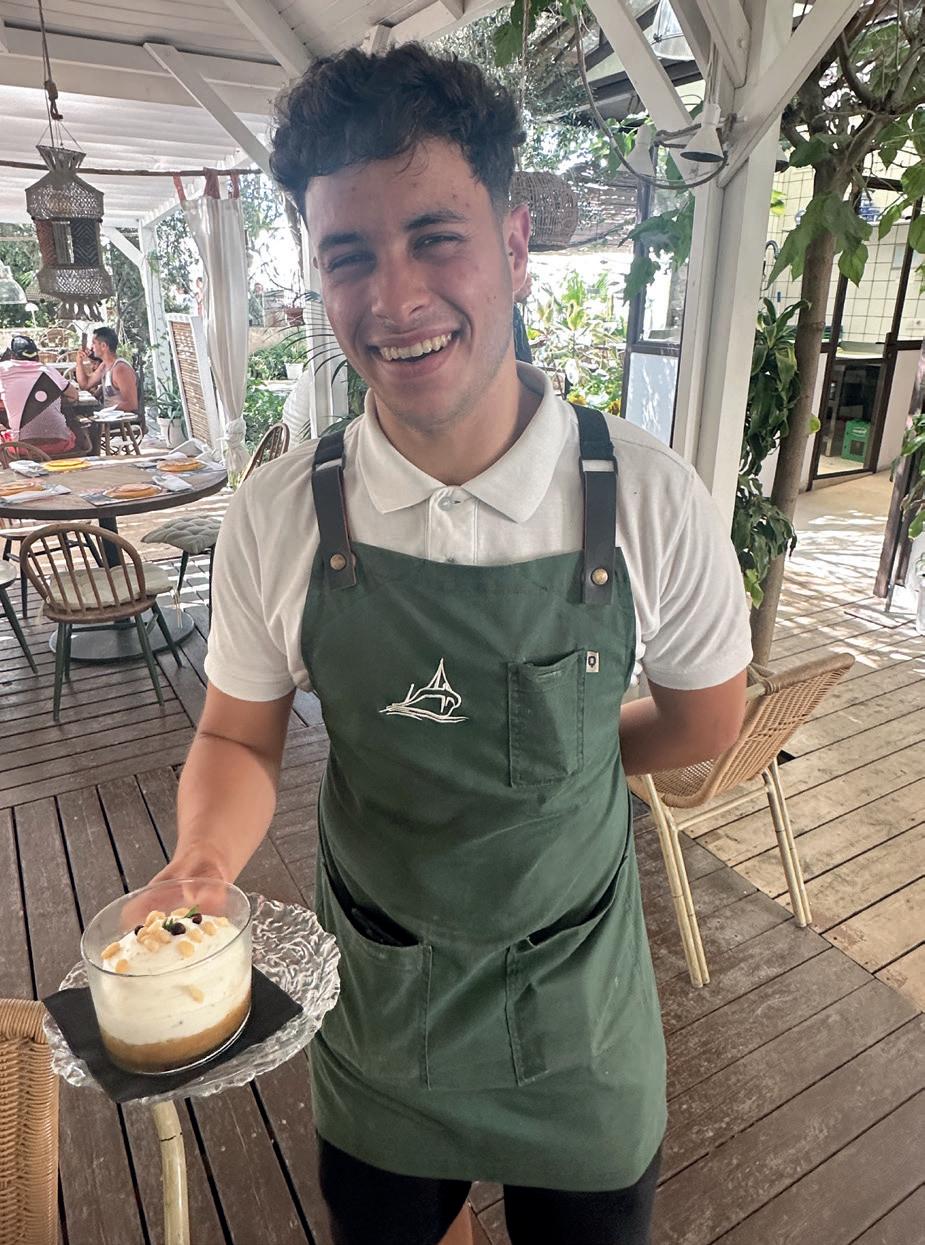

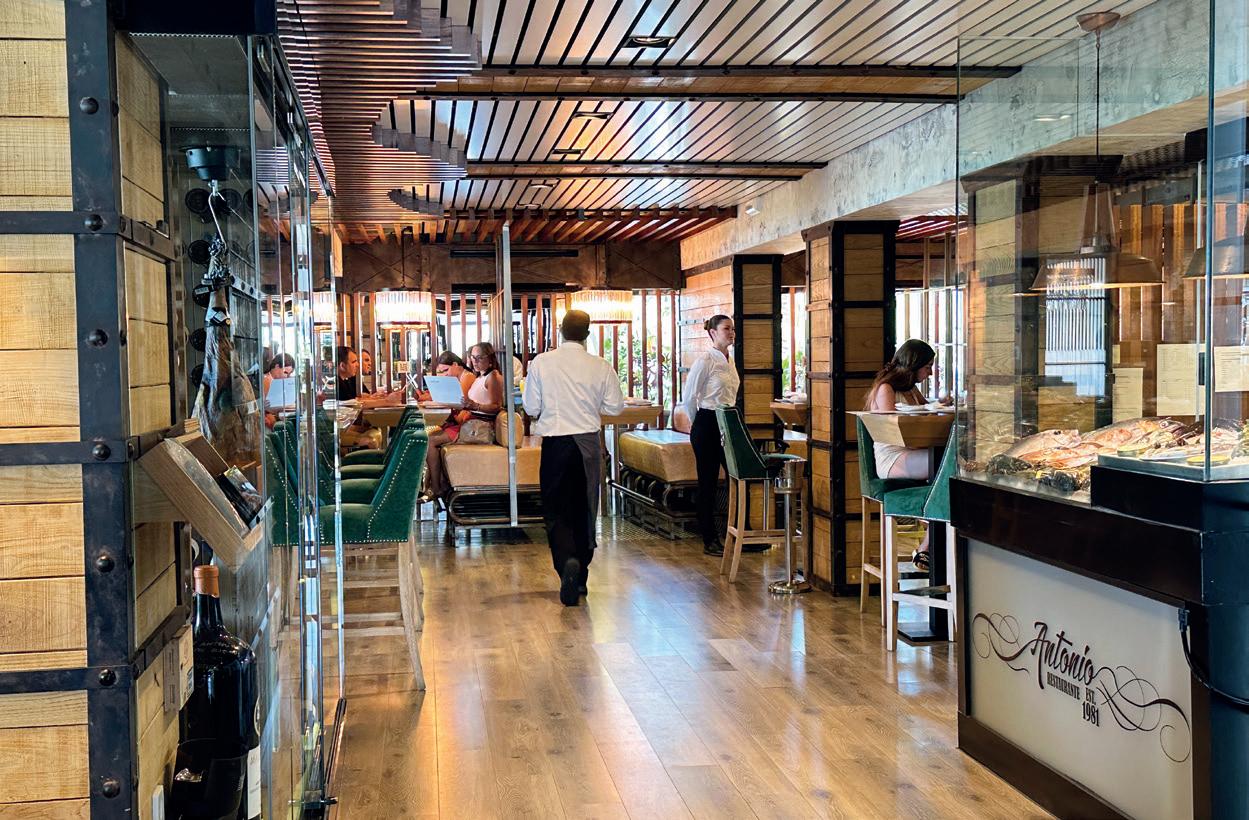
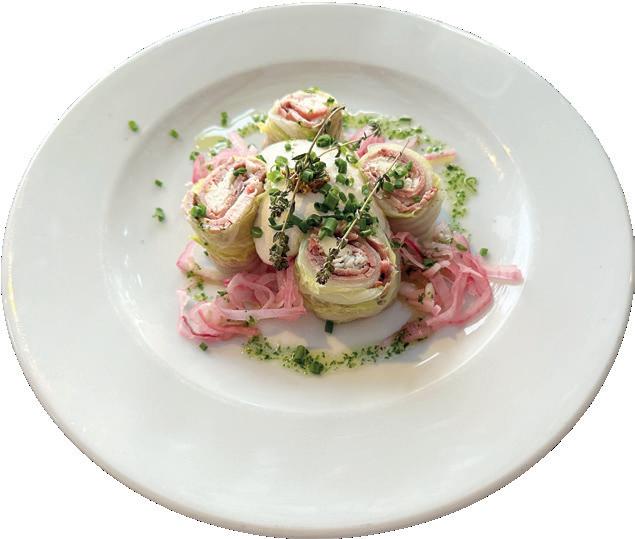
Another time I had bravas, which are sliced with a ‘mandolin’ and carefully baked, then finally deep fried and served with fresh tomato and aioli and chives. The comforting crunch gave way to a softy, succulent inside.
A carpaccio of local Barbate prawns were carefully sliced and served with salicornia and a kimchi sauce, with some cherry tomatoes.
“We don’t just source our ingredients locally, but our staff are all too, literally from the nearby hamlet,” explains mum-of-two Ase, whose kids are often helping out in the sala.
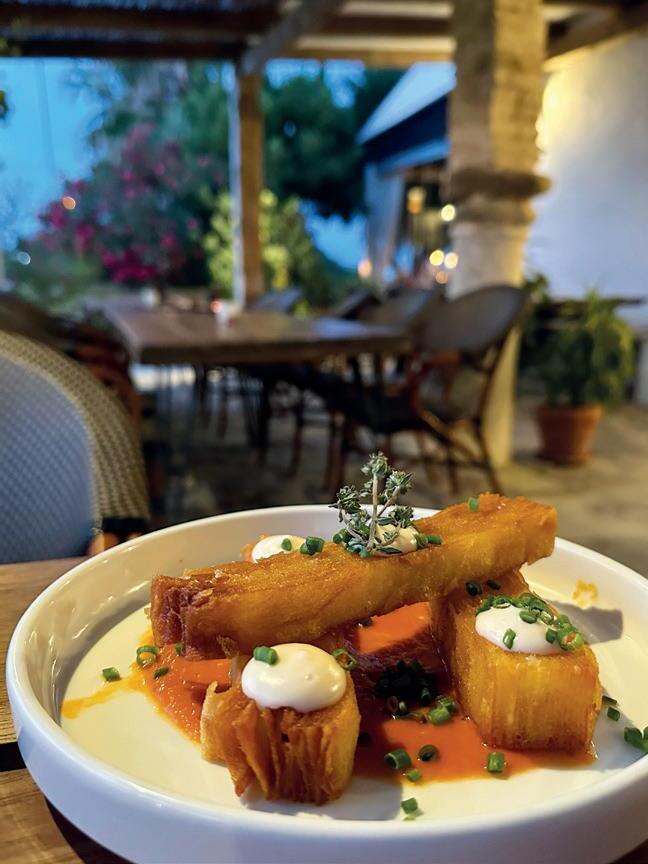
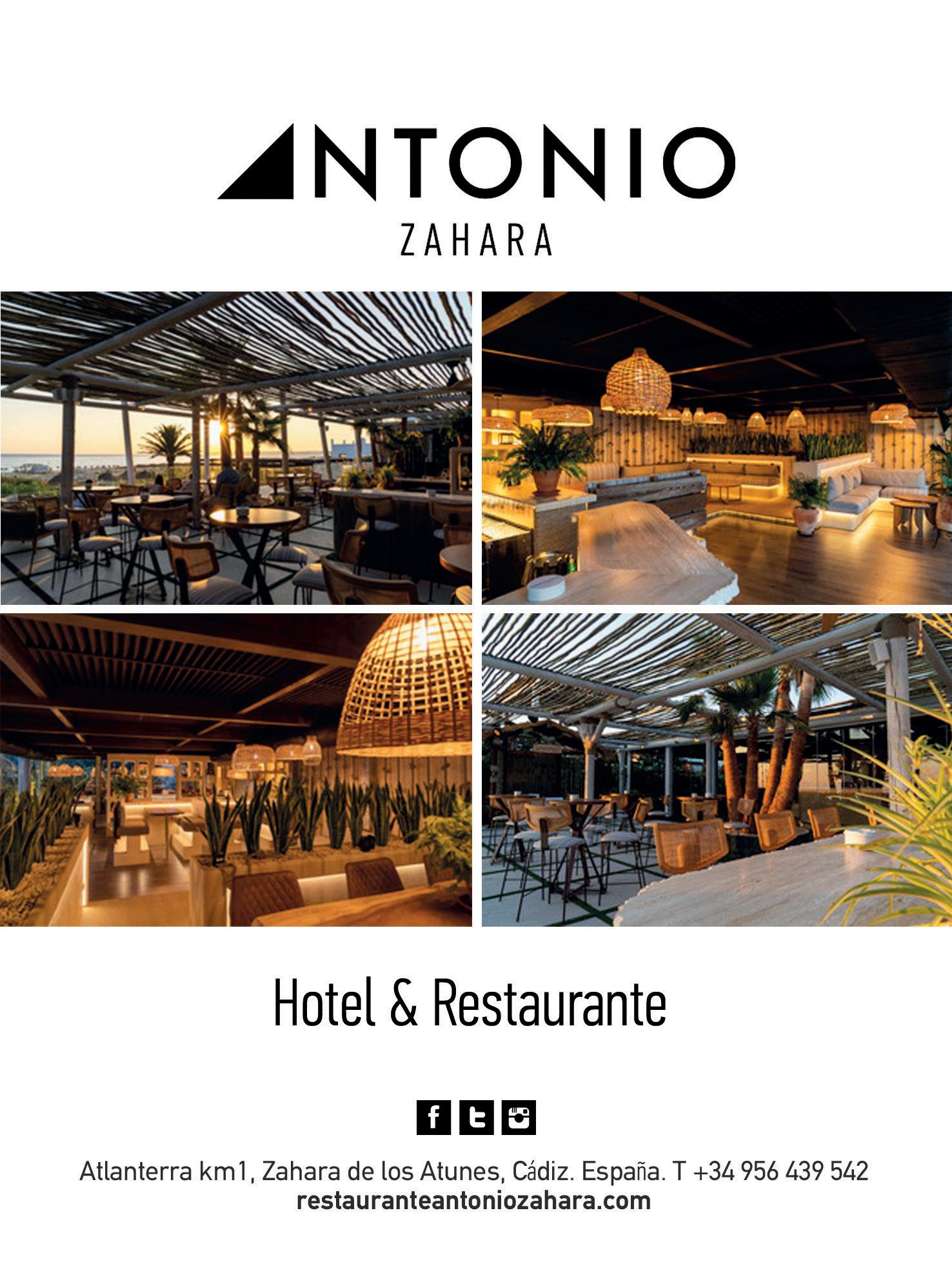
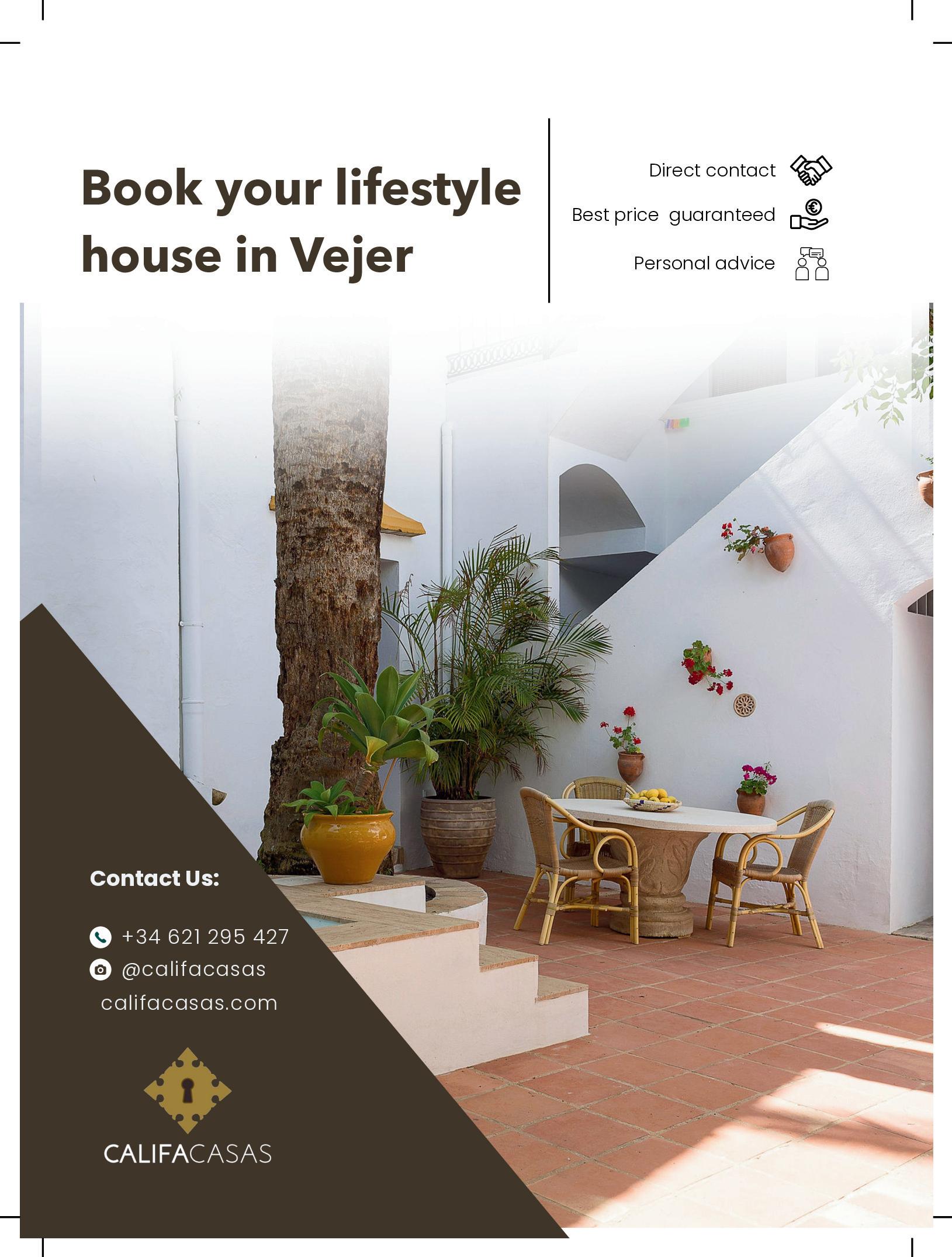



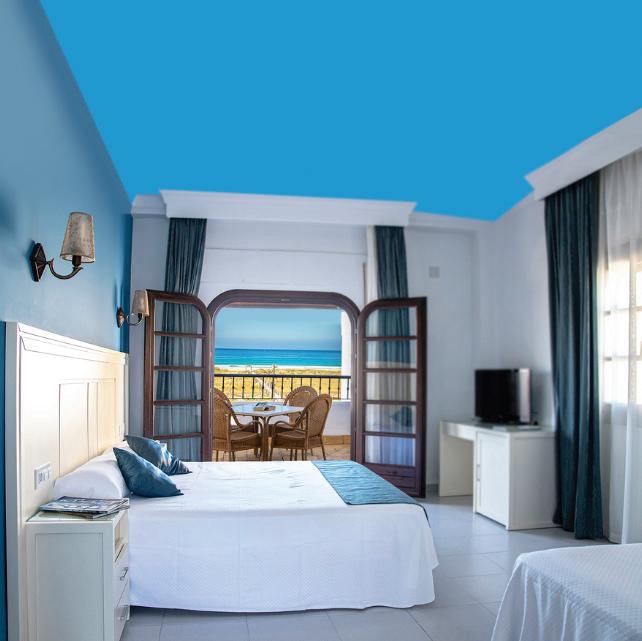

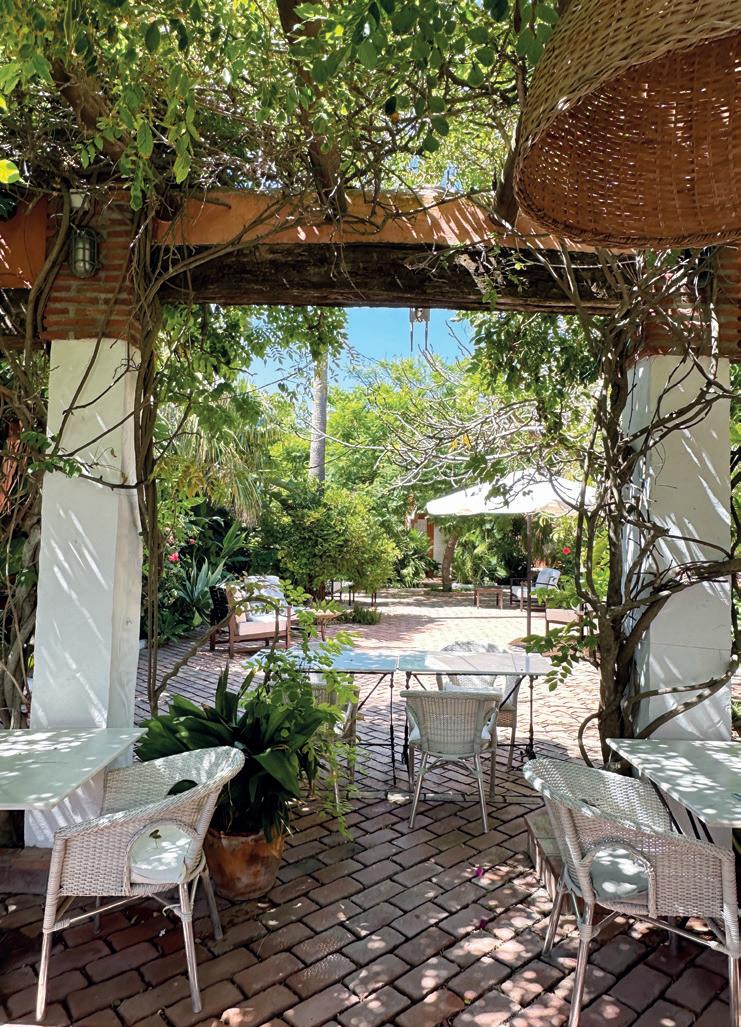
ROM beachside boutiques to historic houses and from expansive estates to restaurants with rooms, there are so many great places to stay on the Costa de la Luz.
Those looking for romance though will inevitably head to Vejer de la Frontera, where not only can you wine and dine your loved one, but you have oodles of history to enjoy.
The number one place to stay is historic La Casa de Califa, at the top of the town in its loveliest square. This Moorish manor house sits around a leafy central patio, where guests take breakfast and dine under candlelight each evening (but don’t forget to book).
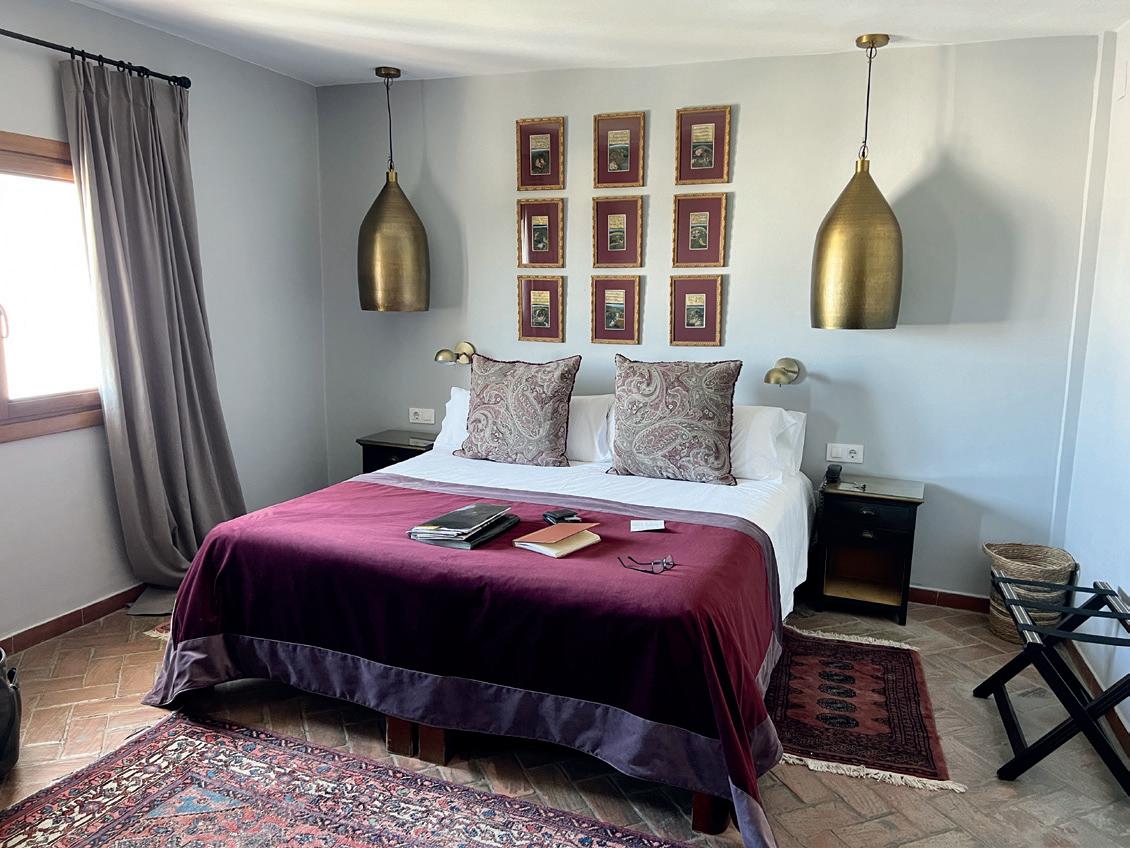
Bit by bit its rooms have gone through a complete upgrade over the last couple of years thanks to talented Scottish designer Ellie Cormie, who has an incredible eye and uses a mixture of global influences in her work. Next door, Plaza 18, is a classic design hotel which oozes style and history, but also features sumptuous suites as rooms.
The best have roof terraces facing the wonderful white town, while the downstairs communal terrace is comfort personified.
Designed by British interior designer Nicky Dobree, it has been created out of
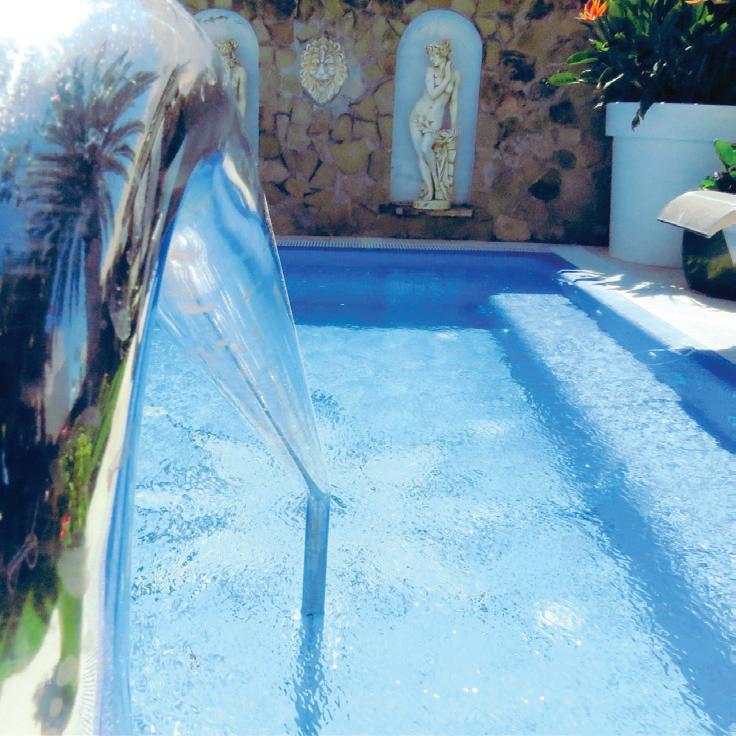
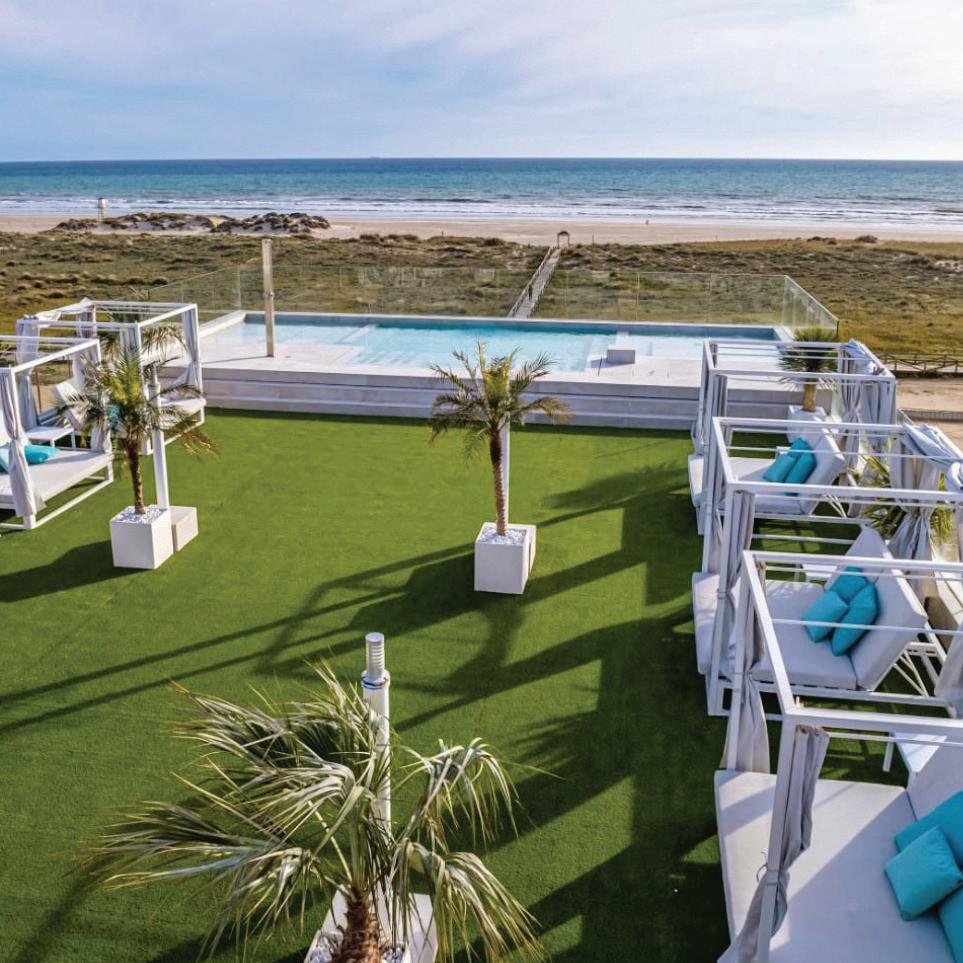
DREAMY Costa de la luz
hotels on the Costa de la Luz
a charming 19th. century manor house.
The sitting room downstairs offers the grandeur of an English country estate with the colours and light so classical of the Cadiz region
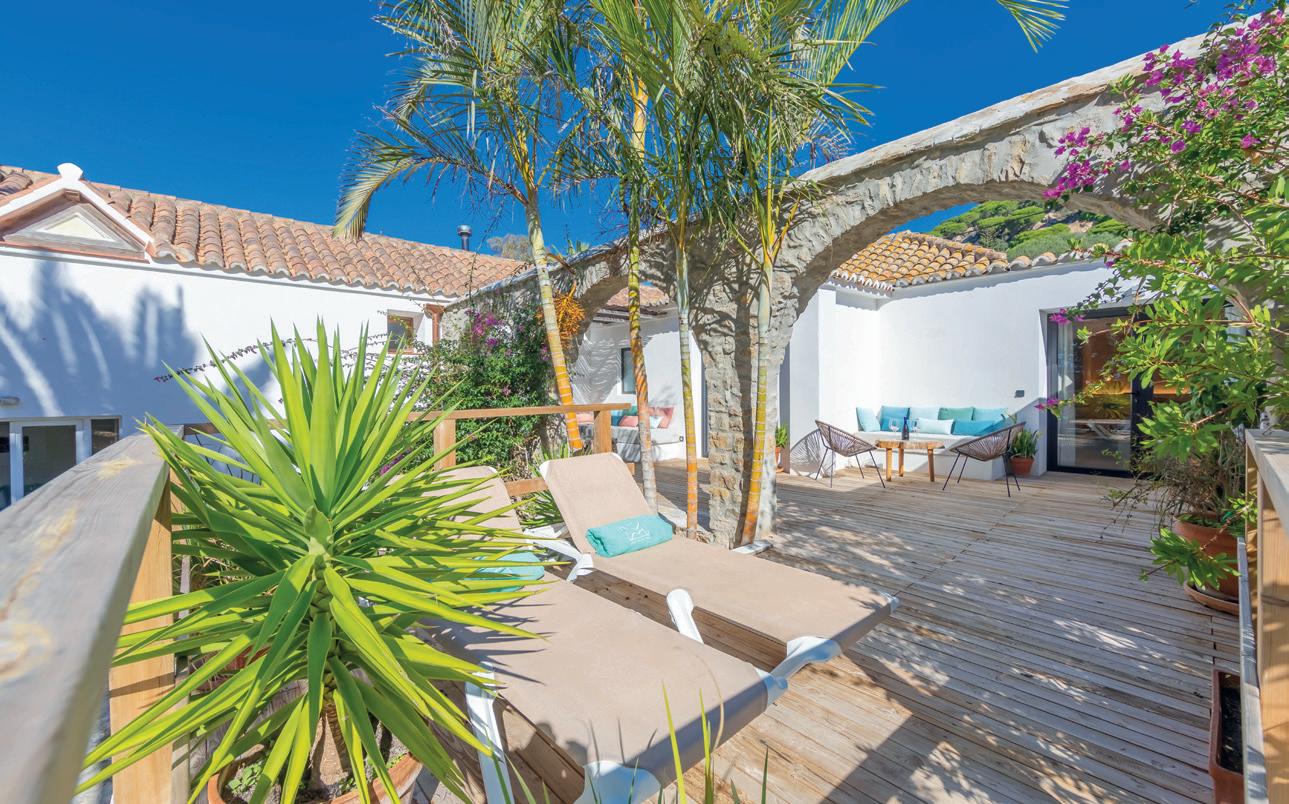
Meanwhile, around the corner, Las Palmeras, is the winner if you are looking for a pool to cool off after a day of sightseeing. Down on the nearby coast, at Canos de Meca, Madreselva is just 50m from the famous beach, as well as most of the local restaurants.
It has a sleepy courtyard, a small pool and the best breakfast on the coast.
In Zahara, meanwhile you have the excellent Hotel Antonio, sitting on one of Andalucia’s top beaches and with one of the best restaurants on the coast, which is practically fully booked all summer, unless you have a room.
In the heart of Zahara, you must definitely check out Hotel Pozo del Duque, which sits right on the best part of the beach and counts on two pools. Up in Tarifa, few places come better sited than Tarifa’s Hurricane Hotel and its sister Punta Sur.
The Hurricane has counted on celebrities and royals as regular guests
You have a choice of room in the older, more charming part of the hotel, or in the modern part nearer the main road. Either way, getting a room may be your best bet to get a booking in the restaurant, which is all but full until September.
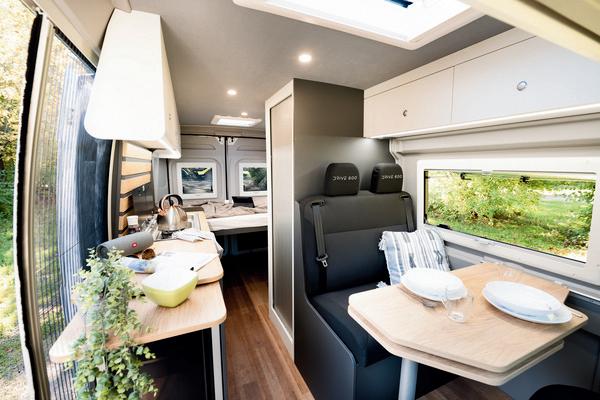
Set up in the 1980s, the Hurricane has counted on celebrities and royals among its guests, no surprise given its location in stunning gardens, at the end of celebrated Los Lances beach. Its sister Punta Sur sits in an amazing leafy enclave, protected from the famous Tarifa winds, with well appointed rooms and the best pool on the coast. Oh and a tennis court and great restaurant to boot.
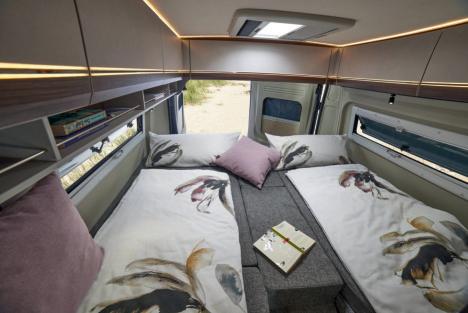
EXPANSIVE: The grounds at Punta Sur and (above) a suite at the Hurricane

